- Share full article

The World Through a Lens

Glimpses of Northern India’s Vanishing Nomads
For centuries, Kharnak nomads have raised livestock in one of the most hauntingly beautiful — and inhospitable — places on earth. Can their traditions outlast a generational exodus?
A mother counts sheep while carrying her son in the nomadic settlement of Zara, high in the Himalaya Mountains. Credit...
Supported by
Photographs and Text by Ronald Patrick
- Feb. 14, 2022
Fitting a small stone into a sling made of yak wool, Tsering Stobdan whipped his wrist and let the object fly, sending it soaring across the arid landscape. This, he told me, was how he protects his flock from predators and convinces straggling goats to return — just one of the countless skills he has learned in the last 60 years that allow him to rear his animals in such an unforgiving landscape.
Meanwhile, some 15,000 feet above sea level, I was simply trying to breathe. Here on the Changthang plateau, in a remote region of the Indian Himalayas, the altitude had left me lightheaded and gasping for air.

Tsering Stobdan is a member of a nomadic community known as the Kharnak, who for centuries have raised yaks, sheep and goats in the high plains of Ladakh, in northern India, one of the most hauntingly beautiful — if harsh and inhospitable — places on earth.
I first visited the area in 2016, in the middle of a long overland journey from Cambodia to Berlin. While passing through Nagaland, in northeastern India, I met a man from Himachal Pradesh, a neighboring state of Ladakh, who told me about the beauty of the Himalayas and the nomadic ways of the people who lived there. Based on his stories, I rented a motorcycle and headed to Leh, Ladakh’s capital.
In Leh I was connected with a young member of the Kharnak community who took me to meet his family on the Changthang plateau. There I explained my interest in their culture and my intentions of documenting their daily life. During my monthlong stay, they welcomed me graciously and allowed me to participate in nearly every aspect of their lives.
In 2019 I returned to Ladakh to visit with the families I’d met three years earlier. This time, I stayed for more than six weeks, moving between the community’s nomadic camps and a small town on the outskirts of Leh.
Once a flourishing tribe, the Kharnak community is now dwindling. Younger generations are being sent to nearby cities, where they can find better health care and educational opportunities. And while pashmina, the lightweight wool sheared from the bellies of Himalayan mountain goats, is a profitable product, life in the mountains is extraordinarily difficult, especially in the winter.
Today, fewer than 20 families are left to care for nearly 7,000 sheep and goats, along with several hundred yaks. And, like Tsering Stobdan, many of those who remain are growing older and are less able to cope with the daily demands of their work.
Climate change has also had a profound effect on the Kharnak’s way of life. Weather has become more difficult to predict, rain patterns in particular. Because of warming temperatures and the overuse of certain pastures, areas once thick with vegetation now lie barren. Small glaciers, which for centuries provided a reliable source of water, are receding.
As a result, Kharnak shepherds are forced to shuffle their flocks around more frequently and with less certainty.
Among these nomadic communities, families and animals live in strict interdependency. The milk from the sheep, goats and yaks — made into cheese, yogurt and butter — forms the foundation of the dairy-based diet.
Life for the Kharnak is difficult year-round. During the longer days of spring and summer, the shepherds milk and shear their animals in the early-morning hours before taking them out to graze, often walking more than 12 miles a day at altitude. Another round of milking and shearing takes place in the evening.
But the work doesn’t end there. Food must be cooked, sheds maintained, carpets woven, ropes fabricated, manure collected for fuel.
The real challenges, though, come in winter, when the temperatures drop to below -30 degrees Fahrenheit. Roadways are often blocked, and food becomes scarce. During these long months, from November to April, the livestock are enclosed in shelters and fed animal feed that’s provided by the government.
During the winter, most of the Kharnak move temporarily to a town called Kharnakling, on the outskirts of Leh, some 90 miles from their highland pastures. While away, they leave their livestock in the hands of a few family members and paid shepherds, who care for the animals during the harshest months of the year.
To afford their homes in Kharnakling, many of the nomads had to sell their animals and leave behind their traditional stone houses and tents in the mountains. And with more frequency, members of the community are remaining in Kharnakling year-round, having given up on their old way of life.
At their home in Kharnakling, I talked with a Kharnak elder and one of his grandsons. Dawa Tundup, who was 83 when I met him, had left behind his nomadic life to settle near the city, where he could live more comfortably and with better access to health care. He reminisced about his days in the highlands and dreamed of returning, he said, but acknowledged that life there had become untenable for most younger people, given the lack of proper schools.
Karma Tsiring, his grandson, had studied in Chandigarh, a city some 250 miles south. While he acknowledged that his life is in many respects easier than that of his grandfather, he also spoke about new forms of pressure that, in the past, his family members never had to deal with.
Everything in the city is about money, he lamented, adding that many urban values, centered on consumerism, were very different from the value system taught by his ancestors at home.
Later, while attending a series of traditional festivals held in the mountains, I watched as young men performed ancestral herding skills, including flinging stones on horseback. Here, the interest among younger generations in the culture of their elders was palpable, as most of them had come all the way from the city for this one event.
There were no winners or losers during the festivities. Instead, the riders were given a shot of chhang, a local Ladakh beer, and a khata, a traditional Tibetan scarf, every time they hit their targets.
It was a heartwarming scene: tribal elders instilling hard-earned wisdom among their enthusiastic descendants.
Still, one of the greatest concerns among the Kharnak is that their vast store of nomadic wisdom — the specific types of grass that certain animals need to survive, how meat is dried and preserved, how temporary shelters can be built with meager materials, among thousands of other examples — will be lost in the coming years.
Facing a generational exodus and the threats of a changing climate, their rich culture, amassed over centuries, may vanish in what amounts to the blink of an eye.
Ronald Patrick is a documentary photographer based in Portugal. You can follow his work on Instagram .
Follow New York Times Travel on Instagram , Twitter and Facebook . And sign up for our weekly Travel Dispatch newsletter to receive expert tips on traveling smarter and inspiration for your next vacation. Dreaming up a future getaway or just armchair traveling? Check out our 52 Places list for 2022 .
Open Up Your World
Considering a trip, or just some armchair traveling here are some ideas..
52 Places: Why do we travel? For food, culture, adventure, natural beauty? Our 2024 list has all those elements, and more .
Mumbai: Spend 36 hours in this fast-changing Indian city by exploring ancient caves, catching a concert in a former textile mill and feasting on mangoes.
Kyoto: The Japanese city’s dry gardens offer spots for quiet contemplation in an increasingly overtouristed destination.
Iceland: The country markets itself as a destination to see the northern lights. But they can be elusive, as one writer recently found .
Texas: Canoeing the Rio Grande near Big Bend National Park can be magical. But as the river dries, it’s getting harder to find where a boat will actually float .
Advertisement

- Australia & New Zealand
- Middle East
- North & Central America
- South America
- Travel Tips
- Travel Gear
- Packing Tips
- Travel Jobs
- Digital Nomad Visas
Select Page

The 12 Best Places in India for Digital Nomads to Stay & Work
Posted by Carolyn Boston | Aug 19, 2022 | Asia

India 's incredible diversity, varied landscapes, and colourful history make it a fascinating tourist destination. But not only intrepid globetrotters seeking cultural and spiritual experiences visit this South Asian nation. The country is slowly but steadily becoming a favourite among digital nomads.
The low cost of living is one of the reasons digital nomads choose India. The abundance of fully furnished but inexpensive co-living spaces specifically designed for remote workers is another. In addition, India is exceptionally well-adapted to new technology. There's IT support whenever you require it. Wi-Fi is widely available, moderately fast, and reliable, especially in big cities.
One of the best things about being a digital nomad is you can work while on the move and see as many local attractions as you desire. As a tourist hotspot, India boasts a plethora of breathtaking sights and hidden gems. Its extensive transportation network makes visiting just about anywhere possible, though travelling to some locations can be challenging.
India is a fabulous home for digital nomads. But not all parts of the country are suitable for remote work. Some areas may have power cuts and blackouts due to electricity shortages. Internet connectivity is often poor and unreliable outside big cities. Finding a quiet work spot can be difficult as most places are overcrowded.
Still, the pros of working remotely in India outnumber the cons. Think of the affordability, sightseeing opportunities, extensive accommodation options, enriching encounters, and the food. The trick is to pick the right location. And with a country as vast as India, you will definitely find one that fits your needs. To help you decide, here are the 12 best places in India for digital nomads.
1. Bengaluru

Widely regarded by locals as the Silicon Valley of India, Bengaluru (aka Bangalore) is a haven for digital nomads. Vast and highly urbanized, Bengaluru has modern infrastructure and a fast and reliable internet connection. There is a wide range of co-working spaces, nomad-friendly cafés, and even professional assistance should you need it. The district of Whitefield is the primary tech hub in the city, where many digital nomads and ex-pats reside, work, and hang out. Koramangala and Indiranagar are well-known business, shopping, residence, and nightlife areas.
Bengaluru is rife with historical and cultural attractions, full of impressive architecture, nature parks, museums, and a phenomenal culinary scene. The Tudor-style Bangalore Palace is one of the main draws for tourists. Other highlights include the Tipu Sultan's Summer Palace, the Government Museum, Lalbagh Botanical Garden, Cubbon Park, Bull Temple, and the National Gallery of Modern Art. If you're looking for somewhere quiet, head to Ulsoor Lake, a serene hideaway in the heart of the bustling city.
Bengaluru has a tropical climate, with mild summers and less heavy monsoons. You can get around the city using ride-hailing apps such as Ola and Uber. The food is typically rice-based, spicy, and mixed with various robust flavours.
Coworking Spaces
You'll never be short of fully-equipped and well-appointed coworking spaces in Bengaluru. These include Bunchworks , CoWrks New Indiranagar , ClayWorks Mini Forest and GoodWorks .
2. Hyderabad

Hyderabad is the largest and most populated city in the state of Telangana. This bustling IT hub is home to thousands of tech companies, including giants such as Apple, Amazon, Facebook, Google, and Microsoft. It is also a centre of trade, commerce, and manufacturing, with cigarettes, textiles, and pharmaceuticals as its chief products.
As a high-tech city, Hyderabad is one of the safest and friendliest places in India for digital nomads. It is also one of the first cities in the world to have 1 Gbps internet speed. Its most attractive feature, however, is its affordable cost of living which ranges between $627 to $825 a month. Accommodations ($75 to $167 a month) and coworking space rent ($50 to $150 per month) will probably take the bulk of your expenses.
The weather in Hyderabad is hot and dry, sometimes reaching a maximum of 49 °C. The temperature drops slightly during the monsoons, which start from the end of June to early October. When the weather is pleasant, try to see some of the city's most iconic landmarks, such as the Charminar, the Golkonda Fort, the Grand Tombs, and its many palaces and bazaars.
Hyderabad is never short of well-equipped coworking spaces that cater to the needs of digital nomads, whether they are working on a monthly or hourly basis. Among the best are Regus , Innov8 , CoWrks Skyview , and Nano Space .

Captivating, cosmopolitan, and charmingly chaotic, Mumbai is India's largest city and financial capital. Dubbed the City of Dreams, it has the most millionaires and billionaires among all Indian cities. But it is best known as the heart of Bollywood, the country's film industry. Mumbai may not be as tech-savvy as Bangalore or Hyderabad, but it is among the world's fastest-growing start-up hubs. With its world-class restaurants, trendy bars, and varied entertainment, it is one of the best places in India for digital nomads seeking a vibrant nightlife and an active social life.
Mumbai is about 82 percent cheaper than New York and 72 percent cheaper than London . The average cost of living in Mumbai is around $1734 per month. Monthly rent for a one-bedroom apartment in the city centre is between $450 to $588, while a coworking lease is approximately $75 for a hot desk, $115 for a fixed desk, and $255 for a private office. Mumbai also has a lot of neighbourhood cafés that are conducive to remote working.
Located on the southwestern coast of India, Mumbai enjoys a tropical climate. It is a popular tourist destination, boasting three UNESCO World Heritage Sites: Chhatrapati Shivaji Maharaj Terminus, Elephanta Caves, and a collection of 19th and 20th century Victorian and Art Deco buildings. Thanks to its lively social scene, you will likely run into other digital nomads during your stay in the city.
Mumbai is home to several coworking spaces with modern facilities and dependable internet connections. Among the best are Workafella , Divinehub , The Boardroom , and WorkCampus .

The Indian capital is the perfect blend of the old and new. Here fancy restaurants, posh shopping centres, and cutting-edge tech parks mix with traditional bazaars, ancient forts, stunning temples, and historical landmarks. As India's main transport, commercial, cultural and political hub, Delhi is easily the busiest of all cities in the country. If you want to truly experience diversity and don't mind the hustle, noise, and traffic of a sprawling metropolitan, Delhi is the perfect base for you.
Surprisingly, Delhi is cheaper than Mumbai, with an average cost of living of $946. Prepare to shell out around $214 for a one-bedroom studio apartment and $88 per month for coworking space. You can get a meal for $2.51 at a medium-range restaurant and $0.84 for coffee. In addition, Delhi has a decent internet speed, with an average of 12 Mbps. It also has plenty of coffee shops that make suitable workspaces for digital nomads, though some may require a working local phone number to access their WiFi.
Located in the northern part of India, Delhi is notorious for its extreme weather, with dry spells that can go as high as 52°C and chilly winters that can drop to as low as 7°C. But the city's phenomenal food scene is enough to make up for its erratic climate.
A highly-urbanized area, Delhi offers digital nomads a wide range of coworking space options. These include Avanta Business Centre , Hustle Cowork , Daftar Cowork , and Awfis Connaught Place .

Ocean views from your office desk? You can soak up the sun, sand, and sea without missing out on work. Goa is known for its lovely weather, great food, and a vast coastline dotted with sandy coves. Where there are beautiful beaches, there's bound to be booze and boisterous fun, and this is how Goa became the party capital of India.
North Goa is perfect for digital nomads who want to combine business with a little (or a lot) of party time thrown in. It also makes a fantastic base for adventurers seeking adrenaline-fueled watersports in their free time. But if you prefer peace and solitude, head to South Goa for its secluded beaches, scenic drives, and untouched natural beauty. Whether you choose north or south, you will be amazed by the low cost of living, which ranges between $750 to $850 per month. Some of the best places to stay in Goa for digital nomads are the bohemian village of Anjuna, the picturesque Parra, the Portuguese-influenced Panaji, the hippie-inspired Arambol, and the palm-fringed Palolem.
If there is one downside to working remotely in Goa, it's the unreliable internet connectivity, especially in more secluded areas. There are also power cuts that often last for hours. But as more digital nomads arrive in the state, a number of coworking spaces have cropped up, particularly in the northern area. You can sidestep slow internet speed and blackouts by using a coworking space. There are also work-friendly cafés suitable for those seeking a quiet spot for only a day or a few hours. If you'd rather stay at home, you can use data plans for some reasonably reliable internet access for less than $10 a month.
For hassle-free internet access and cutting-edge facilities, check out these coworking spaces in Goa: The Cove Goa , 91Springboard , NomadGao , and Clay .

About 91 miles from Mumbai, less than a four-hour drive away, lies the smaller and quieter but richly cultural and historical city of Pune. From 1674 to 1818, it was the home of Peshwas, the old prime ministers of the Maratha Empire. Over the years, Pune has become a vital industrial and financial hub, focusing on automobile manufacturing and software development. However, its most prestigious designation is the ‘Oxford and Cambridge of India' due to its many colleges and universities.
Like in other parts of India, the living cost in Pune is very affordable. As a digital nomad, you can live a semi-luxurious lifestyle in the city for as low as $755 a month. Internet connection is relatively fast, reliable, and cheap. Additionally, Pune has a lot of coworking spaces equipped with modern facilities to assist remote workers. Getting around is easy, and transportation is inexpensive. There are also excellent residential projects and accommodations in high-end neighbourhoods such as Koregaon Park, Kothrud Baag, Viman Nagar, Hinjewadi, and Deccan.
Pune is home to several well-known coworking spaces, where you can work and interact with other digital nomads. Some of these offer spectacular views of city and charge as low as $5 a day. Check out Friyey Space , Cowerkz , Anchor Coworking , and Inscape .

Lying along the Nag River, Nagpur is widely considered the cleanest, second greenest, and most livable city in India. Apart from being a vital commercial and political centre, it is famous throughout the country as the Orange City due to the variety of citrus fruits cultivated in the region. Nagpur is home to traditional industries that manufacture handicrafts, exquisite fabrics, paper, ceramics, glass, and refrigerators. Over the years, however, it's slowly expanding as a tech hub, attracting digital nomads from all corners of the globe.
If you're looking for a less bustling base, Nagpur offers attractive options, including well-appointed coworking spaces and trendy cafés with dependable internet connectivity. Like the rest of the country, the cost of living is low, around $665 a month. Coworking membership is about $63, while rent for a one-bedroom studio apartment in the city centre ranges from $69 to $167 monthly. You can buy a filling and delicious meal at a mid-range restaurant for $1.76.
It's easy to find coworking spaces in Nagpur. The tricky part is finding one that suits your needs as a digital nomad. Some of the best places to work remotely are Working Avenue , Eureka Coworking , Cube Space , and Bootstart CoWork .

The historic city of Hubli may not be the first thing that comes to mind when you think of the best places in India for digital nomads. But this commercial and industrial hub has so much to offer, especially if you want a tranquil but modern landscape. You can live comfortably in Hubli for only $719 a month. The internet service is decent and affordable, while transportation is efficient. One downside, however, is there aren't many coworking space options. Still, you can find trendy cafés fit for remote work.
In your free time, visit the city's attractions such as the ancient Chandramouleshwara Temple, Unkal Lake, the Utsav Rock Garden, and Nrupatunga Betta hill, from where you can enjoy lovely sunsets and city views.
Hubli doesn't have a lot of coworking space options, but it has The Coworking Spaces , which provides modern facilities for digital nomads. There are also work-friendly coffee shops where you can find a quiet spot and a fast internet connection.

If you want to escape the hectic lifestyle of India's big cities, head to Mysore . This quaint city is the cultural capital of the Karnataka state, and rightly so. It is home to heritage landmarks, such as the majestic Mysore Palace, the centuries-old Devaraja Market, and the enchanting Sri Chamundeshwari Temple on the peak of Chamundi Hills. The city celebrates the Dasara Festival every October, drawing thousands of local and foreign visitors.
Mysore may not be as glamorous as Mumbai or as modern as Delhi, but it is just as fascinating. Better yet, it is more organized, greener, and safer. It is also cheaper, with an average cost of living of $815 a month. Unlike other small cities, Mysore has excellent coworking spaces and cafés with reliable WiFi.
You'll find excellent working space at SproutBox Mysore , K-tech Innovation Hub , Wekreatespace , and Myofficespace .

Agra sits on the bank of the Yamuna River in the northern state of Uttar Pradesh. It is best known as the home of the iconic Taj Mahal , one of the most easily recognizable landmarks in the world. However, this incredible monument is just one of the city's many gems. There's the awe-inspiring Agra Fort, the ancient sandstone city of Fatehpur Sikri, the lush Mehtab Bagh, the elaborate Itimad-ud-Daulah's Tomb, and the vibrant Kinari Bazaar.
Agra is not as technologically advanced as Bangalore or Hyderabad. But it is one of the best places in India for digital nomads who want to delve into the country's rich history and unique architecture. As expected, the cost of living is affordable, ranging between $825 to $959 a month. Internet connection is moderately fast, with an average speed of 10 to 12 Mbps.
Unfortunately, Agra has very limited workstations for remote workers. Space n Mugs is the city's first coworking space. It also doubles as a café. The city, however, has a few coffee shops that provide good internet connections.

Popularly known as the Pink City, Jaipur boasts elaborate forts and magnificent palaces tinted in a bright pink hue. Like Agra, Jaipur is more of a tourist destination and less of an IT hub. It doesn't mean Jaipur isn't cut out for digital nomads, as it does have a thriving tech industry. But if you're looking for a less expensive alternative to India's bigger tech cities, Jaipur makes a perfect and exotic hideaway.
Jaipur is one of the cheapest places to live and work in India. You can have a comfortable lifestyle in the city for as low as $661 a month. Internet connection is relatively fast, with an average download speed of 12 Mbps for mobiles and 48 Mbps for fixed broadband.
Jaipur attracts thousands of travellers annually, including digital nomads and remote workers. Because of this, it has several coworking spaces. Some of the top ones are WaveX Cowork , Cowork'in Jaipur , Collabo Corner , and MrCowork .
12. Varanasi

Regarded as the nation's spiritual capital, Varanasi is one of the most intriguing places in India for digital nomads. Every year, it draws thousands of pilgrims, who bathe in the sacred waters of the Ganges River or worship at sunset and sunrise ceremonies. This 3000-year-old city is home to approximately 23,000 temples, including the golden Kashi Vishwanath and Durga, famous for its monkeys living in the nearby trees. Silk production, carpet weaving, and tourism are the top industries in Varanasi, but it is taking small steps towards developing a tech sector.
The best thing about staying in Varanasi as a digital nomad is the affordable cost of living. You'll get by with $807 a month. The city is also ideal for experiencing India's unique cultural and spiritual offerings.
There are barely any coworking spaces in Varanasi, but it has plenty of work-friendly coffee shops that provide fast and free internet connections. Check out The Place Ngo Outlet Cafe , Café Café Varanasi , Namo Café , and Flavours Café .
About The Author
Carolyn Boston
"I’m an avid traveller who has been travelling the world on a budget for several years now. Recently, I quit my 9 to 5 job so I can discover more of the world without having to worry about limited vacation leaves!
Related Posts

8 Best Wellness Retreat Destinations – Planning & Packing Tips Included
December 21, 2023

Common Travel Scams in Southeast Asia
July 23, 2016

Türkiye Digital Nomad Visa – Everything You Need to Know
April 18, 2024

Top 6 Destinations For Solo Female Travellers In 2024
February 23, 2024
Recent Posts

Digital Nomad Visa

Top Cities For Digital Nomads Latin America

Pin It on Pinterest
Premium Content

India’s Lost Nomads
India’s 80 million wanderers are torn—clinging to centuries-old traditions while the modern world strips their identities away.
In their illustrious past the Gadulia Lohar forged armor for Hindu kings. Today these blacksmiths pitch camp on the outskirts of tiny Indian villages and make simple goods from metal scrap.
On a warm February day I arrived at such a camp in India's northwestern Rajasthan state, carrying bars of soap to aid my introduction. But as I approached, men, women, and children surrounded me, grabbing the bag and shredding it, spilling the soap onto the dirt. A maelstrom of curses and tangled limbs ensued. It ended with at least one older child in tears.
Such desperate behavior hints at a larger story about the nomads who have roamed the subcontinent for hundreds, sometimes thousands, of years. The Gadulia Lohar (their name comes from the Hindi words for "cart," gaadi, and "blacksmith," lohar ) are among the best known; others are herders, such as the Rabari, famous throughout western India for their bulky turbans and familiarity with all things camel. Some are hunters and plant gatherers. Some are service providers—salt traders, fortune-tellers, conjurers, ayurvedic healers. And some are jugglers, acrobats, grindstone makers, storytellers, snake charmers, animal doctors, tattooists, basketmakers. All told, anthropologists have identified about 500 nomadic groups in India, numbering perhaps 80 million people—around 7 percent of the country's billion-plus population.
These wanderers were once part of India's mainstream. They meshed comfortably with the villagers who lived along their annual migration routes. In the 19th century, though, attitudes began to change. British administrators disparaged them as vagrants and criminals, sowing prejudice that survived colonial rule. The rapidly modernizing India of call centers and brand-obsessed youth has scant use for tinkers or bear trainers, and pastoralists are in a losing battle with industry and urban sprawl. Fragmented by caste, language, and region, the nomads are ignored by politicians and, in contrast to other downtrodden groups, have reaped few benefits from social welfare schemes.
Just defining the term "nomad" is problematic in India. Many groups that once unambiguously fit the category have clustered in slums in a process anthropologists call sedentarization. Yet India remains a rigidly stratified society in which birth is often synonymous with destiny. So, mobile or not, India's nomads are united by a history of poverty and exclusion that continues to this day: arguably the biggest human rights crisis you've never heard of.
To the lonely few who have taken up the nomads' cause, a big part of the solution is to provide them with roofs over their heads, or at least an address, which would make it easier for them to get welfare benefits and enroll their kids in school. But such efforts have met fierce resistance from villagers and local politicians, who see the roamers as grubby outsiders. Practical obstacles aside, a larger question looms: Do the nomads have to stop being who they are in order to survive?
AFTER THE RUCKUS over the soap, my morning arrivals were easier. The next day the camp was quiet except for an occasional racking cough. Smoke rose from a crude earthen forge, women took turns at a goatskin bellows while men and boys pounded scrap metal on small anvils, shaping it into cooking spoons, axheads, and other simple wares.
My interpreter and I counted 23 people among four Lohar families, all related. They carried their belongings in five open carts built from acacia and teak and decorated with lotus-blossom carvings, brass studs, and painted Hindu swastikas. All were baffled by my presence, and some were unabashedly hostile. "Whatever we say, whatever we do, you write it down!" one woman complained. But a few were more welcoming. Lallu and Kailashi were a couple in their 40s—the Lohar could only guess at their ages—with four children. Dressed in a grimy cotton dhoti, Lallu was small and wiry, with gold earrings shaped like seedpods and an amulet dangling from a cord around his neck. Kailashi was thin and hollow-eyed, her breastbone tattooed with om symbols and her matted hair covered by a purple shawl. Both had bad teeth and frequently interrupted their labors to light cheap, hand-rolled cigarettes known as bidis from the embers of their forge.
Kailashi was embarrassed about the soap melee. "I am poor, but I have my morals," she said. "These people have lost that."
Her oldest child, Kanya, fetched a rope cot and invited me to sit. About 20 years old, Kanya was vivacious and strikingly pretty, with broad cheekbones and carefully plucked eyebrows. She also had a forceful personality. "Stop acting like a thug!" she scolded one of her cousins when the young man persisted in pestering me for handouts. Kanya had recently returned to her family after fleeing an abusive husband.
I asked Lallu where he was from, expecting him to name his birthplace, or perhaps the town where the family camped for the summer, when the weather is too hot for traveling. Instead he named a place he had never even seen.
"Chittaurgarh," he said. And then he raised his fist above his head in a kind of salute.
Chittaurgarh is a massive sandstone fort on a plateau in southern Rajasthan. Built in the seventh century, it was the capital of Mewar, a powerful kingdom of the high-caste Hindu warriors known as Rajputs. The Lohar are Rajputs too, according to their oral tradition. They served the kingdom as weapon-makers. But in 1568, Chittaurgarh was captured by Akbar, the great Mogul emperor, and the Lohar fled.
Shamed, they committed to a life of wandering and self-denial, vowing never to spend the night in a village, light a lamp after dark, or even use rope to draw water from a well—pledges known collectively as the Oath. (They also vowed to do without comfortable beds and even now travel with their cots turned upside down, in symbolic observance of the ancient promise.)
Still, they had to earn a living, so they put their metalworking skills to more prosaic use. Their kitchenware and farm tools were prized for their durability and, in the age before manufacturing and low-cost Chinese imports, found no shortage of buyers.
India once teemed with such traveling niche workers. Many were first described in detail by a British civil servant, Denzil Ibbetson, in an 1883 report based on census data from the Punjab region. Among them were the Qalandari ("their ostensible occupation is that of leading about bears, monkeys and other performing animals"); the Nats ("acrobatic feats and conjuring of a low class"); the Gagra ("catching, keeping and applying leeches"); and the Kanjar ("curing boils"). "They are not pleasant people to deal with," Ibbetson concluded, "and we are thrown but little into contact with them."
Ibbetson's observations reflected the prejudices of the day and the widely held belief in Britain that nomads—and especially the dark-skinned Romany-speaking people known as Gypsies—were incorrigible agents of vice. Such attitudes transferred easily to the subcontinent. In 1871, colonial authorities passed a notorious piece of legislation called the Criminal Tribes Act, which identified dozens of nomadic groups as, in effect, criminal by nature. Itinerant families were required to register with police, and thousands of men, women, and children were forcibly corralled in work camps, some of them run by the Salvation Army, according to the book Dishonoured by History, by Indian sociologist Meena Radhakrishna.
After independence in 1947, the law was replaced by a comparable if less draconian measure, the Habitual Offenders Act, and the stigma of criminality lingers. "I would never have imagined that the descendants of these communities would be viewed with exactly the same prejudices," Radhakrishna says. "It's not that they don't want to be a part of society—they are not allowed to be."
THE WOMEN were fixing dinner. With a mortar and pestle, Kailashi crushed chili peppers for a vegetable stew, while Kanya cooked chapatis, the ubiquitous Indian flatbread, over an open fire. Night was coming, so they had to work fast, because of the prohibition against lamps. The Lohar had arrived in the village a few days earlier and weren't sure how long they would stay. It depended on the availability of work. As one of them said, nodding in the direction of a nearby buffalo, "There is not much of a difference between my life and that buffalo's life. He's roaming for food, and we also roam for food."
It was hard to argue with the comparison. The Lohar had never been to school. They relieved themselves in fields and slept under the stars, except during monsoon season, when they rigged their carts with awnings and encircled them with low mud walls to prevent flooding. They had never heard of the United States. When I first turned up, Kanya assumed—despite my white skin—that I was from Jaipur, the state capital, which was 40 miles distant and marked the geographic limit of her experience. "Ahhh," she said when I explained the airplane. "You came in a cheel gaadi." An eagle cart.
LIKE OTHER NOMADIC GROUPS, the Gadulia Lohar occasionally have been targeted for attempts at rehabilitation. In 1955, Jawaharlal Nehru, India's first prime minister, argued in a famous speech at Chittaurgarh that the blacksmiths' honor had been restored with the establishment of Indian sovereignty and appealed to them to cease their wandering. Thousands who had traveled to the fort by bullock cart and train watched as Nehru ceremonially righted an overturned cot, then invited them to enter by traversing a bridge strewn with rose petals. A boarding school for Lohar boys was established nearby, and housing and employment schemes were launched.
The initiatives never came to much. A settlement where the blacksmiths were supposed to learn farming was abandoned after two girls died of illness—interpreted as a warning to those who would violate Lohar tradition. Others fizzled because of corruption and poor planning.
But the nomads' cause was kept alive by human rights groups, and in 2005 the Indian Parliament formed a temporary commission to address their plight. Its chairman, Balkrishna Renke, was uniquely qualified for the job: Born into a group of mendicants, he spent his early childhood roaming among villages in western India, literally singing for his supper, before a charity took him in and gave him an education.
For Renke the goal is clear. "If they want to have a right of citizenship, education, and participate in modern progress, they have to settle," he says. Renke is under no illusions about the scale of the challenge. India's creaky but expansive social welfare system has long been geared toward redressing the inequities of caste. Because the nomads are dispersed among many castes, they have garnered few of the affirmative action benefits—and none of the political clout—that have accrued to other persecuted groups, such as the Untouchables. "There is no organization. There is no awakening," Renke says. "They are unheard people."
AFTER A WEEK in the Lohar's company, I was beginning to understand one reason: They were not easy to be around. Although I had made clear at the outset that I would not give them money, I tried to remain in their good graces by dispensing small gifts—usually bags of lentils and flour—and regularly treating them to chai from a nearby vendor. But for some it was never enough. Kartar, Lallu's older brother, badgered me constantly for kalakand, a kind of milk pudding, and sulked when I failed to oblige. His wife, Pooni, was no less insistent. "Give me money for chai!" she said by way of a greeting one morning, and whenever I caught her eye, she plucked at her ragged tunic or signaled her desire for bidis by raising two fingers to her lips. I learned not to catch her eye.
You May Also Like

These ancient nomads made human leather out of their enemies

She was Genghis Khan’s wife—and made the Mongol Empire possible

Isolated Nomads Are Under Siege in the Amazon Jungle
Even Lallu, whom Kailashi had pronounced "too shy to beg," was not above hitting me up now and then.
"I didn't eat yesterday because my hen died," he told me one afternoon. "I was very sad."
A dog had killed it. I murmured condolences.
"A new hen costs 300 rupees."
Sympathetic nod.
"You pay 100 rupees."
Still, I couldn't help but admire the Lohar. They were skilled artisans and hard workers and took obvious pride in what they do. One afternoon a gray-haired woman from the village came to buy a spoon. "I may charge you a few rupees more, but I make good-quality stuff," Kartar promised. Squatting in the shade of a neem tree, he heated a piece of iron until it glowed, then positioned it on an anvil with tongs while Pooni, her feet planted wide, flattened it with a sledgehammer. When the metal was thin and malleable, Kartar grabbed a smaller hammer and deftly teased out the shape of the long-handled spoon, pounding its surface to a lustrous, dimpled finish.
He filed its edges smooth, then handed it to the woman with a flourish and an expression of respect. "Take it, mother," he said, receiving 30 rupees—about 65 cents—in return.
The Lohar cared about their craft because they cared about their identity. All but the youngest knew the story of Chittaurgarh, and weeping children were silenced with the command, "Don't cry—you're a Lohar." Kartar's son Arjun was the living expression of Lohar pride. About ten years old, he had wide, expressive features and the build of a junior wrestling champion. Arjun took unconcealed pleasure in his prowess with a sledgehammer, hoisting it tirelessly as his father urged him on with shouts of "Harder! Faster!"
FOR SEVERAL DAYS I had been asking the Lohar when they planned to move on, and each time the answer was the same: tomorrow. Then tomorrow finally came. I showed up at the campsite one morning to find them loading their carts. Tools were stowed in compartments, bullocks muscled into harnesses, bedding folded and piled on board along with cots, fire-blackened cooking vessels, and family members too young or infirm to walk alongside. Finally, on some unspoken signal, the ragged caravan lurched forward, ironbound wheels clattering on the pavement. Oncoming traffic, mostly motorcycles and homemade diesel-powered jalopies called jugards, gave way as the Lohar moved down the narrow road past mustard fields and rippling winter wheat.
It was hard not to be captivated by the romance of the scene. Here, after all, was a lost tribe in motion. Blot out the sputtering, Indian-made Hondas and the orange-and-white microwave towers, and the Lohar were virtually indistinguishable from the proud Rajput artisans who fled Chittaurgarh nearly half a millennium ago. What would these medieval time travelers forfeit if they gave up their wandering and entered society's mainstream? In terms of their culture and traditions, probably everything.
It seemed like a high price to pay. Lohar people I met everywhere cling to their nomadic identity. Yet most made it clear that they live out of their carts for the simple reason that they have no other choice.
"I will be the most happy person in the world if I get some land and a house," Lallu told me one night. Kanya, too, ached for the comforts of a home she'd never known. Their yearning was easy enough to grasp. Even in this rural pocket of Rajasthan, there was evidence of India's rapid economic transformation in the cell phones carried by many of the Lohar's customers (though not the Lohar themselves) and the satellite dishes sprouting from the larger farmhouses. It seemed natural that they would want a share of this new prosperity. Moreover, their consciousness has been raised. Like other nomadic groups in northern Rajasthan, the Lohar have been encouraged by local land-rights activists to apply to the local governing council for land and housing. Besides providing them with shelter, this also would satisfy the Indian bureaucracy's need for a fixed address, without which access to welfare benefits, such as subsidized cooking oil and free medical care, is quite difficult.
But so far their efforts have been for naught. Officials in one town where the Lohar had made an appeal said they had no land to give—and that even if they did, they doubted the Lohar would take it. "They don't want to settle," one official said dismissively. "They want to live on the road."
The same response came in Thana Ghazi, about 60 miles northeast of Jaipur, where local officials had reluctantly provided plots for a dozen Lohar families on a spur of the town's busiest thoroughfare. The blacksmiths lived in one-room brick houses with their carts and forges out front. But after five years, the town had provided no electricity and had turned down their application for a communal latrine.
The pradhan, the senior elected official for the district, confirmed that he had resisted providing the settlement with services because he didn't think the Lohar should have been permitted to settle there in the first place. It was too close to a girls' hostel and a high school, he explained, and they would be better off on another tract outside of town.
A few days after my inquiry, workers showed up at the settlement to begin wiring the homes for electricity. Some townspeople made no effort to hide their hostility. As I left the settlement with a charity worker one afternoon, three teenage boys in slacks and sweaters jeered at us from the roof of the adjacent high school. "What are you going to do for them?" one shouted. "They are nomads, and they will always be nomads."
It was early March, and the spring harvest was almost upon Lallu and Kailashi and their clan. Wheat fields turned golden under a sun that grew hotter by the day. At their campsite in the new village, the Lohar found refuge in the shadows cast by their carts and splashed themselves cool at a nearby well.
Spring is normally a hopeful time in the Rajasthan countryside, but for Kanya this season was filled with dread. Her parents had decided that after the Hindu festival of Akha Teej, in April, she would return to live with her husband and his family. "The boy is very bad," she had told me. She said that he and his mother had forced her to work all day on the bellows, and he'd beaten her when she resisted. But Kanya knew that divorce was unthinkable for a woman in her position. "I can't do anything," she said. "If I stay here I'll suffer. If I go there I'll suffer. It's all a matter of destiny."
Kanya's powerlessness is compounded by her gender, but it is shared to some degree by all the Lohar, whose low social standing leaves them vulnerable to the pressures and prejudices of rural India. One afternoon I turned up at the campsite to learn that the Lohar had been visited the day before by followers of the Rashtriya Swayamsevak Sangh, or RSS, India's main Hindu nationalist group. Extremists from the group had gotten wind of my presence, assumed that I was a Christian missionary, and threatened to beat me. The Lohar were plainly terrified and pleaded with me to leave.
Eventually I was able to make clear that my purpose was journalistic, not evangelical. Local RSS workers apologized and even accompanied me to meet with the Lohar, who by now had moved a second time, to a trampled pasture on the outskirts of another village. The RSS urged the Lohar to cooperate, but my relations with the blacksmiths never really recovered.
Wary from the start, they saw little reason after the trouble with the RSS to tolerate me any longer. "You give us a handful of flour, and yet you're writing so much," Kartar said, glaring. "Go now. We've had enough of you."
One afternoon I drove out from Jaipur in a final attempt at reconciliation. Unfortunately, Lallu and Kailashi were not around to lend support. They had taken a bus to the Rajasthan capital, where Kailashi hoped to find treatment for her chronic cough and fever. The others would hardly speak to me, and some turned their backs at my approach. I took the hint and walked back to my car. "Don't come back," Kartar shouted.
Before I drove away, I turned and looked at the Lohar for the last time. Business had dried up and their forges had all gone cold. Tomorrow, or perhaps the next day, they would pack up their carts and move on, as they had done so many times before. But for now they just looked listless and weary. They looked like travelers who had reached the end of the road.
Related Topics
- PEOPLE AND CULTURE

Photo story: a pilgrimage to the rock-hewn temples of Hampi, India

Why Iran's nomads are fading away

Stranded on the Roof of the World

At Europe’s largest Gypsy and Traveler gathering, nomads uphold traditions old and new

Camels are disappearing in India, threatening a centuries-old nomadic culture
- Environment
- Perpetual Planet
- History & Culture
- Paid Content
History & Culture
- Mind, Body, Wonder
- Terms of Use
- Privacy Policy
- Your US State Privacy Rights
- Children's Online Privacy Policy
- Interest-Based Ads
- About Nielsen Measurement
- Do Not Sell or Share My Personal Information
- Nat Geo Home
- Attend a Live Event
- Book a Trip
- Inspire Your Kids
- Shop Nat Geo
- Visit the D.C. Museum
- Learn About Our Impact
- Support Our Mission
- Advertise With Us
- Customer Service
- Renew Subscription
- Manage Your Subscription
- Work at Nat Geo
- Sign Up for Our Newsletters
- Contribute to Protect the Planet
Copyright © 1996-2015 National Geographic Society Copyright © 2015-2024 National Geographic Partners, LLC. All rights reserved
- South Africa
- Afghanistan
- North Korea
- Adventure + Outdoors
- Amusement Parks
- Backpacking Trips
- Boating + Cruises
- Budget Travel
- Bus + Train Travel
- Coasts + Islands
- Country Trips
- Fall Vacations
- Family Vacations
- Green Travel
- Heritage + History
- Honeymoons + Romance
- Inspiration + Guide
- Landmarks + Attractions
- LGBT Travel
- Markets + Bazaars
- National Parks + Reserves
- Nature + Wildlife
- Parks + Gardens
- Pets + Animals
- Photography
- Airlines + Airports
- Budgeting + Currency
- Business Travel
- Celebrity Travel
- Customs + Immigration
- Deals + Rewards
- Family Travel
- Hotels + Resorts
- Luggage + Packing Tips
- Offbeat News
- Photography Tips
- Responsible Travel
- Solo Travel
- Tech + Gear
- Travel Etiquette
- Travel Warnings
- Bars + Clubs
- Celebrity Chefs
- Restaurants + Cafés
- Wine + Vineyards
- Beach Hotels
- Boutique Hotels
- Hotel Openings
- Hotel Reviews
- Luxury Hotels
- Mountain + Ski Resorts
- Spa Resorts
- Vacation Rentals
- Asia Cruises
- European Cruises
- Festivals + Events
- Museums + Galleries
- Style + Design
- Travel’s Best
- Hotel with Agoda.com
- Hotel with Booking.com

Guide to Shenzhen nightlife — Top 5 things & what to…
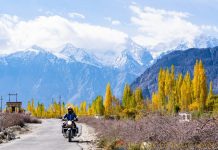
Ladakh trip cost per person from Delhi — How much does…
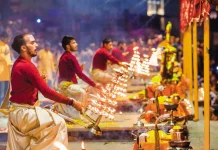
India travel tips — 25+ what & things to know before…

Must eat in Hong Kong — 7+ must eat & must…
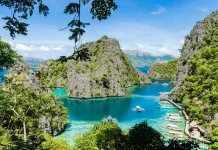
Coron itinerary 5 days — What to do & how to…

India trip tips — 9+ things to know before going to…

All about tips in Nepal — How much to tip in…

Cambodia travel tips — 15+ what to know & things to…

When is the best time to visit Kyoto? — The best,…

Must eat in Georgetown — 10+ famous, must-eat & best street…

Must eat in Melaka — 10+ famous Malacca street food &…

Hong Kong Soya sauce Chicken Rice and Noodles — The first…

Top hotels in Siem Reap — 8+ best places to stay…

Top hotels in shanghai — 15+ best hotels in Shanghai

Top hotels in Malacca — 10+ good & best hotels in…

Top places to stay in Bali — Top 10 best areas…

10 must-know things for your best first time European river cruise

Top 3 best luxury cruises in Halong Bay, Vietnam

Cherry blossom festival Korea 2024 — Top 5 cherry blossom festivals…

Ghibli museum blog — The fullest Ghibli museum guide for first-timers

Kyoto festival — Top 10 best events & most famous festivals…

National Palace Museum Taipei blog — What to see in National…

Japanese waterfall — Top 10 most beautiful waterfalls in Japan in…

19+ most beautiful towns in Europe every tourist need to visit…

Georgia travel photos — 20+ captivating photos show Georgia is heaven…

Explore Damnoen Floating Market — The oldest floating market of Thailand

Visiting Fenghuang Ancient Town — One of the most charming ancient…

Mekong Delta travel blog — Beyond rivers of Southwestern Vietnam

14 reasons why you should travel when you are young

Shigaraki Tanuki – An animal symbol of good luck in Japan

Living in the charms of cave houses in Andalucia, Southern Spain

20+ jaw-dropping tiny homes around the world
India itinerary 10 days — how to spend 10 days in india perfectly.
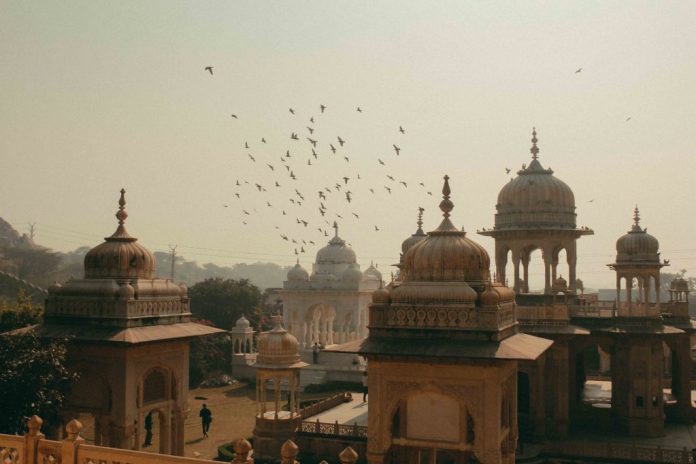
India is a country that I always want to visit once in my life. But year after year, I keep delaying this trip. Finally, I also made the trip in late 2021 and early 2022 to end the old year and start the new year brilliantly. And India gave me a lot of good and bad experiences, new flavors and especially its diverse and colorful Indian culture. So, what to do and how to spend 10 days in India perfectly? Let’s check out my suggested India itinerary 10 days (India travel itinerary, India trip itinerary) in my field trip to the incredible land of India.
Ladakh trip cost per person from Delhi — How much does Ladakh trip by bike cost?
India travel tips — 25+ what & things to know before traveling to india.
- Ladakh travel tips — 11+ Ladakh tips & things to know before going to Ladakh
- What to buy in Ladakh? — Top 9+ Ladakh souvenirs & must things to buy in Ladakh
- Zanskar Ladakh travel blog — The ultimate guide with top things to do in Zanskar Valley for first-timers
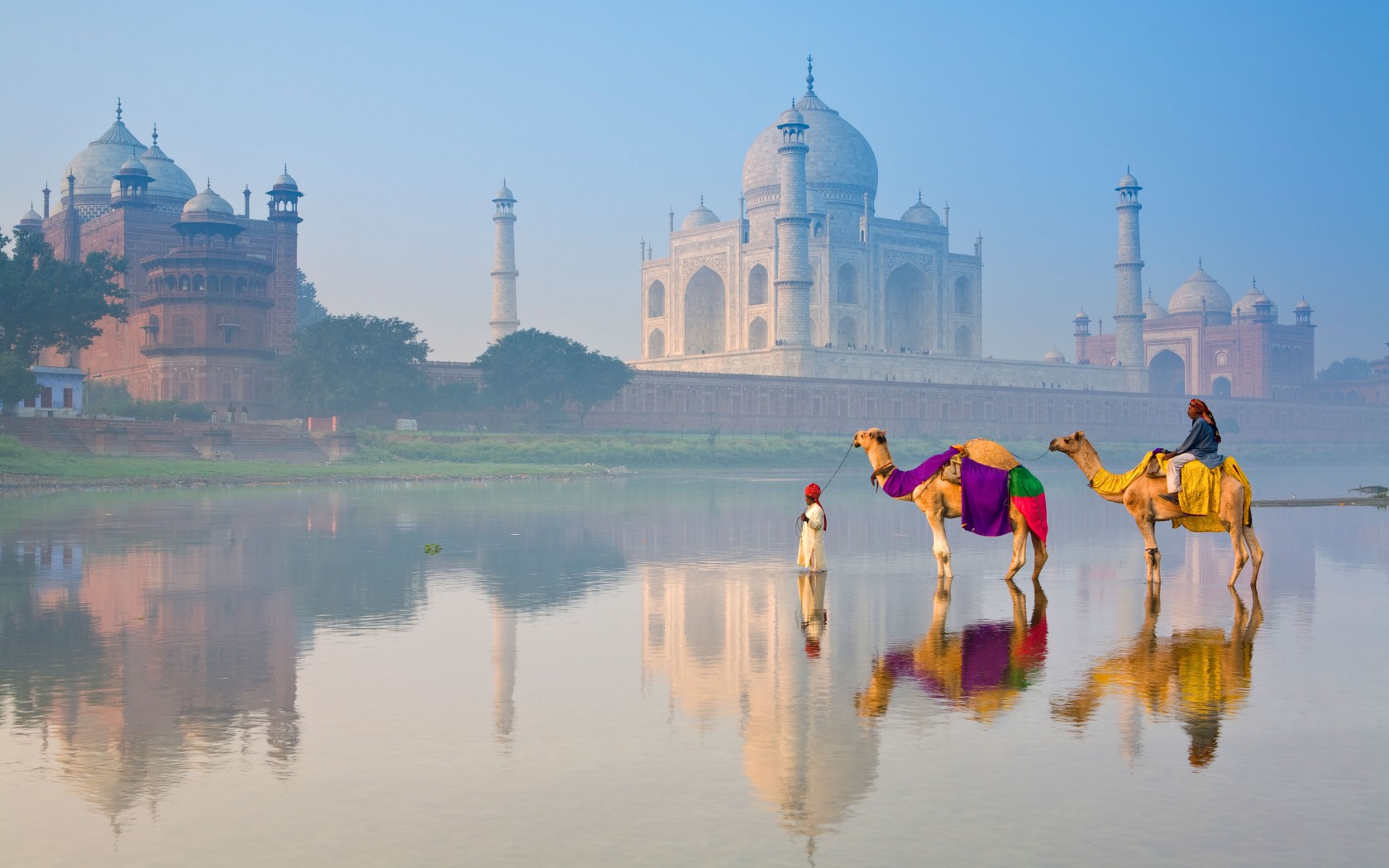
Apply for an Indian e-Visa (The Indian Tourist eVisa)
Some notes before applying an indian e-visa.
- The minimum time you need to apply for an e-visa is 5 days before going to India: Because the Consulate needs at least 3 days to review and process your application. Ideally, you should apply 7-10 days before the departure date.
- The exact website link of the consulate is https://indianvisaonline.gov.in/evisa/tvoa.html . When I searched on Google, I found a lot of cheat links and the price for applying an e-visa is 3-fold expensive than the self-made fee. So, you should remember to access this correct link.
- e-Visa offers many different durations: Normally, if your purpose simply is only traveling, you choose to go for 30 days, but at present, India’s e-Visa has given more options up to 1 year, 5 years, very wonderful for those who love India.
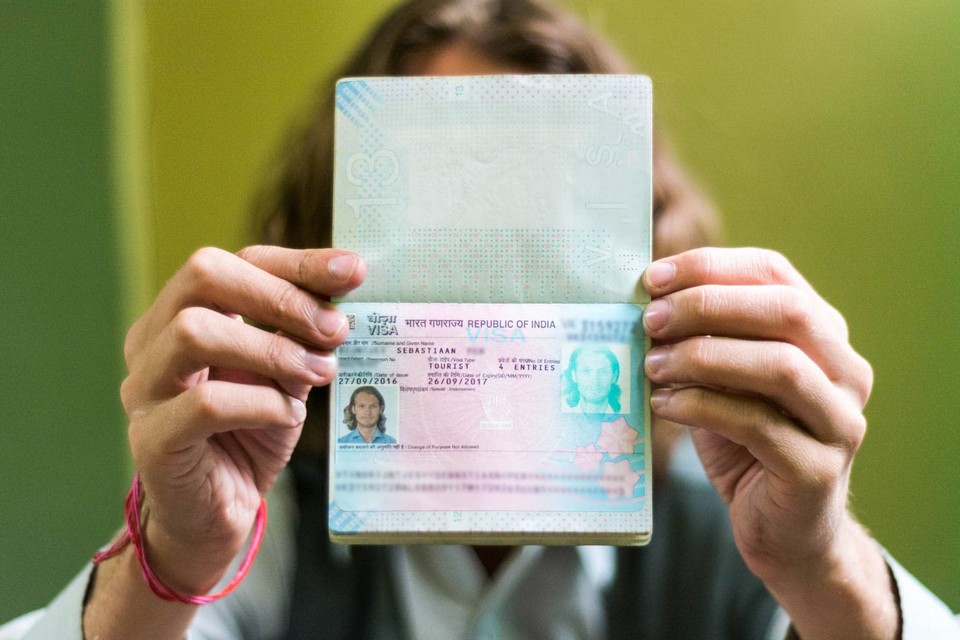
What to prepare before applying for an Indian e-Visa?
Before applying for an e-Visa, you need to prepare the following things which are the minimum requirements of the Consulate:
- Scanned the copy version of the first page of passport (under 300KB) and valid for at least 6 months from the date of entry. 2 inch x 2 inch photo: In JPEG format file with less than 1MB in size.
- International payment cards.
Fly to India

Currently, from Vietnam you can fly directly from Saigon to New Delhi via Vietjet Air. Flight time is about 5 hours, direct flight without any transit, ticket price when I buy 3 months in advance is $185 / round trip, extra luggage is about $210. Because of the direct flight, I decided to go to India, but in the past, you have to transit which takes a lot of time.
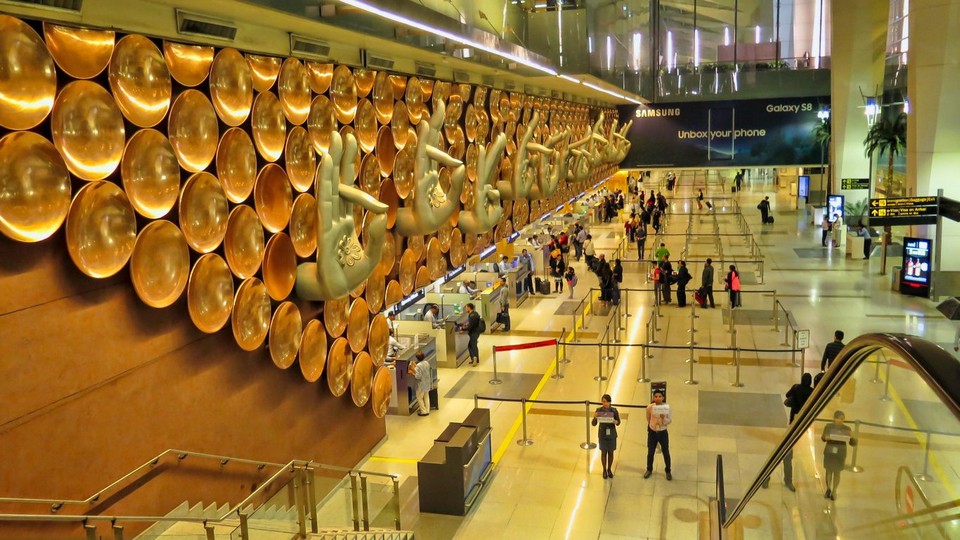
Depending on your departure point, to find suitable flights at cheap ticket prices you can use airlines tickets comparison websites such as Google Flights , Skyscanner .
Traveling between Indian cities
There are 3 main means of transport that you can use to traveling between cities:
Train (#india itinerary 10 days)
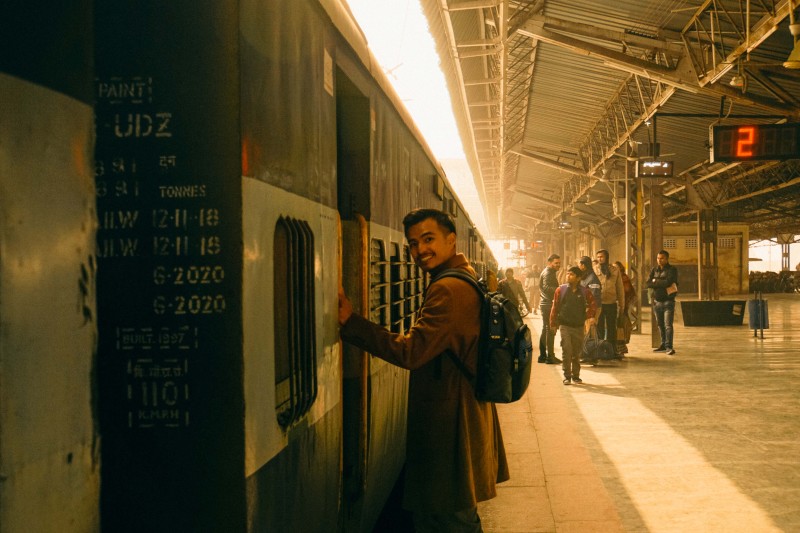
It must be said that this means of transport in addition to convenience of traveling because India owns one of the largest railway system in the world that covering almost its cities, you also have an opportunity to see the unique culture of India throughout the journey with many types of social classes of people. Observing tea vendors on the train cars and enjoy the scenery along the way. In addition, the traveling cost of this vehicle is very cheap.
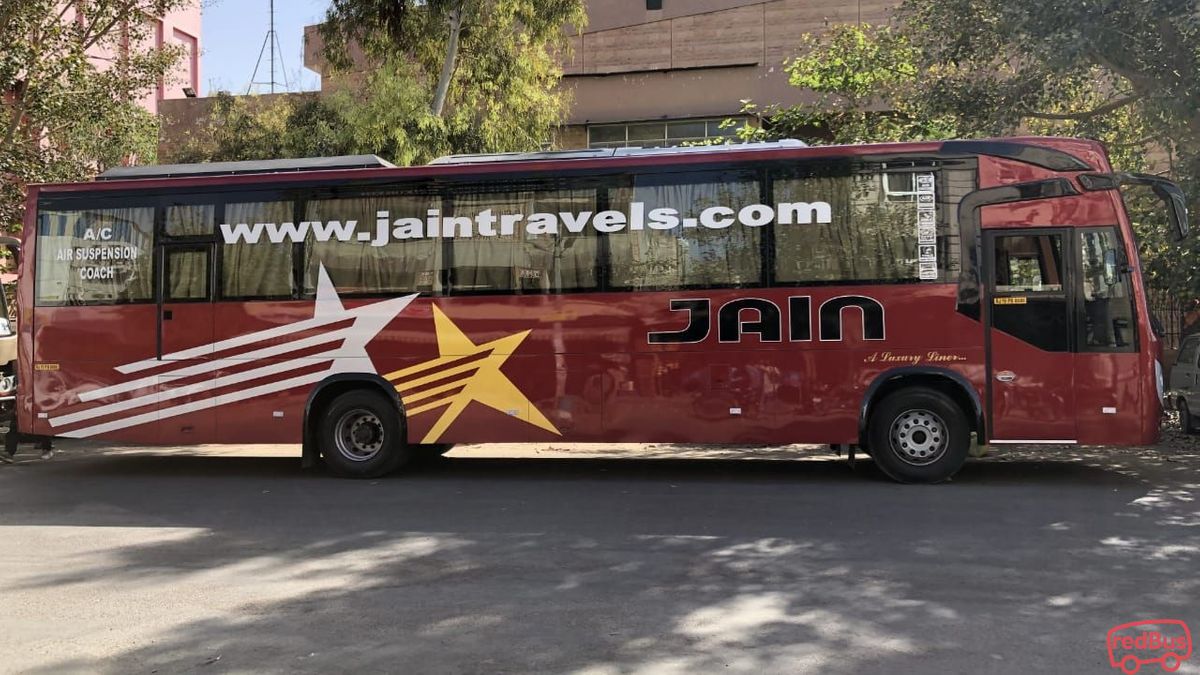
I highly recommend this vehicle for comfort and convenience, you should choose one of the best bus companies called Jain travels . The bus fares are more expensive than train fares, but in return there are conveniences for you.
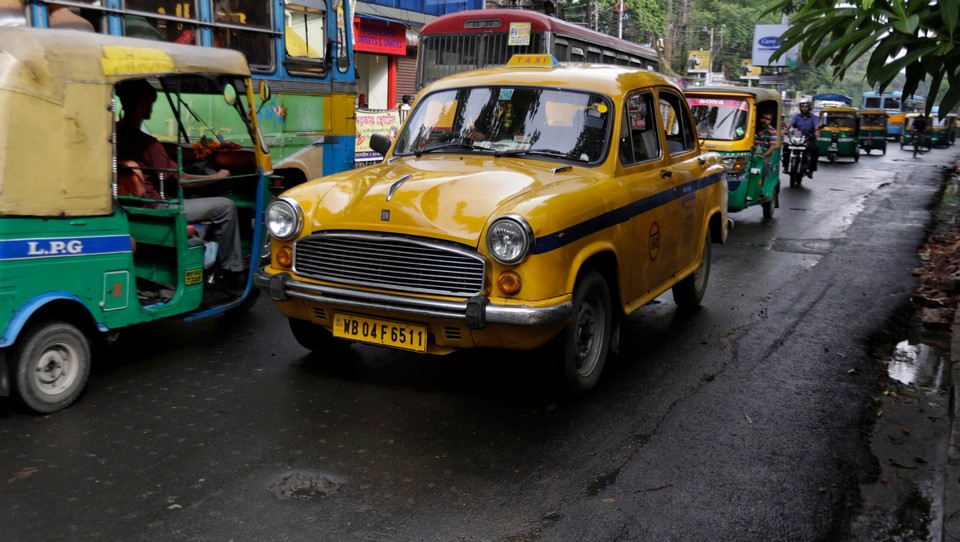
On the day when I went from New Delhi to Agra, because I could not buy train tickets, I had to take a taxi, the cost to travel from Delhi to Agra is 5,500 rupees for a 4-seater car. If you share with 4 people, it is still 30% more expensive than bus. This is the means of transport that I see that only in case of force majeure, otherwise you should choose a train or bus to save money. When taking a taxi, remember to bargain with the owner.
Getting around city
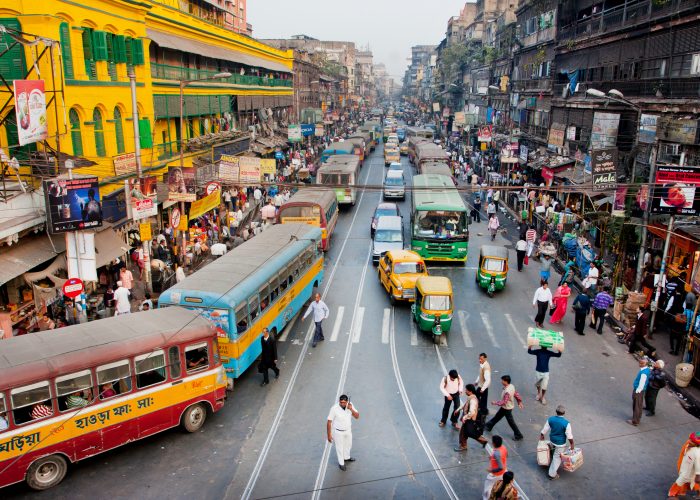
In the city there are 4 main means of transportation you can experience, here are my experiences with each vehicle:
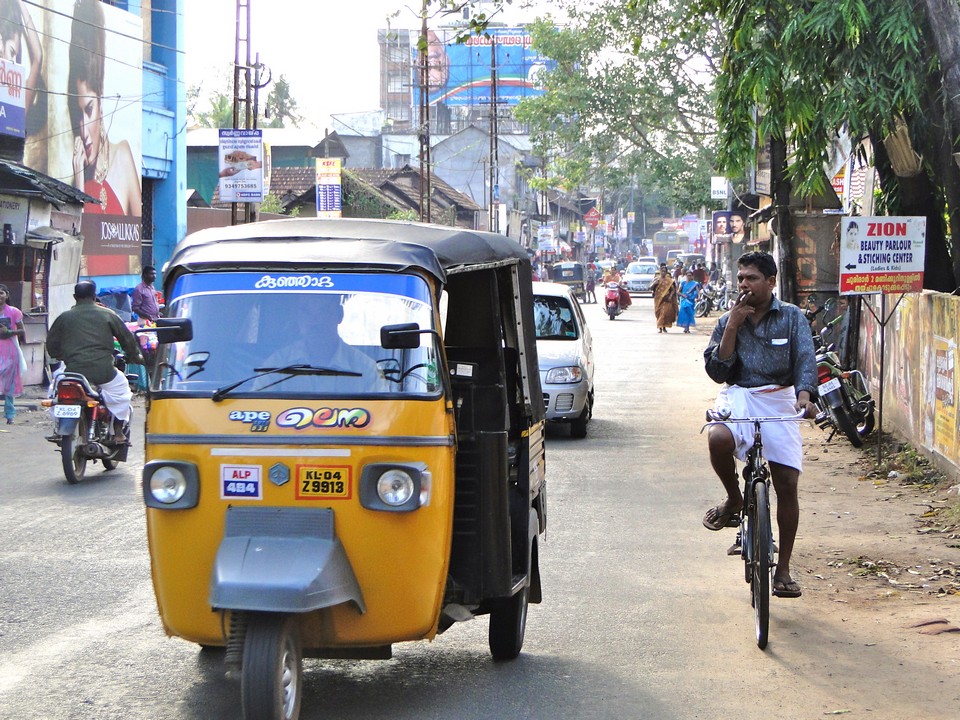
Very popular and just raise your hand, a tuk tuk will come back. Usually, if you go about 1km, remember to pay 50-70 rupees only. They often will shout double the price, remember to bargain. This is the option I use the most because of convenience.
Uber/Ola Cabs
When you come to India, if you don’t like to bargain, use rideshare services. In India there are Uber and Ola Cabs, however, to use them you must have an India’s phone number, this can be solved by buying a sim card at the airport. If you do not have a sim card in India, you can ask the hotel staff to buy it for you. We asked to help from the Ola Cabs driver (because the price is cheaper than Uber), then when we come back, we take a tuk tuk and go because all 4 of us forgot to buy a sim card.
This vehicle is quite limited, it often traveling from airport to city center, I also do not recommend you to use because they always shout overcharge, it’s the best to avoid them.
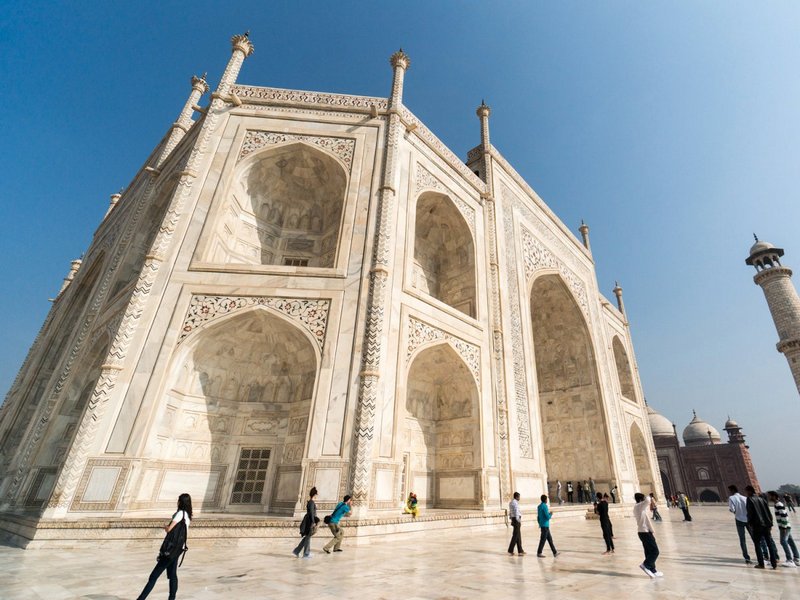
For New Delhi, walking is a bit tired leg because the attractions are far apart, but in Jaipur, Jodhpur, you can confidently walk comfortably because the places to visit are quite close to each other.
Tips to stay safe when traveling to India (#india itinerary 10 days)

- India has a lot of scandals in the media, I don’t need to mention it, you already know it. However, having actually traveled to see India is also very comfortable and safe. Only the situation of “making money” from tourists always happens that we should be wary of. Here are some tips to avoid scams and keep yourself safe when traveling to India:
- Don’t follow locals who will lead you to Tourist Information Center because those places they enacted by themselves and took the name of the government and try to selling you tours at expensive prices.
- At train stations, you will be lured to buy train tickets also at impersonated ticket centers, be careful.
- When taking a taxi, tuk tuk, when you give the train station name, they will say the train is not open today. Then will tell you to use a taxi to go. Don’t believe them. Let go to the train station and directly ask the ticket agent.
- Also regarding take a taxi, tuk tuk, there is another trick that they will tell you the hotel you booked is terrible, don’t go but let the driver lead you to the hotel for better. Honestly refuse.
- When being lured, just ignore and shake your head, they will leave on their own way.
- When taking a tuk tuk, always go together, and remember to open Google Maps to track if they drive on the right route, if no, you ask them to turn on the meter.
- In the evening, it is safe to go out, nothing happen, if the place is too deserted, just avoid it, there is nothing to be afraid of, as long as you go with a group it is fine.
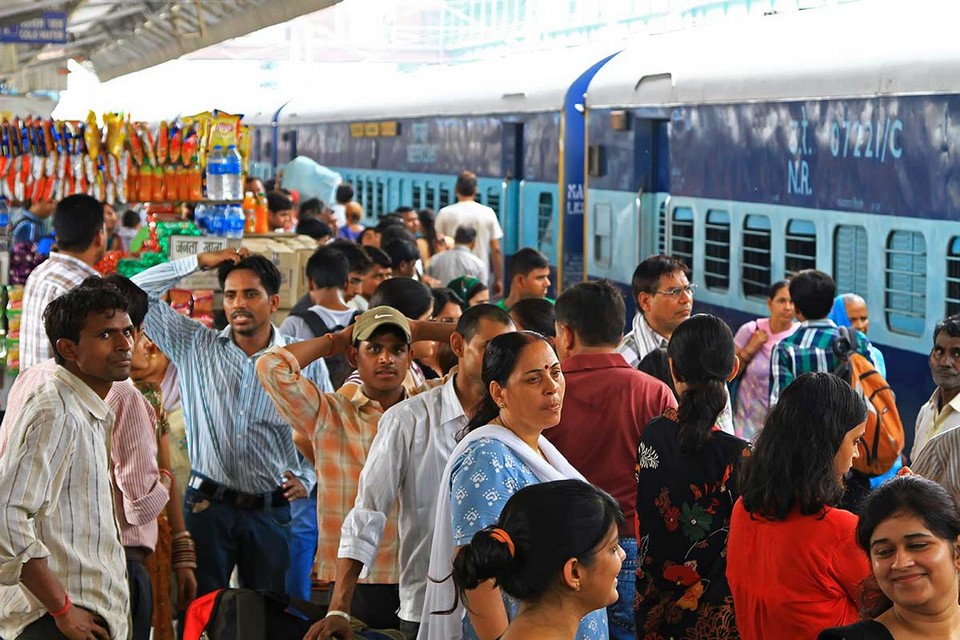
India uses rupees (INR), $1 = 75 INR. With 100 USD you will get 7,400 – 7,500 INR. Normally, I will exchange money in advance in Vietnam. However, exchanging VND to INR in Vietnam is quite low rates. I recommend you to exchange USD in Vietnam first and then go to India to exchange it into rupees to use later. In my experience, you should exchange $100 each time, after spending all, you will continue to exchange rather than exchange your total money at once. Experience is that the exchange rate in New Delhi is the best with USD 100 can be exchanged for 7,400 – 7,500 INR. In Jaipur, is the biggest loss, it was only 6,900 INR, which was a very “painful” experience. In Jodhpur, gained a good exchange rate of USD 100 = 7,400 INR.
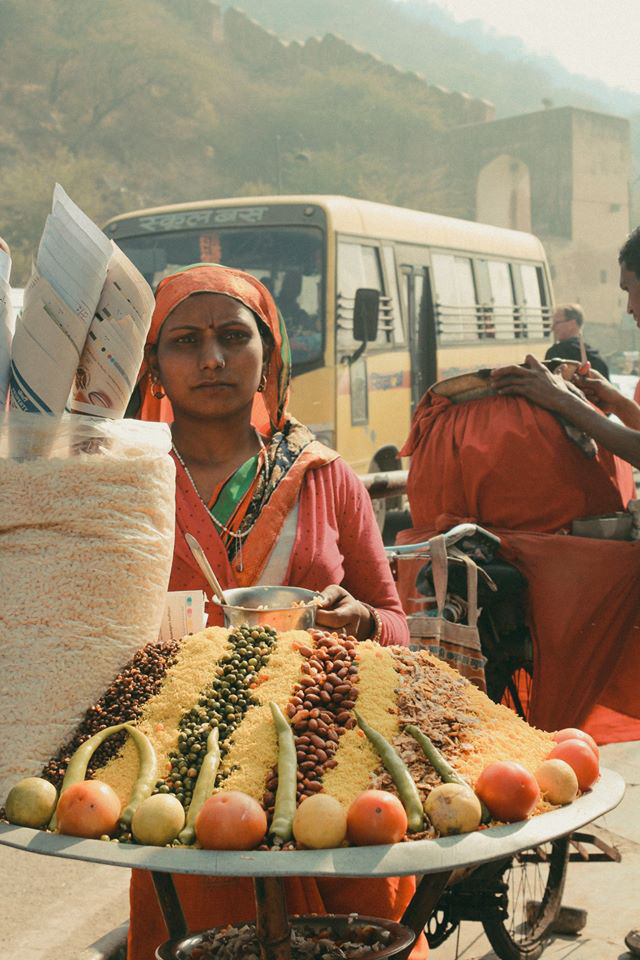
India itinerary 10 days: When to come?
Each season in India always has its own beauty and interesting things, some major festivals that you should pay attention to:
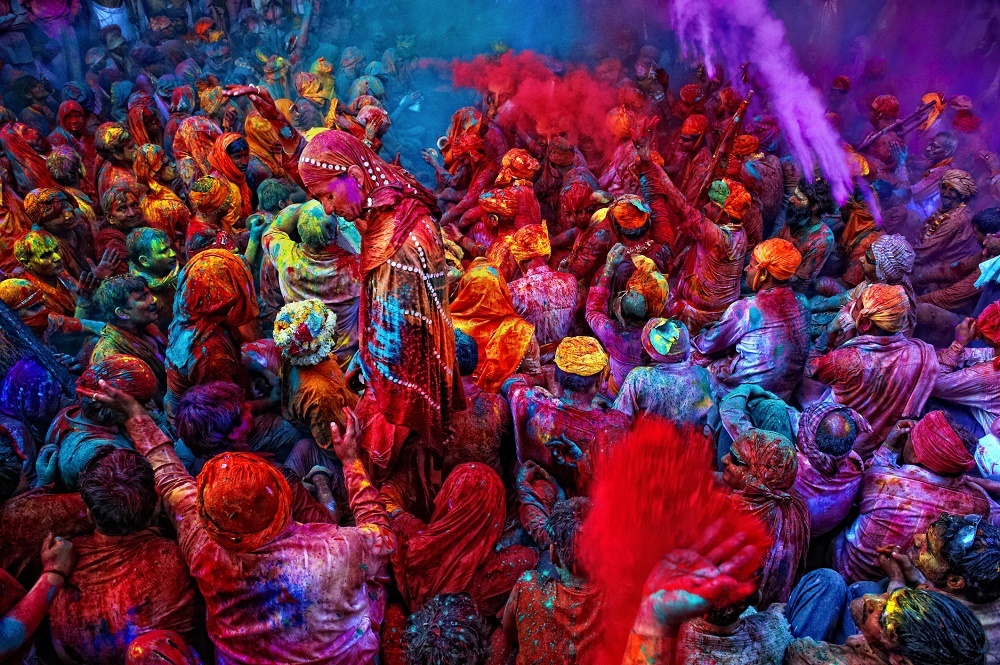
- Holi Festival (March 9 – 10) also known as Festival of Love”, “Festival of Colours” or “Festival of Spring”, takes place on only 2 days in some cities such as New Delhi, Barsana, Jaipur. This is a unique festival of throwing colors to ward off evil spirits.
- Diwali: The Grand Festival Of Lights (November 14). This beautiful festival of lights will lights up all over India, featuring processions, parades and light shows on buildings, streets.
- Dussehra (October 25) is celebrated in different ways in India. The climax is when prince Ravan Dahan burns giant effigies of Ravana, Meghnath and Kumbhkaran, a scene truly worth seeing.

In terms of the time to traveling to India, I think the most beautiful time to visit is in spring (March – May) and autumn (October – November) not only because of nature beauty, but mainly because it is cooler. I went in the winter of December and January, and I found it quite good because it would less mosquitoes, reduce body odor (Indians eat curry a lot) and take the train without sitting in an air-conditioned compartment.

India itinerary 10 days — Day 1: Saigon – New Delhi
Today, I took a flight at 7PM and landed at New Delhi airport at 11:50PM local time, please note that India time is 1 hour 30 minutes ahead of Vietnam. After taking the luggage and done the custom procedures, I went back to the hotel to rest. Please note to get to city center from the airport, you should use an app like Uber or Ola Cabs, so you don’t have to bargain with driver.
Hotel: Tashkent Palace (A normal hotel, we chose to stay because it was cheap because and we stayed for only a few hours and then went to Agra).
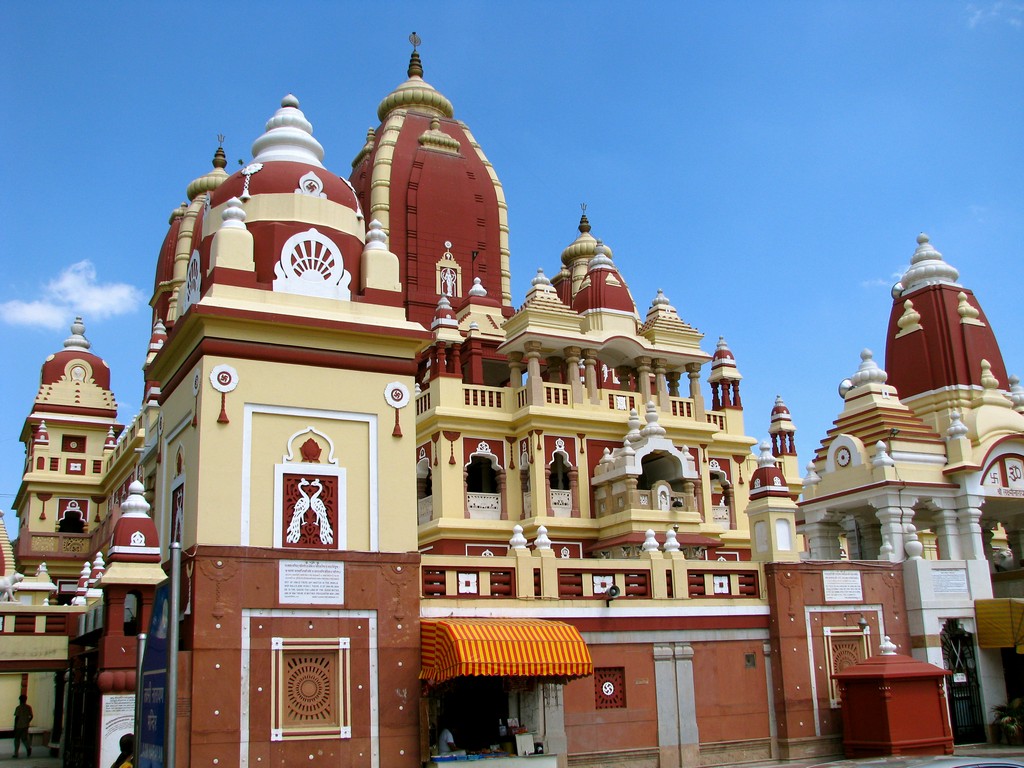
10 days in India — Day 2: New Delhi – Agra
Today was a day full of twists because we couldn’t find a train ticket from New Delhi to Agra, so we had to pay the price with a taxi driver which was very annoying. At the end of the day we reached Agra after a few hours of waiting for a large taxi that can carry our luggage.

Hotel: The Alpine (We stayed here, because our nearby hotel canceled the booking, but The Alpine has good staff, enthusiastic in tuk tuk booking and had dealed a good price for our group). Check rates on Agoda.com or Booking.com .
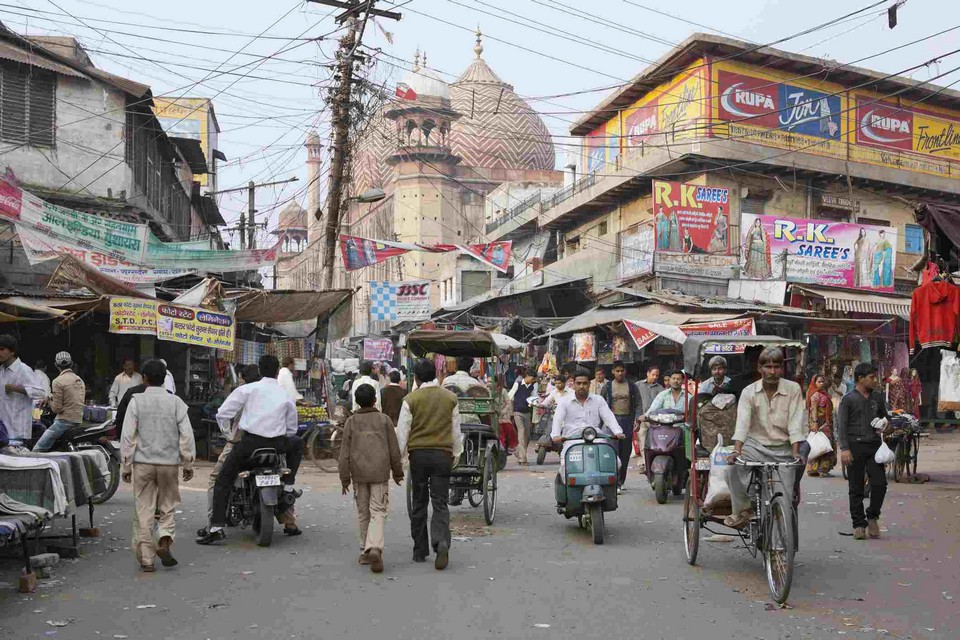
India trip itinerary 10 days — Day 3: Agra (Taj Mahal – Agra Fort) – Jaipur

The next morning, we woke up early to visit the Taj Mahal and buy tickets of 1,050 rupees, if you pay by card, you will get a discount of 50 rupees. Remember to keep your ticket because when you pass through Agra Fort you will get 50 rupees off when buying tickets there. I spent 2 hours to explore the Taj Mahal and visit the tomb, the ticket of 1,050 rupees included the fee of 200 rupees to visit the tomb.
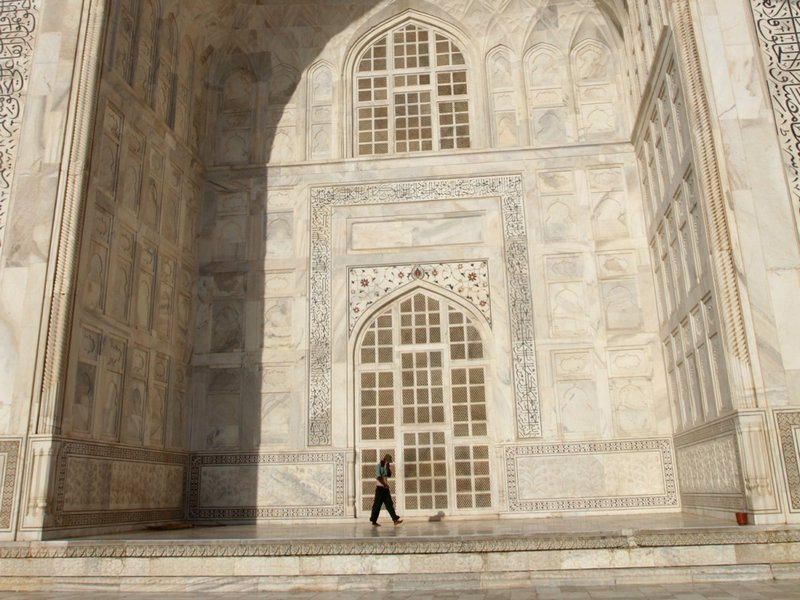
After that, I went to Agra Fort by tuk tuk and visited Agra Fort. There were many interesting nooks and crannies here, you can spend 2 to 3 hours here to taking pictures and viewing information about the fort.
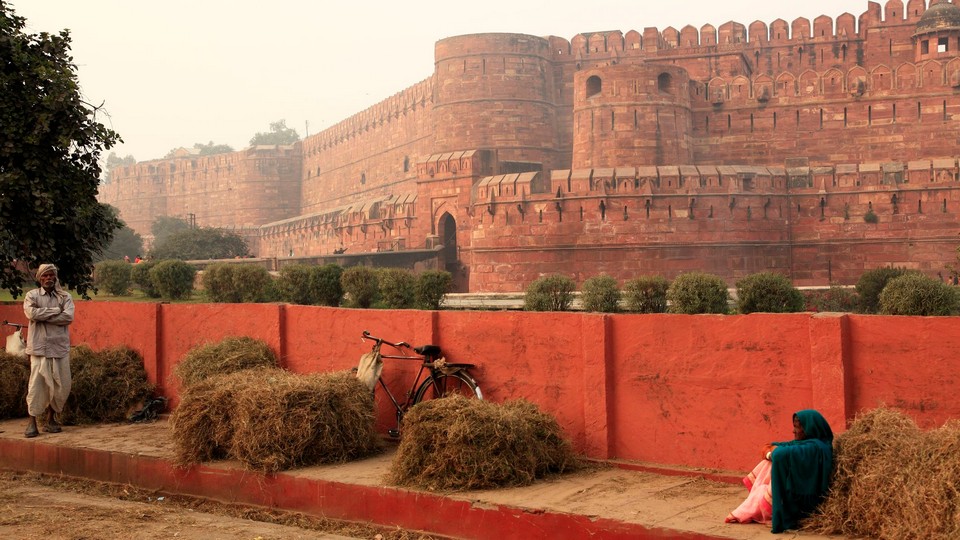
Finally, our group returned to the hotel, got on a car to Agra Fort train station to move to Jaipur. Around 7:30 pm, we arrived in cute Jaipur, met a man who run a tuk tuk Raja and bought a tuk tuk tour for 2,000 INR for 4 people with 2 tuk tuk for a full day the next day.
Hotel: The Hosteller ( Agoda.com or Booking.com ) for our all days in Jaipur (clean, friendly staff, modern space, I was quite satisfied with this place, highly recommend).
India itinerary 10 days — Day 4: Jaipur (Gaitor – Amber Fort – Wind Palace)
Today, we took a tuk tuk tour, we went to 3 main attractions including:
Gaitor: The tomb of the kings and princes of Jaipur, I really like this place and recommend you to visit, because it is deserted and different from the rest of Jaipur.
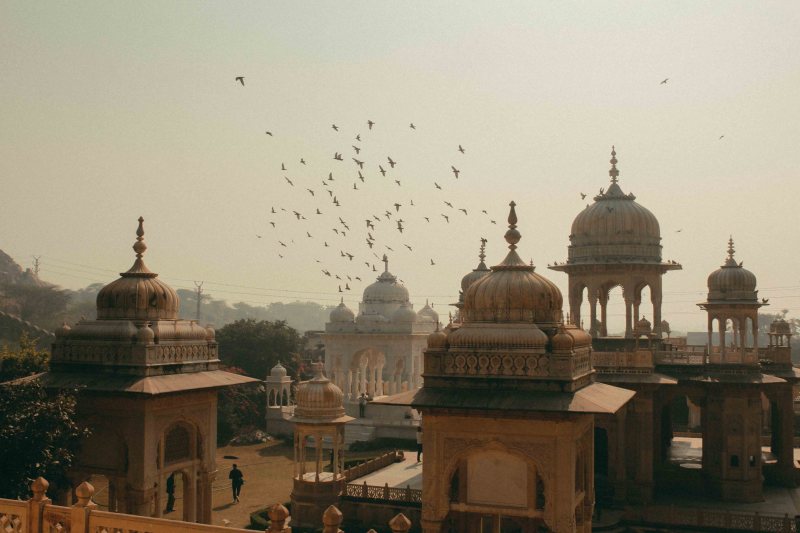
Amber Fort: I see Amber Fort more beautiful than Agra Fort and much more majestic. However, Amber Fort is also very crowded, you need to buy a ticket of 500 rupees to get deep inside. But I think it’s okay if you don’t want to go in, standing outside is already very beautiful. Near Amber Fort there is a Water Palace (Amber Palace), remember to tell tuk tuk to stop by to take pictures.
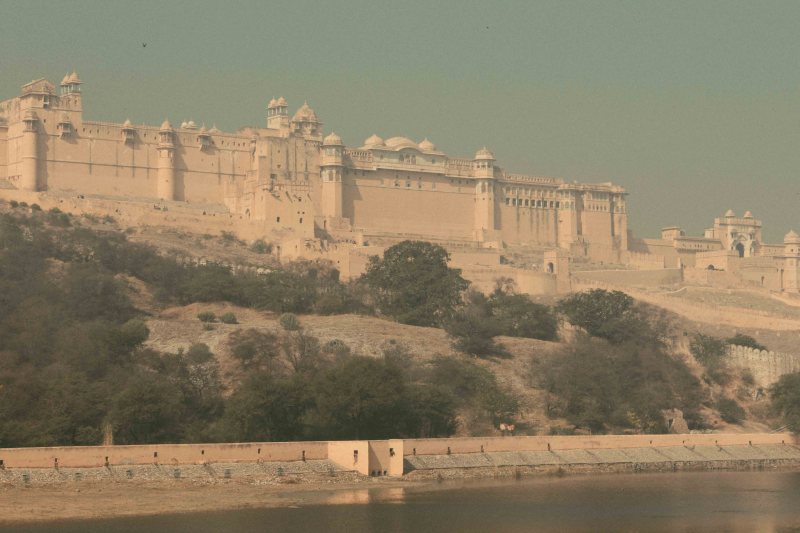
Wind Palace: This beautiful architecture is the symbol of Jaipur, located in the heart of Pink City. You should visit 2 opposite cafes and climb up to take pictures.
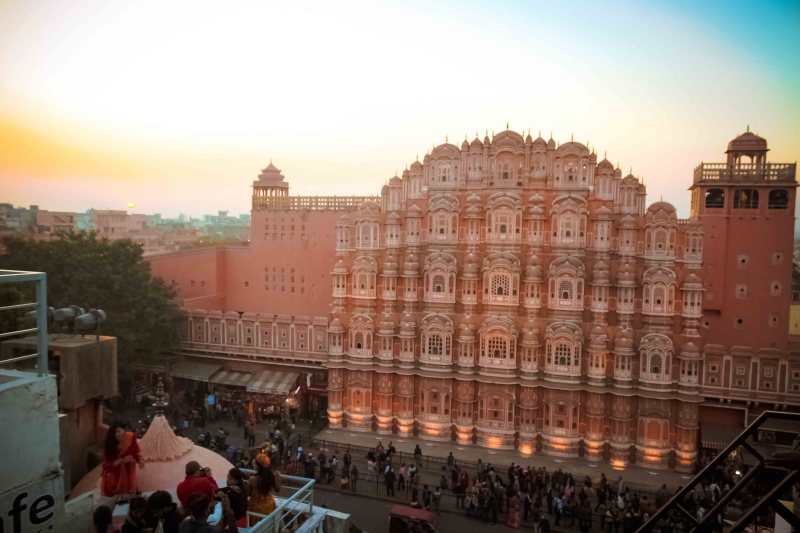
The tuk tuk drivers also want to entice our group to buy cloth and jewelry, we still let them take us away and but didn’t buy anything, because the price is very expensive.
10 days in India — Day 5: Jaipur
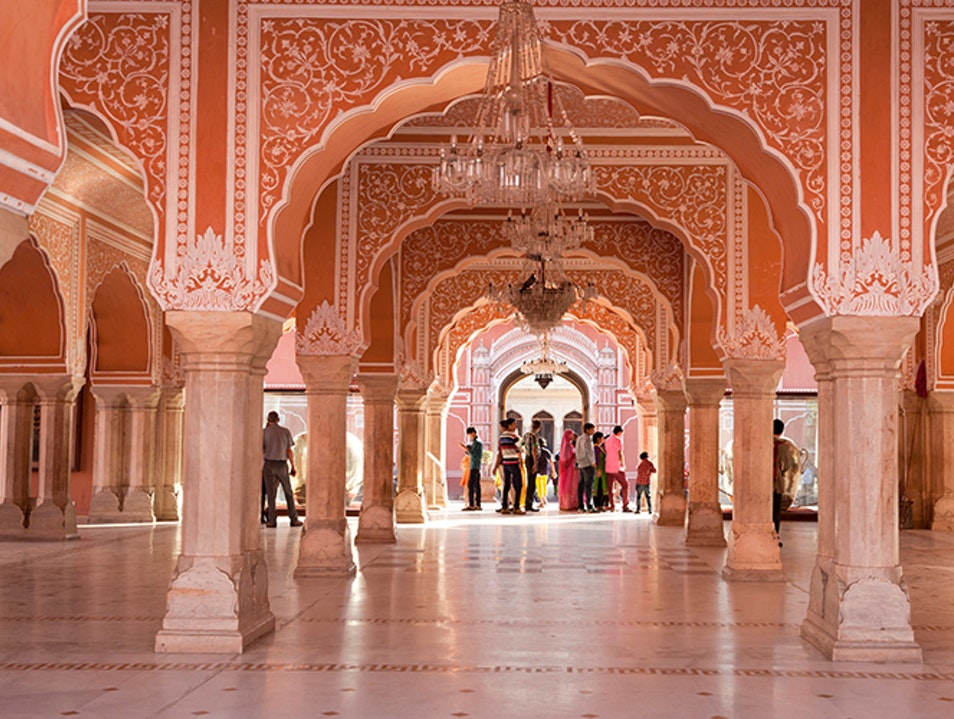
On the last day in Jaipur, I spent time to strolling around Pink City because there is more than just yesterday’s Wind Palace. I went to City Palace with an entrance fee of INR 500, the inside is very beautiful and there are 4 gates of 4 seasons. In the pink city, I spend time visiting random temples on the street, watching the rhythm of Jaipur life in the streets selling jewelry, selling spare parts, each street only specializes in one item like Hanoi 36 streets once upon a time.
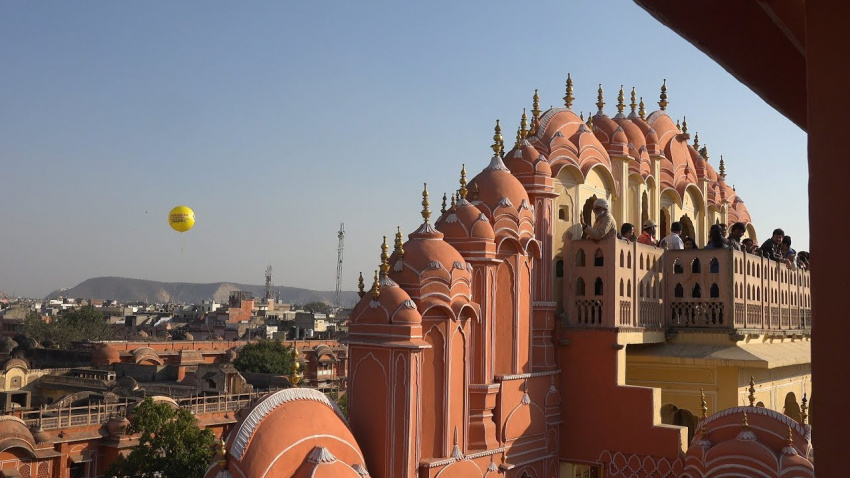
India itinerary 10 days — Day 6: Jaipur – Jodhpur
Today was mainly for traveling from Jaipur to Jodhpur and finding hotel to rest.
Hotel: Casa de Jodhpur (this place is extremely boutique and bold Indian style, the owner also stays in the same house, the owner is extremely enthusiastic and the room is cute, like sleeping in a cave hotel in Turkey, highly recommended). Check rates on Agoda.com or Booking.com .
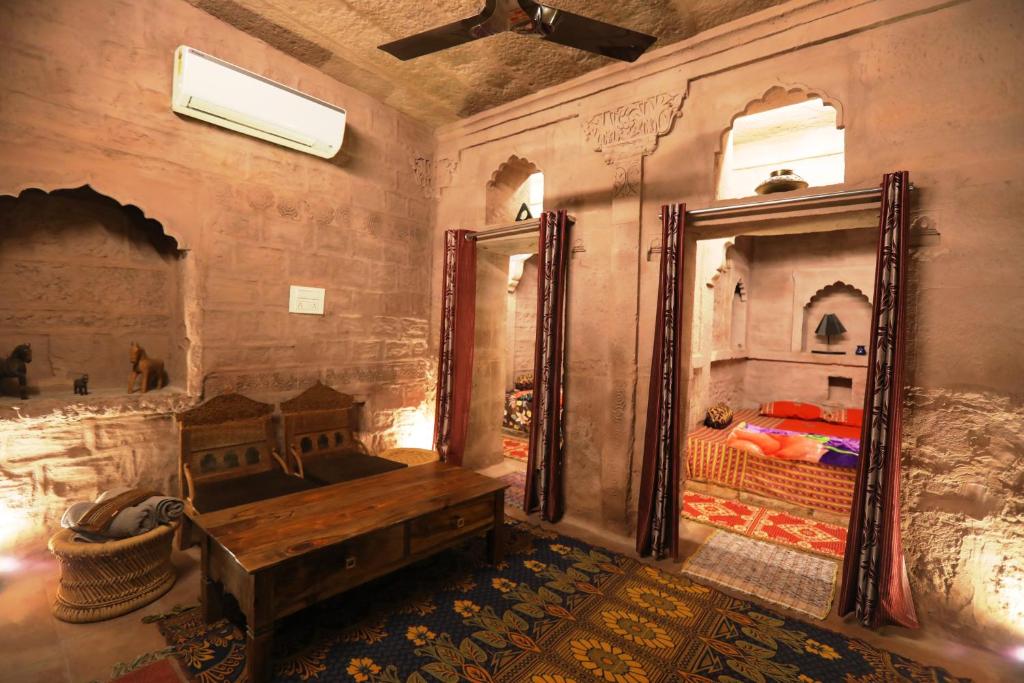
10 days in India — Day 7: Jodhpur
Jodhpur is quite small, I spend my time walking instead of taking a tuk tuk to explore the city more slowly. The places I visited today include:
- Mehrangarh Fort
- Toorji Ka Jhalra (Toorji’s Step Well)
- Ghanta Ghar Clock Tower
Just go to these 3 spots, you will need a whole day to visit them. We spent more time near Toorji Ka Jhalra Well (aka Stepwells) because there are many craft shops around that are suitable for shopping and many beautiful rooftop cafes. I chose Stepwells Cafe because it offers a beautiful view of the Stepwells below.
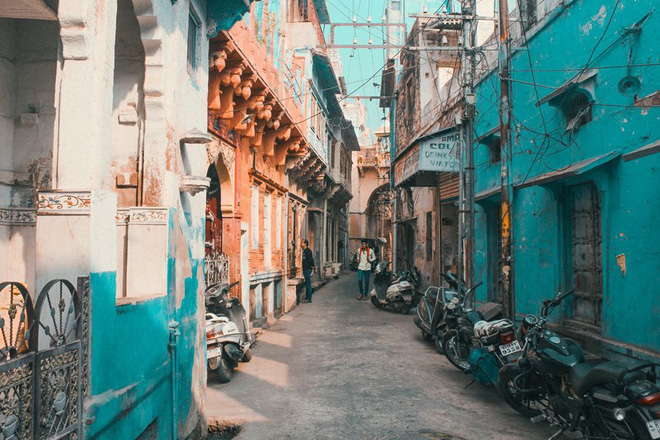
Day 8: Jodhpur – New Delhi
Today, we booked sleeper bus tickets at 8PM, so we had the whole day in Jodhpur. Today I spent time to eating and drinking at Omlettes Shop (which sells delicious toast and fried eggs), a lassi shop near the famous clock tower.
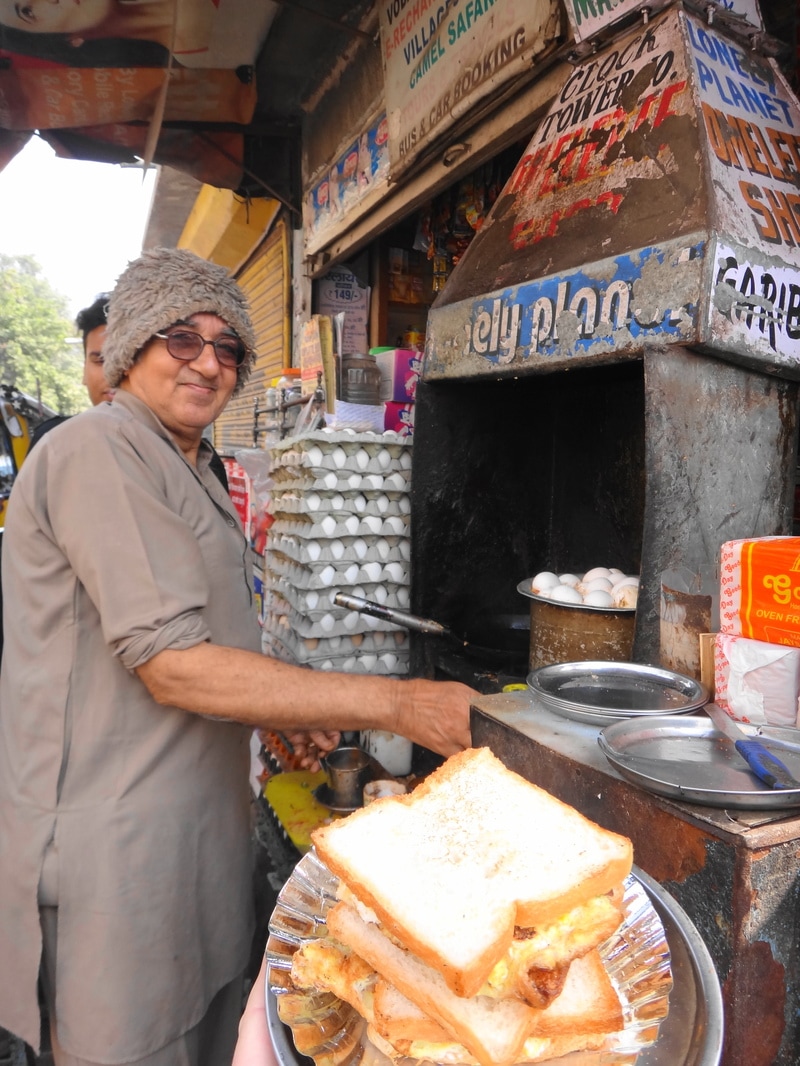
After eating and drinking, we moved to Jaswant Tada – a royal building with a beautiful royal garden. From here, you can enjoy a panoramic view of the city.
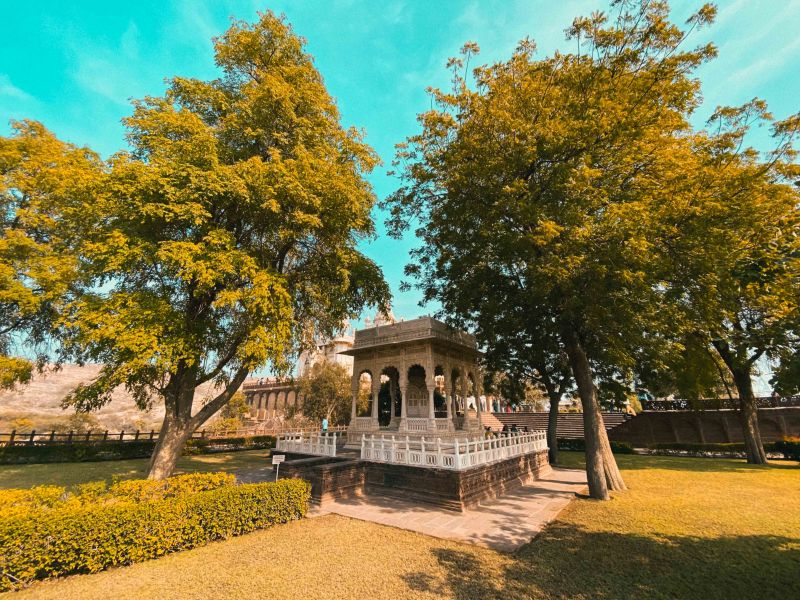
India itinerary 10 days — Day 9: New Delhi
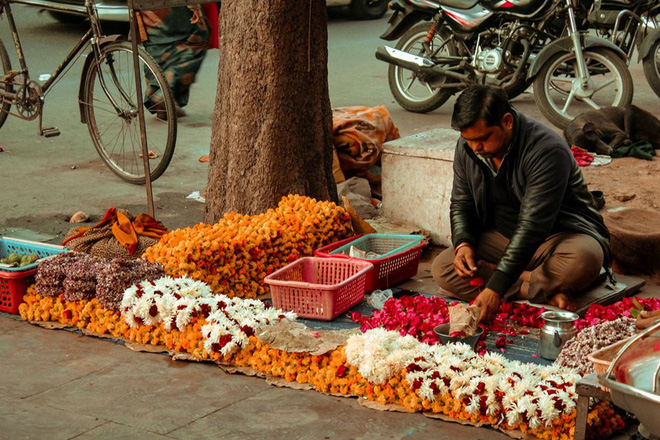
Returned to New Delhi early in the next morning. We went back to The Ritz hotel to drop off our belongings and explore the city lightly. We stopped by the Gate of India to see the city symbol, which is the largest victory gate in India. The group also planned to Red Fort, but because we were a bit bored with fortresses, we visited The Connaught – this area is extremely fun with many cafes, restaurants of Indian, European, American, Chinese, Japanese and if you love shopping then this is the perfect place for you.
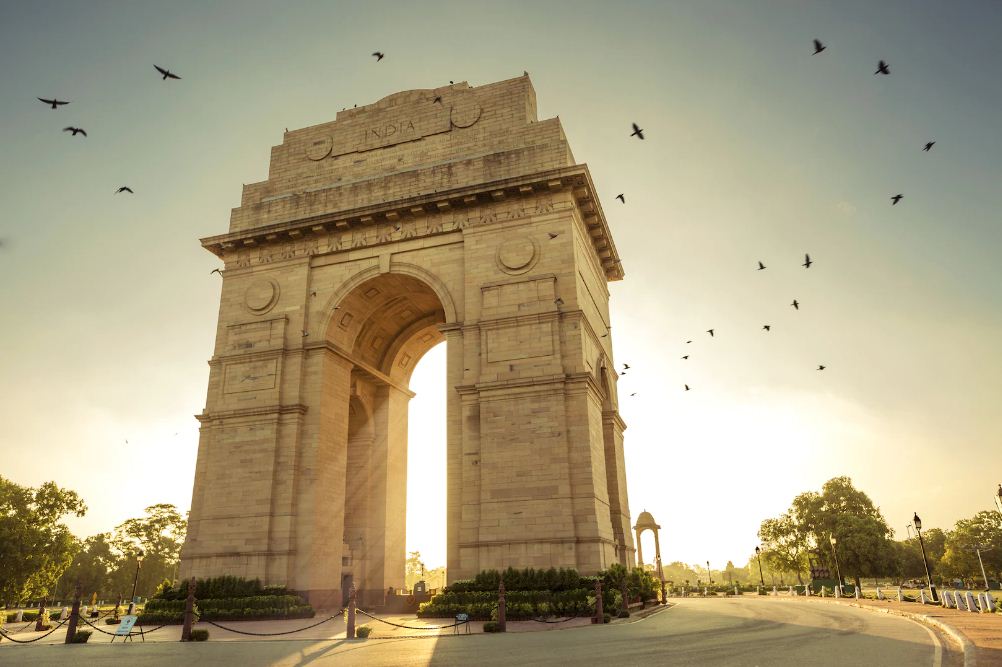
India travel itinerary 10 days — Day 10: New Delhi – Saigon
Today we also just went to coffee, lightly hanging out because we were quite tired after the trip, then waited until evening to fly back to Saigon ^^.
That’s my 10-day itinerary in India, hope the review will help you have an overview when planning a trip to India, just customize according to your preferences! Enjoy exploring!
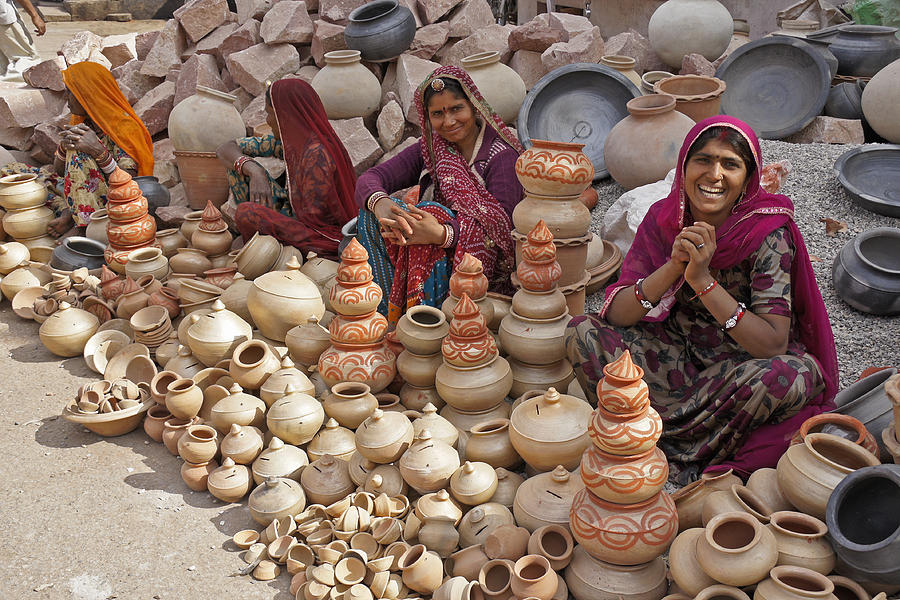
Some best day tours, trips, activities and transfer services, tickets in, from and to New Delhi you can refer to
- Private City Transfers between Delhi and Agra/Rajasthan
- Indira Gandhi International Airport Transfers
- 3G/4G WiFi (IN Mail Delivery) for India [Unlimited]
- 4G WiFi (TH Airport Pick Up) for India [Unlimited Data]
- New & Old Delhi Day Tour
- 3D2N Golden Triangle Tour from Delhi
- New Delhi Morning Cycling Tour
- Red Fort Fast-Track Entry Ticket in Delhi
- Qutub Minar Fast-Track Entry Ticket in Delhi
- Heritage Walking Tour Of Delhi City
- Evening Delhi Tour

Are you looking for more top things to do in India: Tours, activities, attractions and other things? Let’s check it out here .
Related articles

RELATED ARTICLES MORE FROM AUTHOR
Guide to shenzhen nightlife — top 5 things & what to do in shenzhen at night, coron itinerary 5 days — what to do & how to spend 5 days in coron.

Arashiyama travel blog — The fullest Arashiyama travel guide with top things to do in Arashiyama
India trip tips — 9+ things to know before going to india.

Explore Fenqihu old street — What to do in Fenqihu in a day trip?

Where to go in Kunming? — 15+ top Kunming attractions & best places to visit in Kunming
Must eat in melaka — 10+ famous malacca street food & must try food in melaka, editor picks.

Guide to Shenzhen nightlife — Top 5 things & what to...

Ladakh trip cost per person from Delhi — How much does...

India travel tips — 25+ what & things to know before...
Popular posts.

What to buy in USA? — 17+ must buy in USA...

Must buy souvenir in Taiwan — Top 17+ most famous, cheap...

Must buy in Korea — Top 23 cheap, famous & best...
Popular category.
- Inspiration + Guide 1459
- Trip Inspiration 468
- Thailand 209
- Food + Drink 208
- Coasts + Islands 193
- South Korea 168
- Vietnam 166
- Travel Photos 144
- Work for Us
- Terms & Conditions
- Privacy Policy

World Travel Food Culture for Independent Travelers

India Travel Guide: Where to Travel in India
In this India Travel Guide, Ipsita Paul gives you recommendations on Where to Travel in India beyond the usual as well as what to eat, where to stay, and how to get there.
The vastness of India is beyond its diameters. Its enormity stretches far and further with the chances of geography and the mighty cultural aberrations. How to choose where to travel in India? Chaotic regional cities of Rajasthan leave the curious Uttarakhandi villages behind, and the high-mountain Ladakhi Passes co-exist with the tranquil sunset beaches of Goa. Traveling across India is an affair of a lifetime, but here is a selective India travel guide that tries to give you a whiff of India beyond the usual.

Table of Contents
Located in South Asia, India is the world’s most populous country, with a current population of over 1.425 billion. India is the seventh-largest country by area and is surrounded by the Indian Ocean on the south, the Arabian Sea on the southwest, and the Bay of Bengal on the southeast. India shares land borders with the neighboring country Pakistan to the west; China, Nepal, and Bhutan to the north; and Myanmar and Bangladesh to the east.
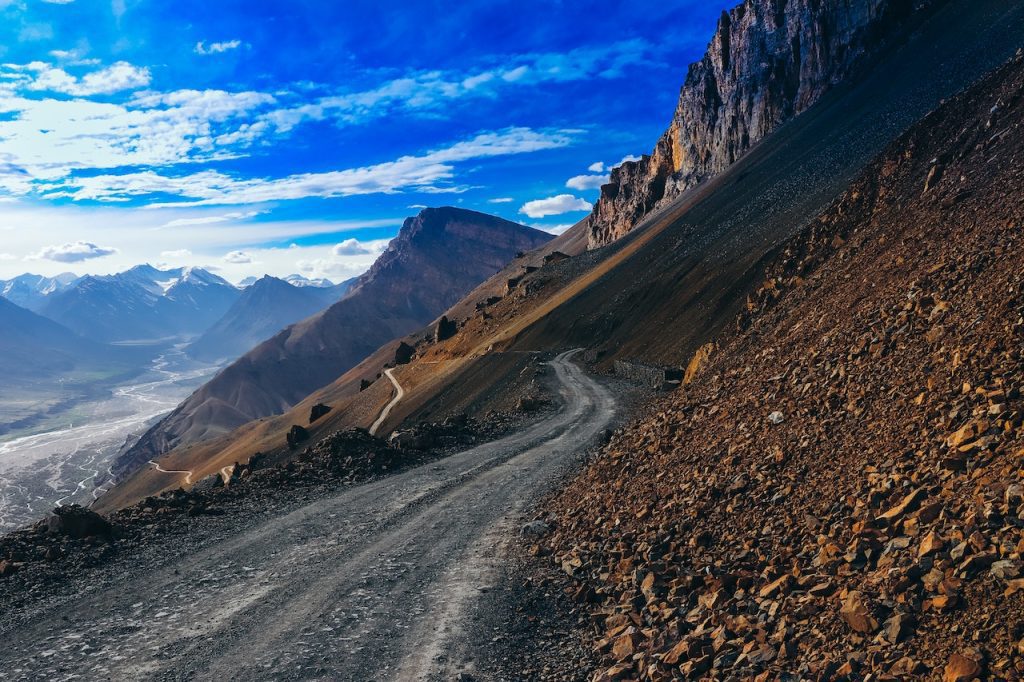
In Search of the Mountains of North India
North India defines the region sparring over the northernmost parts of the country. The dominant geographical features of North India are based on the Indo-Gangetic Plain and the Himalayas, which separate the region from the Tibetan Plateau and Central Asia.
Munsyari and Darma Valley in Uttarakhand
The darma valley.
East Uttarakhand lies unspoiled and beyond the grip of fast-moving tourism. The Darma Valley , 71 km away from the small town of Dharchula, is the base of the Panchachuli Base Camp Trek , a series of five majestic mountain peaks meaning ‘the five cooking-hearths’. The villages in the stretch from Dharchula to Darma Valley cherish the simple pahadi customs. The traditional mud houses in Dar and Dugtu villages stay warm on heart-wrenching cold nights. The mud-colored Kali River cuts the India-Nepal border from both Dharchula and Lohaghat.
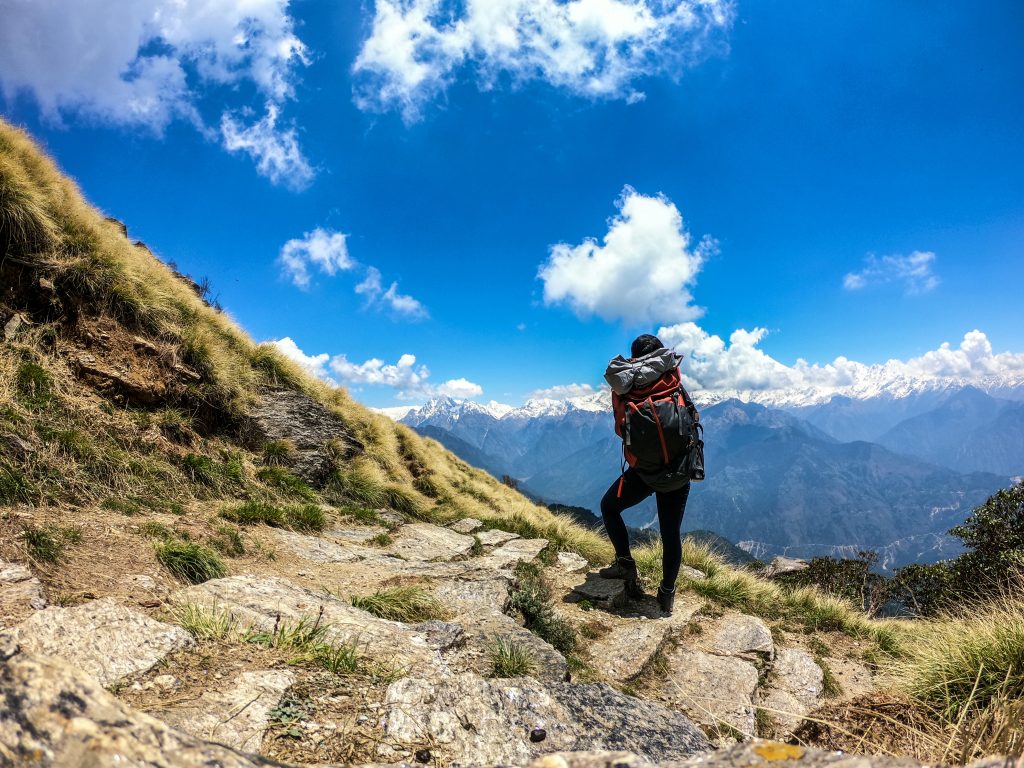
Munsyari rests 94 km before Dharchula, as a conglomeration of revenue villages in the Pithoragarh district. Endless trails to hidden valleys and cornered waterfalls. Khaliya Top Trek takes you to a high-up string of hushed valleys at 3709 meters and opens up a panoramic lucid view of Nanda Devi Peak. Even around the main suburban town of Munsyari, you can visit the Tribal Heritage Museum in Nanasan Village, Maheshwari Kund and Sarmoli Village, the Tulip Garden and Birthi Waterfall.

The Cold Desert Mountains of Spiti Valley
Himachal Pradesh splits from its green lush valleys to a barren kilometer-long harsh and dry landscape of the cold desert mountains of Spiti . Seven months construe the year for them, as for the remaining five months Spiti drops to as low as -30 degrees Celcius.
Two routes can be taken to the journey of Spiti Valley . One, the Shimla-Kinnaur-Spiti route , or the one from Manali to Spiti through Lahaul. During the harsh wintry months, the Manali route gets blocked in impenetrable snowfall, and only the Shimla route stays open throughout the year.
Kee Monastery in Kaza, Chicham Bridge – the highest bridge in Asia, the unique villages of Komic and Hikkim , Tabo Monastery , Chandratal Lake , Dhankar Lake , Kibber Wildlife Sanctuary for snow leopard spotting, and countless Buddhist monasteries – Spiti is a whole other world under the Milky Way.
For a local experience in Losar, the first village in Spiti Valley, stay at Samsong Homestay !
Located in the Kullu district of Himachal Pradesh, this Tirthan Valley travel guide opens the door to Great Himalayan National Park , a UNESCO World Heritage site for ‘outstanding significance for biodiversity conservation’.
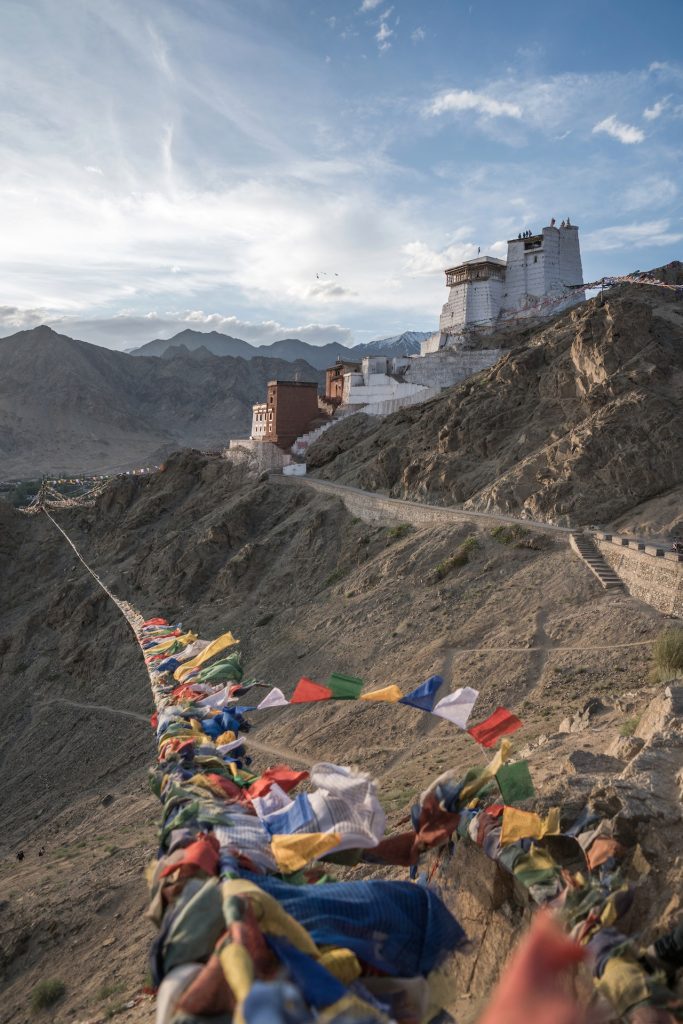
High Passes of Leh-Ladakh
Ladakh , ‘Land of Passes’. The brown landscape transpires sky-high vistas that truly assimilate in an eternal experience. In medieval times, the Himalayan mountain passes sprung up as important trade routes by the South-Asian nations for the trading of spices, silk, etc.
Stubbed as the highest motorable pass in the world by the Border Road Organization (BRO), Khardung La connects to Shyok and Nubra Valley . Chang-La Pass, Baralacha La Pass at an altitude of 16,040 feet, Tanlang La Pass in the Zanskar range at an altitude of 17,582 feet above sea level, and many more high-altitude passes make Ladakh an arduous adventure for bike-riders.
Kanchenjunga Base Camp in Sikkim
Kanchenjunga Base Camp is a journey still unfathomed by over-tourism. Kanchenjunga massifs contour a big crossing that covers the boundaries of three major countries – Tibet, Nepal, and India. An eight-day-long trek takes you to the base of the highest peak in India!

Where Else in India Would You Feel the Diversity?
The ancient ghats of varanasi.
The dead burn in open crematoriums by the sacred River Ganges , under the heaps of wooden beams. As the sun drowns on the opposite horizon, the smoke from the burning dead still pervades the ancient Varanasi . The land of Aghori Babas – the cannibals living off dead bodies. A boat ride along Harishchandra and Manikarnika Ghat by the cremation sites and the evening aarti at Dashashwamedh Ghat – welcome to the holy land of Moksha .
As per the puranic sources, there are five important ghats on the riverfront associated with a defining characteristic of the holy city of Kashi: Assi Ghat, Dashashwamedh Ghat, Manikarnika Ghat, Panchganga Ghat, Rajendra Prasad Ghat, and Adi Keshav Ghat. Varanasi has 84 ghats altogether.
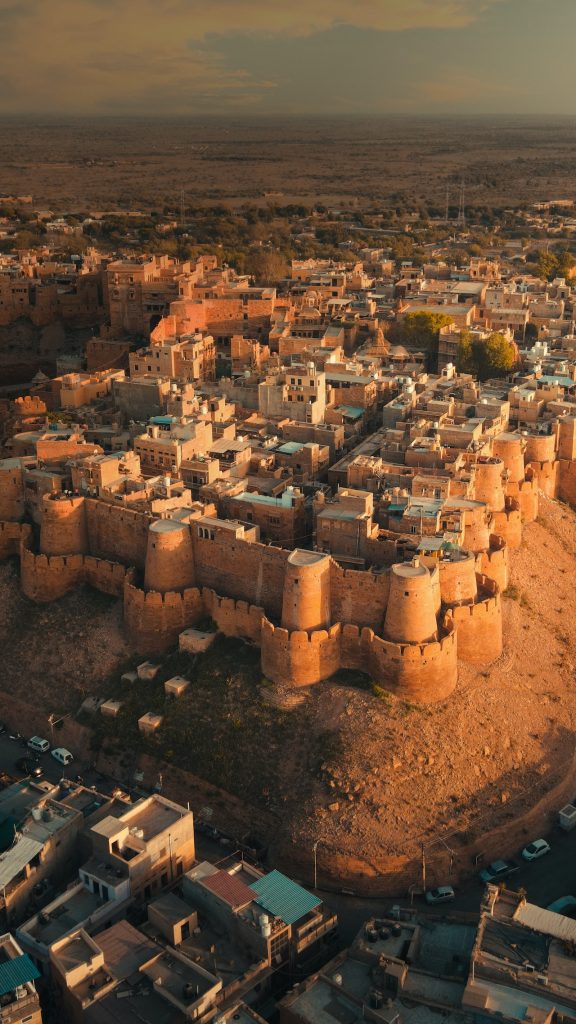
Jaisalmer in the Thar Desert
Rajasthan will transport you to a yellow landscape through Jaipur , Jodhpur, Udaipur, Bikaner, Ajmer, Pushkar, and the sandstones of Jaisalmer. The larger-than-life century-aged forts mingle with Rajasthani folk culture. And on this end of India, Thar desert is bare with distressing heat and drooping camels.
Jaisalmer Fort , A UNESCO World Heritage Site, falls under the category of ‘Hill Forts of India’. Take a stroll around Gadisar Lake, walk past the old havelis (Nathmal ki Haveli and Patwon ki Haveli), Jain temples, cenotaphs like Bada Bagh, and the ghost village Kuldhara.
And the Jeep safari in the desert will fly you to Thar , as far as the India-Pakistan border, and you can sleep on the sand without a tent, facing the shooting stars and an eerie constellation.
For safari, hostel, and private rooms in Jaisalmer, connect with Wonbin Safari .
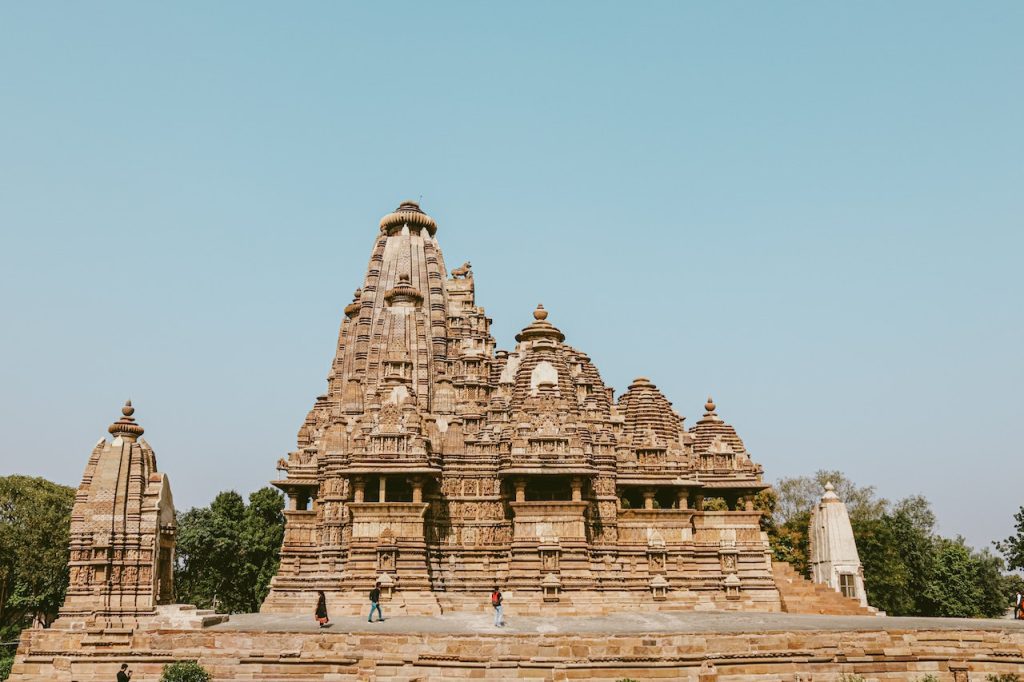
Khajuraho – The Medieval Land of Kama Sutra
The Khajuraho monuments are located in Madhya Pradesh , in the Chatarpur district. The temple town of Khajuraho; the origin of the Kama Sutra. The temples and their intricate architecture date back to the flourishing Chandela Dynasty of the region. Initially, there were over 80 temples in Khajuraho, however only 22 remain. The temples portray erotic passion, primitive art, age-old traditions, and the life of the people of that era.
The temple groups are bifurcated into Eastern and Western Groups of Temples. Javeri Temple, Brahma Temple, Vishwanath Temple, Lakshmi Temple, Devi Jagdamba Temple – to name a few.
While in Khajuraho, you can take a cab/bus to Panna for a tiger safari and visit Pandav Caves. And reserve another day for the enigmatic Raneh Falls .
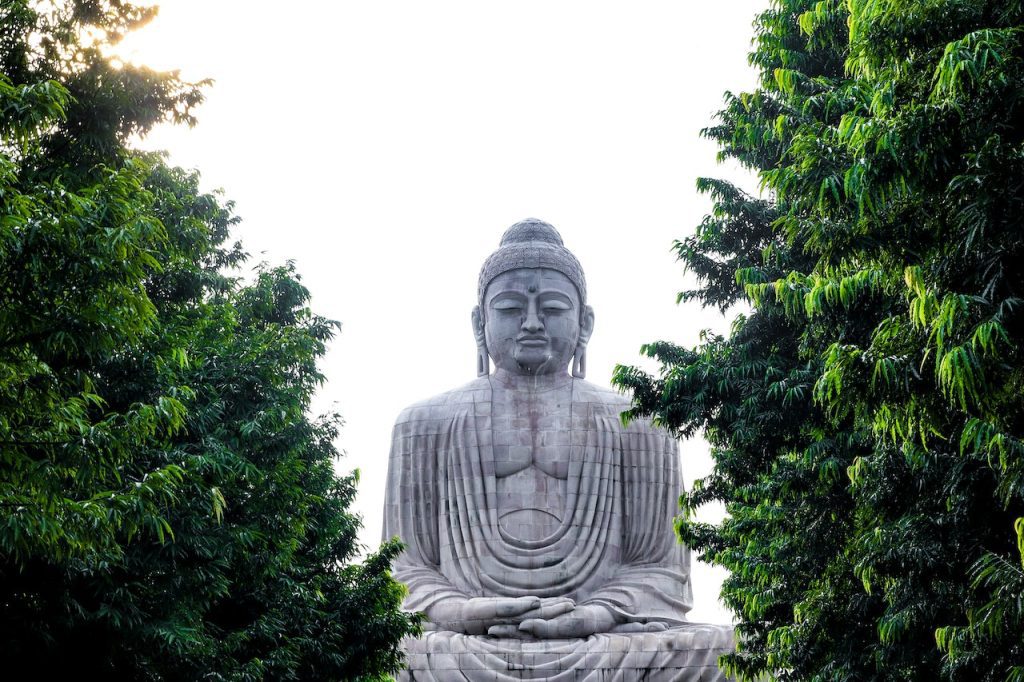
Bodh Gaya – Where Buddha Reached Enlightenment
This statue of Lord Buddha in Bodh Gaya is the tallest in India and was installed by the 14th Dalai Lama in 1989. It is a meditating Buddha sitting on a lotus, built with intricately smashed sandstone and red granite. Mahabodhi Temple, where Buddha attained his Enlightenment, marks all the seven spots of Buddha’s wanderings to the final day of Nirvana.
Even walking through the Tibetan Refugee Market and far, at every corner, you will find monasteries from other Asian countries. Thai Monastery, Royal Bhutan Monastery, Chinese Temple, Indosan Nippon Japanese Temple, Vietnamese Temple, and more
The ruins of Nalanda University are a bus ride away from Bodh Gaya.
Kadiya Dhro in Gujarat
Ever since the New York Times listed Kadiya Dhro in the row of ‘52 must-visit places in the world’, this mini canyon in Kutch Gujarat has obtained a touristic stance on the Indian Travel Map. Located near a quaint village in the Kutch district of Gujarat, Kadiya Dhro is colloquially known as ‘the Mini Grand Canyon of India’. Its river and colorful rock formations add to the shadowed beauty of Kutch. Besides the Rann of Kutch , Kadiya Dhro should be on your itinerary while you are visiting India.

Nagaland – The Unexplored North-East
Whether it is the untouched nature of Kohima , or the mesmerizing hill-and-stream Mokokchung , whether it is the fascinating rock formations of Meluri , or the traditional and heritage experience of Touphema Village, Nagaland remains immaculate and untouched by the overflow of tourists. Nagaland’s cultural dichotomy (food, culture, and faces of the North-Eastern States including Meghalaya, Arunachal, Tripura, and Assam) separates itself from the rest of India, even the Northern Himalayas.
Don’t forget to explore Chumukedima Village , the archaeological remains of Kachari Ruins , Japfu Peak , and Naga Heritage Village in Nagaland.

The Islands of the Sundarbans
Of the 102 islands on the Indian side, only 54 are inhabited by almost five million people. Also, two million people live in the active delta. These southernmost inhabited islands in West Bengal face tropical challenges, with unprecedented floods and unbidden tidal waves. By the India-Bangladesh border, the islands of the Sundarbans reside with Royal Bengal Tigers, the honey-hunters, and the female beedi workers.
The canals of the Sundarbans are approachable by riverine transportation and are the best way to connect. Motorboats can be hired from Namkhana, Sagar Island, Sajnekhali, Sonakhali, and Raidighi.
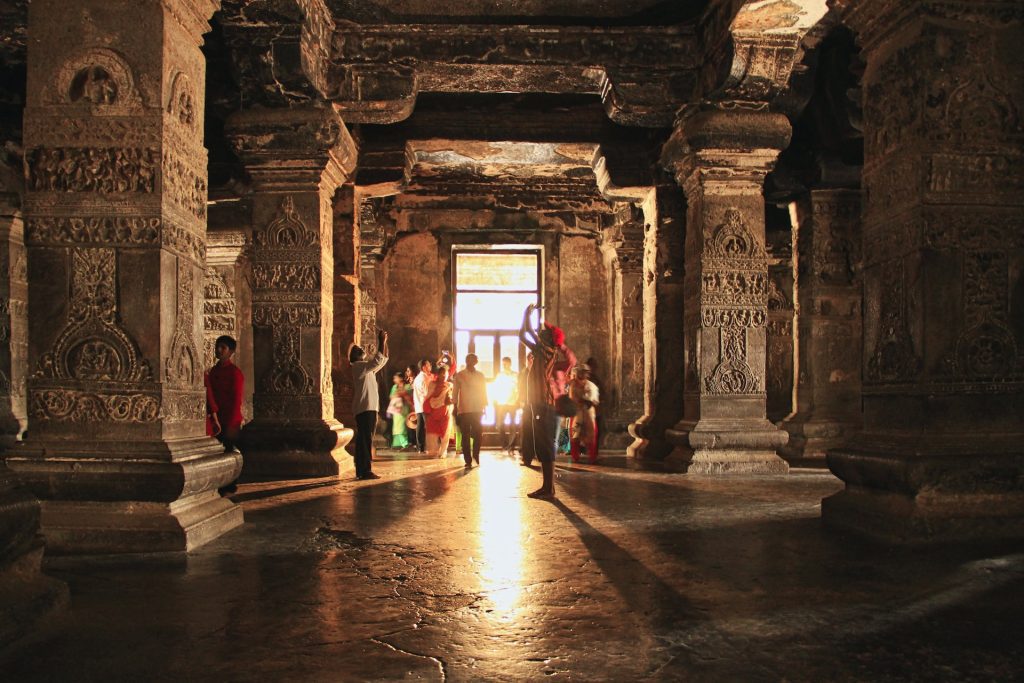
Ajanta & Ellora Caves in Maharashtra
Ajanta and Ellora caves , labeled as one of the brisk examples of ancient rock-cut caves, are nestled near Aurangabad in Maharashtra. The premises of Ajanta and Ellora are decorated with beautiful paintings, labyrinthine sculptures, frescoes, Buddhist monasteries, and Hindu and Jain temples. 29 Ajanta caves still persist and were constructed between the 2nd century BC and the 6th century AD. The Ellora Caves are more vicious with 34 in number, dating back to the 6th and 11th Century AD.
What speaks out in the entire Ajanta and Ellora Caves is the Kailash Temple , the primarily global and massive monolithic structure. The rock-cut caves of Ajanta and Ellora are some of the finest examples of ancient Indian architecture and sculpture.
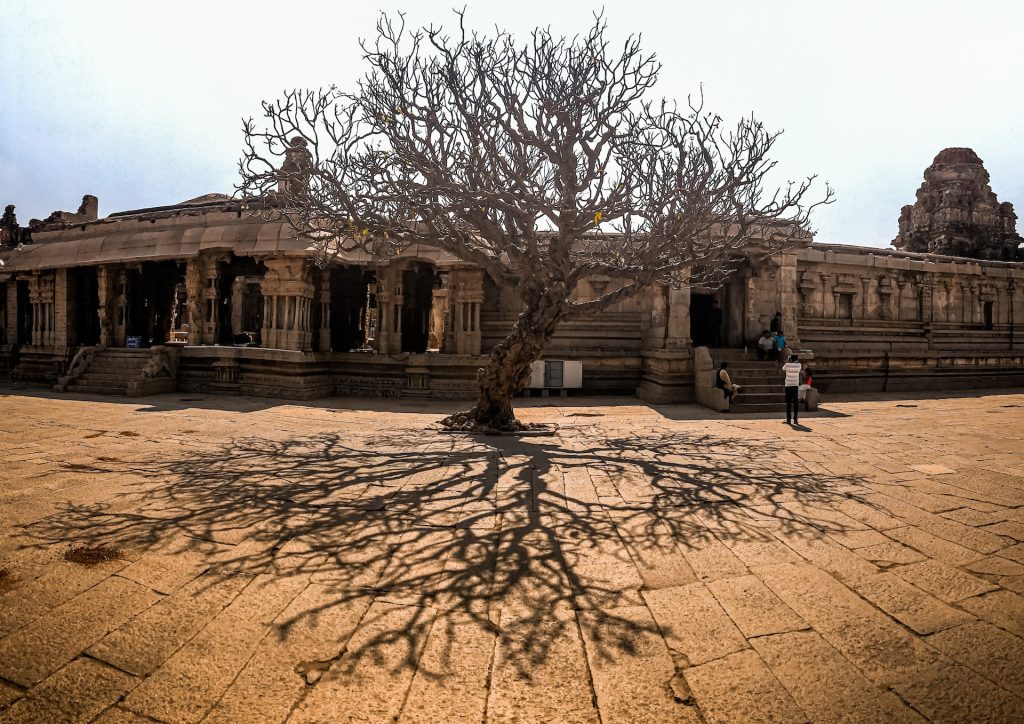
Hampi, Mysore, and More in Karnataka
Hampi is a UNESCO World Heritage Site, more so ‘the City of Ruins’. Amid the shadowed mystery of valleys and hills in the state of Karnataka, Hampi is a historical chapter for travelers. Come explore the 500 ancient monuments, intricate temples, jostling street markets, bastions, and treasury buildings of Hampi!
What more in Karnataka? The imposing mountains of Karnataka and its perpetually misty landscape will take you to Coorg , a famous coffee-producing hill station. Colloquially known as The City of Palaces, Mysore is one of the most ancient reigns in the country, bustling with vibrant royal heritage, ornate architecture, and silk sarees.
The Goa Beaches for Sunsets
North or South, the Goa beaches , though overcrowded now, are where sunsets enliven. Calangute Beach , the largest beach in North Goa, stretches from Candolim to Baga. Known for its water sports like parasailing, water surfing, banana riding, and jet-skiing, Calangute is one of the numerous beaches to revel at!
Fort Aguada is a 17th-century Portuguese fort, the Dudhsagar Falls is one of India’s tallest waterfalls, The Basilica of Bom Jesus Church is a UNESCO World Heritage Site… And there’s so much more! Just get on a bicycle and pedal into the interiors of Goa!
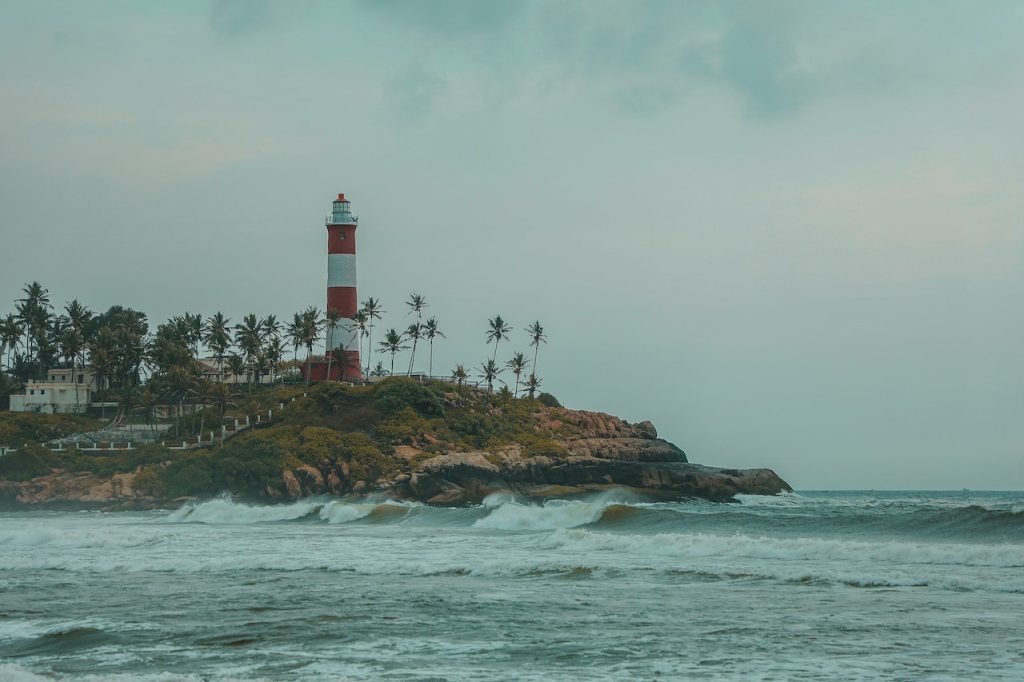
Munnar-Kovalam in Kerala
If you have the coastlines in mind, the small coastal town of Kovalam awaits you in Kerala, south of Thiruvananthapuram. Located along the bewitching Arabian Sea, the palm-backed beaches include Hawa Beach and Samudra Beach with three adjacent crescent beaches. A gigantic rocky promontory on the beach has given birth to a beautiful bay of calm waters promoting sea bathing.
Yet another astounding hill station on the lap of the Western Ghats, Munnar rises 1,600m above sea level. Time spent in the beguiling corners of this hilly retreat would mean hopping to picturesque mountains and rolling hills.
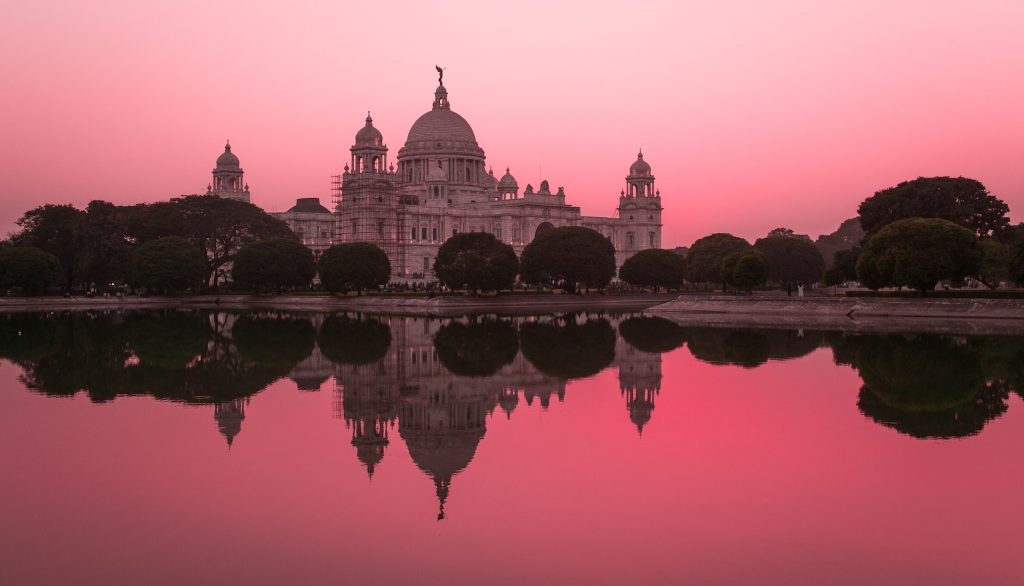
Accommodations in India
India is as budget-friendly as it gets. That goes true for food, accommodations, transport, and whatnot. From backpackers’ hostels to luxury heritage villas, the range is wide and caters to all budget-comfortable groups.
Dormitory in Backpackers’ Hostels
In every prime location like Delhi, Ahmedabad, Manali, or Jaipur, dormitories are as cheap as Rs. 250-500 ($3-$5). But in offbeat places or away from the main hub, chances of finding a hostel are low. Even then, private rooms can be Rs. 500-1000 ($5-12), depending on the region.
Homestays in the Mountains
The locals give out a room in their house to a guest so that you can experience the local ways of living, eat homemade authentic local food, and feel included rather than being in a hotel. By staying in homestays you can directly channel the money to the local communities. Homestays are all over the mountain regions of India, especially in Himachal Pradesh.
Unique Luxury Heritage Stays
In the royal States of Rajasthan and Gujarat, one can experience heritage hospitality at luxury palaces. The expenses can be anywhere between Rs. 5000-80000 ($65-$1000).
Say, Devpur Homestay , a 150-year-old heritage luxury palace, is the only functional Darbargadh in Kutch Gujarat. You can dine with the existing family in Devpur, 35km away from Bhuj.
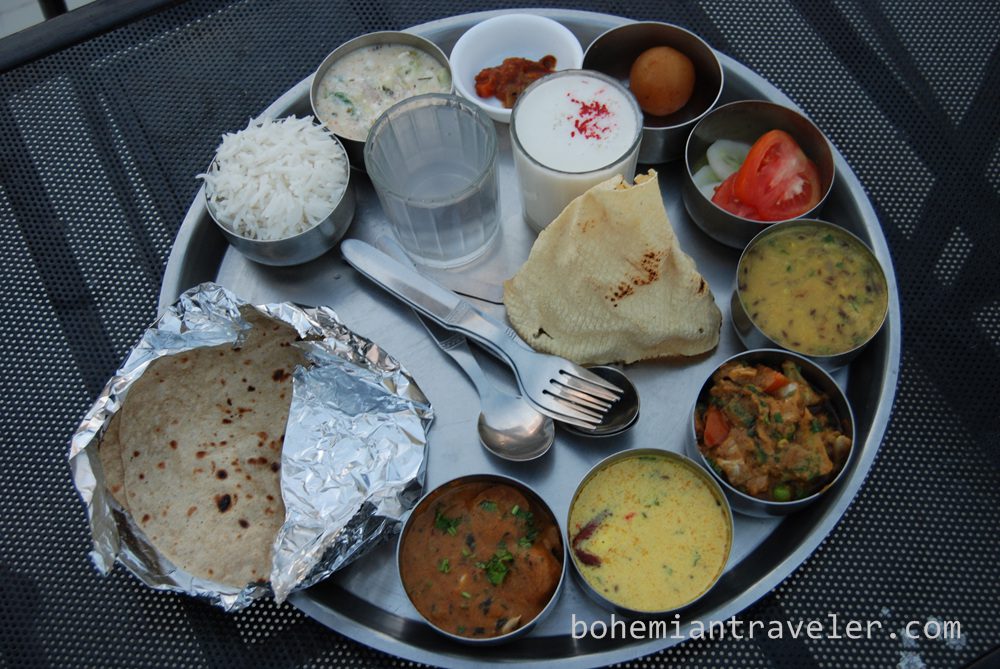
What to Eat in India – Local Delicacies
Rice, Dal, and Chapati certainly are the staples in India, but the sheer variety of pulses, vegetables, and regional-specific delicacies makes a food-lover fall in love with Indian food. Predominantly spicy, street foods like Bhelpuri (Mumbai), Jhalmuri (Bengal), and Bada Pav (Mumbai) dominate Indian street cuisine. Here are some street preps for street-food cravers (only veg):
Puchka (Kolkata)
Dabeli (Gujarat)
Kutchi Kadak (Kutch, Gujarat)
Cholle Bhaturey (Punjab)
Litti Chokha (Bihar)
Akki Rotti (Karnataka)
Chhole Kulche (Uttar Pradesh, Delhi)
Idli-Sambar (South India)
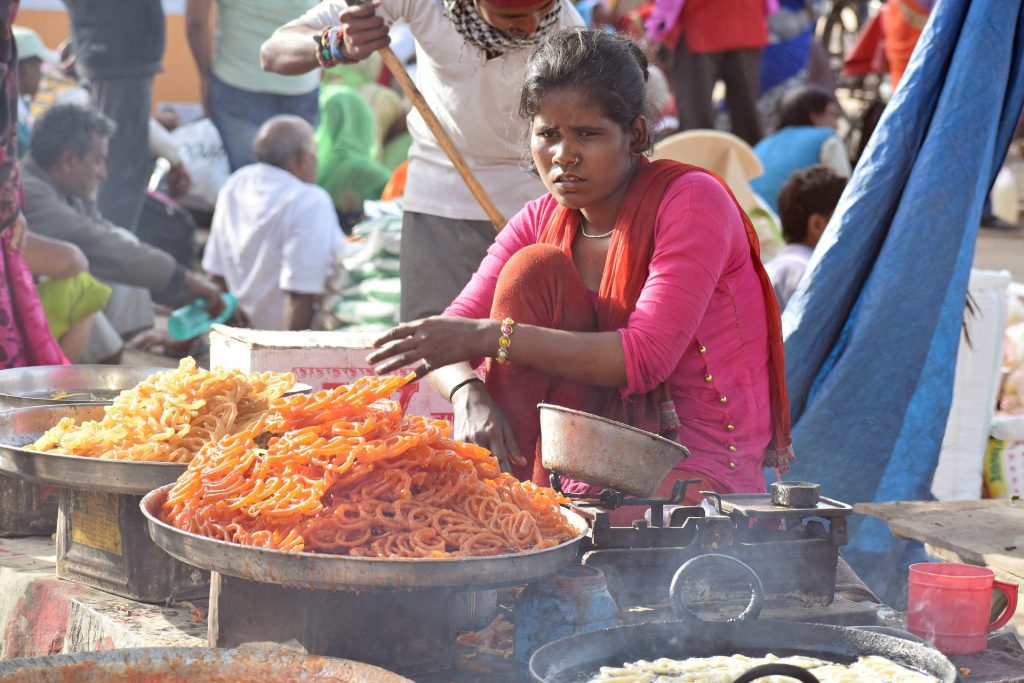
Apart from these hot and happening street food items, Indian Cuisine can be unique and distinct inside households in different parts of India. Here are some local vegetarian dishes that will truly give you the essence of Indian diversity.
Siddu – Local Himachali Food
Siddu is a local dish, served with homemade ghee or chutney, and prepared especially around Kullu Valley and Parvati Valley of Himachal Pradesh. The outer part is a lot similar to Momo, only bigger. Peanuts, apricot, and other ingredients can be used for stuffing. The Chutney, locally known as Beri, is sauteed in onion, peanut paste, and mint. The flour dough (often mixed with yeast) is prepared in thick puffs, and a spoonful of the Chutney is stuffed inside. You will find Siddu in Shimla, Manali, Kasol, McLeodganj, Bir, and other parts of Himachal. The local shops that sell Siddu are less, but ask any local and they will tell you where to find Siddu.
Siddu has another variation with rice & curry in Tirthan Valley. They make a mix of rice, curry, and small chunks of Siddu. This is called Siru Phimra.
Rice Babru and Seera – More of Himachal
Babru is a fermented-rice-based preparation, more like a Himachali thick flatbread. Babru is more welcoming in the Chamba and Kangra districts of Himachal, and often don’t travel outside the households. Cafe Buransh in Bir in Kangra district is a beautiful place to find Babru, Siddu, and even Himachal’s own variety of the Indian dessert, Seera.
Chhutagi and Butter Tea in Leh-Ladakh
‘Water Bread’, is the literal translation of Chhutagi (chhu means “water” and tagi is “bread” in the Ladakhi language). The flattened dough is usually segregated into circular shapes. The dough is often cooked in a thick soup of either vegetables or meat. Chhutagi can be found in the local restaurants in Leh. What’s better than twinning Chhutagi with a cup of butter tea, more famous as gur-gur chai?
Burans Juice – Welcome Drink of Uttarakhand
Rhododendron, known as Burans in Uttarakhand, serves as the State flower, and Burans juice, a delectable healthy glass of fresh liquid, welcomes guests to the rural Garhwal and Kumaon regions. Burans is edible, and you will find the locals eating the flower raw.
Loquat and Kyaat – local fruits in Kangra
Loquat and Kyaat, orange and maroon in colors, occupy the Kangra Valley of Himachal. Kyaat is more like Kaphal, a variation of berries found in Northern India, Nepal, and Bhutan.
Gucchi, Kasrooh, and Fafdu – Local Veggies from the Forests of Chamba
From the forests of Kalatop Wildlife Sanctuary, the locals of Chamba seek out raw vegetables for their own kitchens and seldom sell them in the market. Fresh, nutritious, and unique to the region.

Sweets of Bengal – Patishapta, Roshomalai, Baked Roshogolla!
Bengal still upholds the place of millions of sweet lovers, Bengalis especially, for in Kolkata, Krishnanagar, Joynagar, and the Sundarbans areas, the variations of sweets will make you gape at the sweet shops! Baked Roshogolla, Roshomalai, chocolate sweets, Pitha, Soan Papdi, Jilipi, Mishti Doi and Shondesh are some of the mouth-watering sweets to eat in Kolkata ! Balaram Mullick & Radharaman Mullick is the answer for you!
Rajasthani Thali – For the Spicy Indian Food Lovers!
Dal-Bati-Churma is what the Rajasthanis love. Their spice-laden Thalis are to be savored at least once! Kadhi, five-ingredient Dal, Gatta Saag, Wadi – the traditional platter only gets fatter and thicker. Read this to learn what goes into a Rajasthani Thali .
Biryani from Hyderabad and Lucknow
History has witnessed the flavors of Hyderabadi and Lucknowi Biryani, and the hungry aroma reigns these antiquated cities of India. Dig in your plate of Awadhi Biryani in the regal style!
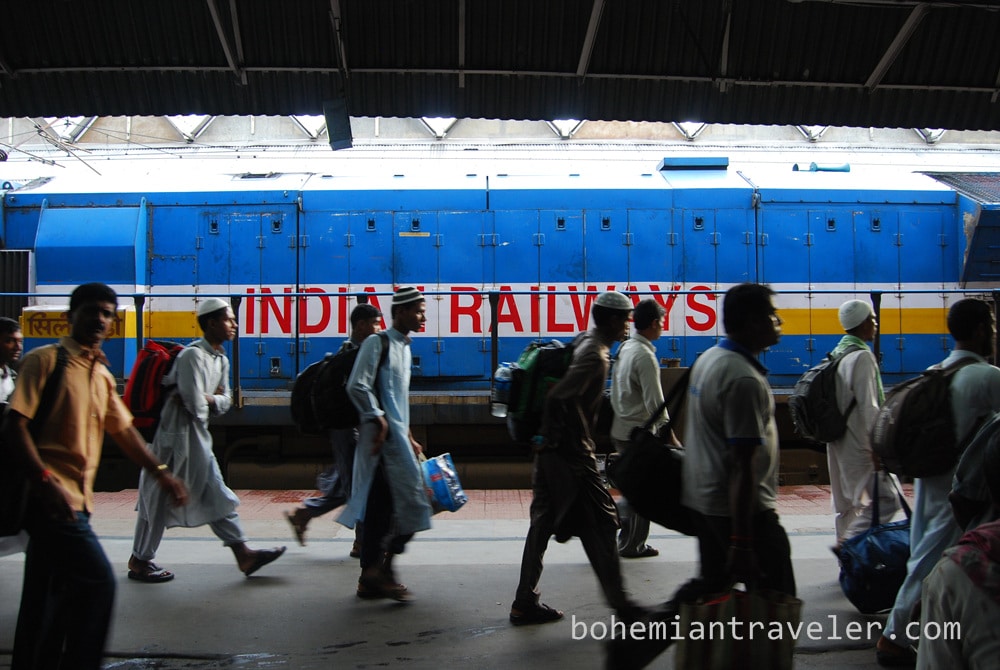
How to Get Around India
For first-time visitors to India, be assured that connectivity all over the country is remarkably easy and reliable.
The entire country is connected via both local State-specific buses and Volvo buses. Redbus, Abhibus, and Zingbus are some of the operators. You can book your Volvo buses online from their websites. The local buses can also be booked online through their specific websites. For example, to book buses running to Himachal, go to www.hrtchp.com and book directly! Or, the ticket counter is always open for in-person bookings at the departure stations.
By Cab or Auto
Private cabs/Taxis and autos are always available at every bus stand and railway station. Uber and Ola are cab service providers operating in India. For inexpensive bike rides, download the Rapido App!
Railways are fast, smooth, and convenient for long-distance journeys across India. You can book trains on irctc.co.in or download their app. You can also track live train locations via RailYatri and other trackers.
Most of the States of India have a domestic airport. Kerala, Tamil Nadu, Leh, Meghalaya, Jaipur – India connects itself conveniently through flights.
By Rickshaw
In cities like Delhi and Kolkata, you can haul a rickshaw for a short ride (within 3-4 km).
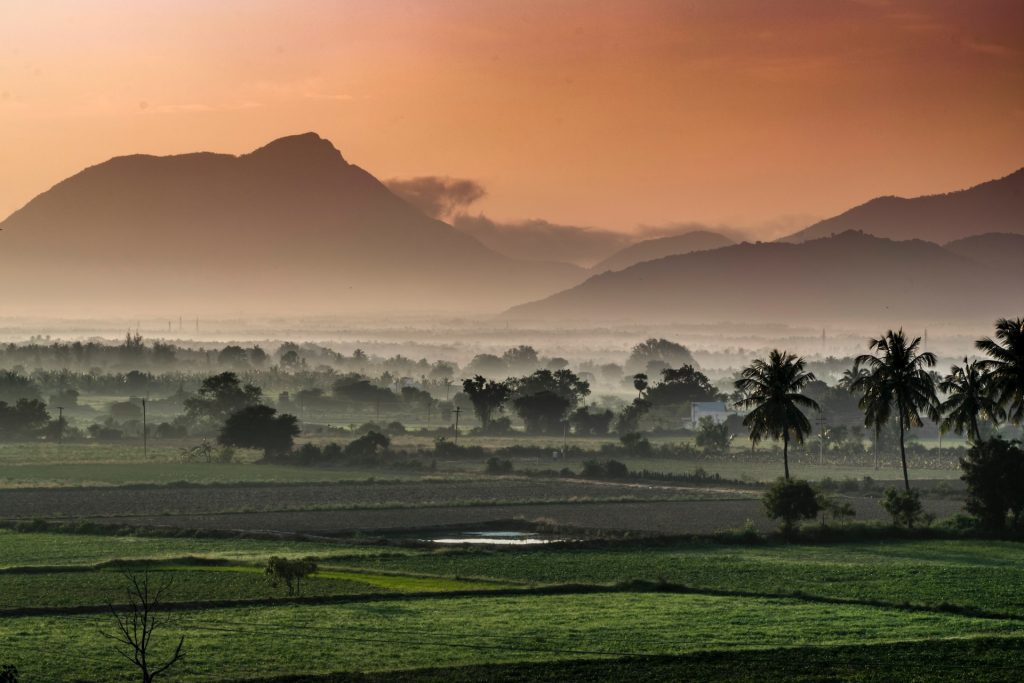
When is the Best Time to Visit India?
There is always something to explore in India in every season , even in the monsoons. The regional diversity is so varied that in one way or another, India will flash its impeccable beauty. Here are some region-favored suggestions for the intrepid traveler.
November to March
The ideal suggestion for a month-long visit to India is to witness the winters. North and North-East India would gradient to snowfall , and the Southern parts of Goa and Kerala would be pleasant . This is the only period when South India cools down from its scorching sunny weather.
If you have Rajasthan and Gujarat in mind, try not to exceed the period of ‘December to March’, because, after March, Rajasthan moves towards 55 degrees and above.
April to June
Yay the summers! The snow has melted in the mountains. The hot days and pleasant nights lure tourists to Uttarakhand, Himachal, Leh-Ladakh, Jammu-Kashmir, Sikkim, and the North-East!
The rest of India becomes excruciatingly hot in the summer! Bengal, Gujarat, Delhi, Maharashtra!
July-August
North-Eastern States like Meghalaya, Nagaland, and Tripura sweat the rain out of their cloudy pockets, barring tourists from visiting these places (unless you want to stay cooped up in a room and enjoy the rain).
The bustling cities in the plains have a different flavor in the monsoons. The heat is tolerable with the insatiable showers. Only a little rain flows in Rajasthan.
September-October
Monsoons have evaporated, and Spring is opening up tourism with smiles and flowers all over India.

Safety in India – Is it safe for women to travel alone
The uncharted India scoops out the question, ‘Is India safe? Especially for solo female travelers ?’ The question of women’s safety can never truly be answered . What we can focus on is the country’s overall environment. India is safe, yes. But there are some things to consider.
As a woman, it’s advisable not to wear anything too attention-driven aka revealing, unless you are in an absolutely safe environment (as per your instinct). End your days early and cut short the nights to avoid any unforeseen danger.
Barring the backpackers’ hubs where people are used to the pool of tourists, the natives hadn’t truly comprehended the ‘mystery’ of women walking alone in clothes that reveal too much skin! If nothing further, the stares can be lethal and uncomfortable for both parties.
But as a whole, Indian hospitality , typically in the hill stations, would leave you speechless. Warmth would surpass any fear of harm. All-in-all, India is conditionally safe, and an easy country to travel across.
India Travel Guide: Need-to-Know Travel Practicalities
Currency of India: Indian Rupees (INR) is the currency of India. As of October 2023, USD 1 = 83 Indian Rupees (Euro 1 = 88 Indian Rupees).
Sim Card in India : The most powerful internet connectors all over India are Jio and Airtel (prepaid). Only for the Ladakh-Jammu-Kashmir region, you will have to buy a postpaid local sim of Airtel, Jio, or BSNL. The activation of the sim card is immediate and hassle-free.
Share this:
About the author.
Ipsita Paul
Related posts.

Quiet Beach Towns of Southern Portugal

Europe: Step by Step
Riding on the city of new orleans.

Chilled out in Tobago
Leave a comment cancel reply.
Your email address will not be published. Required fields are marked *
Notify me of follow-up comments by email.
Notify me of new posts by email.
Independent travel tips and inspiration delivered straight to your inbox.
One e-mail per month - No spam. We promise.
No thanks, I’m not interested in traveling the world.
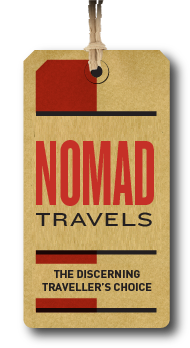
The discerning traveller's choice for the best hassle-free holidays in India and abroad.
Welcome to the world of Nomad
India is many things to many people: rich, vibrant, mystical, magical, exquisite- and sometimes, just a little overwhelming. Huge battle scarred forts, mighty rivers, pristine snow capped peaks, quaint villages, dense forests, balmy beaches, bustling cities. And of course, elephants, snake charmers and fakirs!
We at Nomad Travels understand and know India. And we love to show it off!
We organize cultural and architectural tours, motorcycle and camel safaris, wild life sanctuary visits and a variety of custom designed itineraries. Besides all this, we also offer tours to some striking international destinations: take a look at our 15 day self-drive tour of New Zealand that covers the best of both islands!
The itineraries on this site are all eminently workable. They're tried and tested, but you needn’t restrict yourself to just these. We'll be happy to customize and redesign our tours to suit your individual preferences; India has something for everyone! So send us a message with your requirements and we'll respond promptly.
Rajasthan’s Ranthambore National Park has a rich diversity of plant and animal life. There are over 80 tigers in the sanctuary now, making your chances of spotting one very good!

Photo credit: bjoern
Take me there >
TESTIMONIALS
“ Thank you so much for working around my business and teaching arrangements and helping me figure out a great way to spend a spare week solo on the Golden Triangle! All your arrangements were flawless- I insisted on taking the train because I like trains and I was always impressed that the new driver at the destination was magically able to find me and whisk me away to lunch or sightseeing... ”
Read more >
PICTURE GALLERY
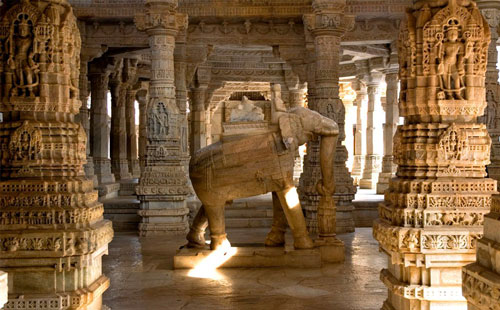
Photo courtesy: Paul Asman & Jill Lenoble
WRITE TO US
Home Packages Travelling in India Utilities Gallery Sitemap Contact
Terms of Use Privacy Policy Disclaimer
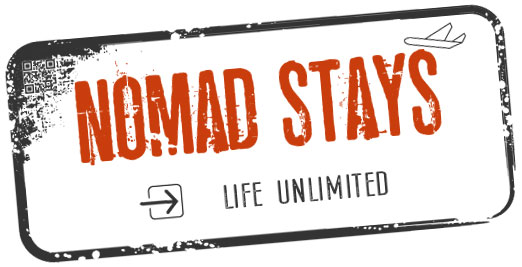
80 Countries
290 locations, remote working in india.

- Share on Facebook
- Share on LinkedIn
Best Places to Live & Work as a Digital Nomad in India
Digital nomad guide: india.
India is the great melting pot of culture and humanity. The subcontinent is home to many peoples and lifestyles. First time visitors might be surprised to see the country ranges from bustling, noisy cities like Delhi & Mumbai, to quiet secluded areas like Kerala, Goa and the Himalayan regions.
The Nomad Marketplace

Global Startup Mentoring
Going global with the right strategy gets you to the end-result faster and easier. Our team of mentors can help smooth your path. We've been there ourselves.
 (35).jpg?width=465)
Europe eSIM
Roam through 37 European countries for the next 60 days with your new Nomad Stays eSIM. As soon as you land you're connected and ready to order Uber, takeout or call your friends.
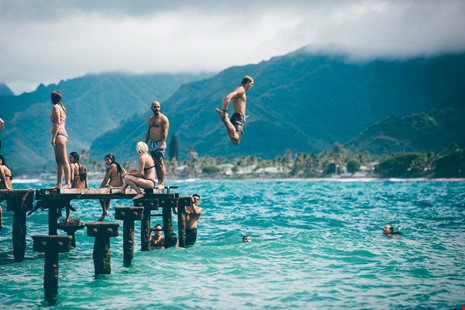
Genki: Insurance for Nomads
Worldwide travel health insurance for citizens of any country. Flexible monthly plan (cancel anytime). Sign up now in 2 minutes from anywhere in the world
.jpg?width=465)
2nd Swiss Nomad Fest 2024
Join the 2nd Nomad Fest Switzerland in September 2024 in Saint Bernard to celebrate the freedom lifestyle, connect with nature & like-minded people.

The Nomad World Fest
The Nomad World Fest is a transformative experience for digital nomads and remote workers from across the globe.
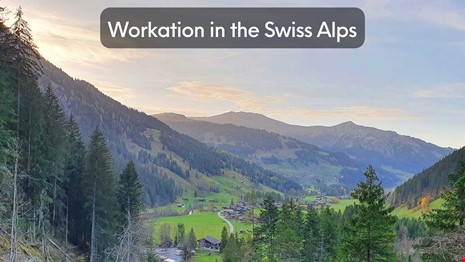
Workation in the Swiss Alps
We welcome digital nomads and remote workers in the Swiss Alps (Lenk). Flexible stays. For solo individuals, couples and families.

TUF Minds APP
Drastically improve mental health & wellbeing. Saves lives from suicide by providing mental resilience & suicide intervention programs. By Drs J & E McIntosh

The Workation Concierge
Planning workations so busy professionals can travel more while: - Keeping their steady paychecks - Using no PTO - Not waiting for retirement
 (37).jpg?width=465)
Roam through the United States of America for the next 60 days with your new Nomad Stays eSIM. As soon as you land you're connected and ready to order Uber, takeout or call your friends.

Latin America eSIM
Roam through 17 Latin American (LATAM) countries for the next 60 days with your new Nomad Stays eSIM. As soon as you land you're connected and ready to order

Hire From Anywhere Solved
Confused about how to implement work or hire from anywhere in your company? Our custom algorithm gets you straight to the solutions helping you retain your best talent and take advantage of a global talent pool. Whether it's a digital nomad visa, using an Employer of Record or opening an entity, our platform will help you get to the solution you need for your company.
.jpg?width=465)
Roam through 15 Asian countries for the next 60 days with your new Nomad Stays eSIM. As soon as you land you're connected and ready to order Uber, takeout or call your friends.
.jpg?width=465)
Australia and NZ eSIM
Roam through Australia and New Zealand for the next 60 days with your new Nomad Stays eSIM. As soon as you land you're connected and ready to order Uber, takeout or call your friends.
 (34).jpg?width=465)
Caribbean eSIM
Roam through 14 Caribbean countries for the next 60 days with your new Nomad Stays eSIM. As soon as you land you're connected and ready to order Uber, takeout or call your friends.

SafetyWing Health Insurance
Worldwide travel medical or 12-month health insurance for residents of 175+ countries. Built for Digital Nomads + Adventure Sports & Electronics Coverage.

Get a US Company Today
Getting your own US company as a foreigner is easier & cheaper than you thought. US LLC's can be tax free too. Easy bank accounts too. Great for US clients.
Coworking in India
Sign up and start saving today, want to become a stay partner, as featured in.

- WANT TO LIST YOUR STAY? - CLICK HERE
Join as a Nomad Member
* currently free.
Weekly Must-Reads View All
Gemütlichkeit
South Korea
Gangnam Style
Crossroads of Civilizations
Trending Now View All

Overview Hide
I. the basics, ii. living in india as a digital nomad, iii. cities to consider, iv. off the beaten track, v. visas and legal requirements for digital nomads in india , vi. tips for a smooth landing in india , vii. in summary.
The first time you step onto Indian soil, the symphony of honking rickshaws, chattering locals peddling chai and samosas, and the timeless silhouettes of temples envelop you. It’s a sensory experience that’s as bewildering as it is enchanting.
But it’s not just the kaleidoscopic chaos of its streets that beckon the nomad. No, it’s the promise of affordable living, corners of serenity amidst the bustle, and that cozy little café in Bangalore serving especially frothy cappuccinos while boasting a lightning-fast internet connection.
And let’s not forget the co-working spaces that have sprouted up, from the beaches of Goa to the Himalayan foothills of Dharamshala. Nestled alongside yoga retreats and Ayurvedic cafes, these modern hubs of connectivity serve as sanctuaries for the world’s wandering workforce. It’s here that one might find a software developer from Berlin sharing lunch with a graphic designer from Tokyo, both brought together by the intoxicating digital tide that’s sweeping the globe.
But beyond the hum of keyboards and the glow of screens, India offers is guaranteed to provide a memorable experience. One minute you might be on a Zoom call with a client, and the next, an elderly man, wrapped in a white dhoti, might share tales of his ancestors and their adventures, echoing a timelessness that the digital age can scarcely fathom.
So, as you set up your virtual office against the backdrop of a setting sun or amidst the shadows of ancient forts, you’ll realize that in India, you’re not just working; you’re intertwining your narrative with lore as old as the ages, woven into a vibrant tapestry of myths, sagas, and enduring traditions.
Cost of living
India is known for its affordability compared to Western countries, though costs can vary widely depending on the city or region. Here’s a quick rundown of some main expenses:
- Metro Cities (e.g., Mumbai, Delhi): Rent for a 1-bedroom apartment in city center ranges from ₹25,000 to ₹50,000 ($340 to $680) per month.
- Smaller Cities (e.g., Jaipur, Coimbatore): Rent ranges from ₹10,000 to ₹20,000 ($135 to $270) per month.
- Roughly ₹2,000 to ₹5,000 ($27 to $68) per month for an 85 m2 apartment.
- Basic meal for one person: ₹150 to ₹500 ($2 to $7)
- Monthly groceries for one person: ₹3,000 to ₹6,000 ($40 to $80).
- Monthly public transportation pass: ₹500 to ₹2,000 ($7 to $27)
- Auto rickshaw/taxi ride (short distance): ₹50 to ₹200 ($0.70 to $2.70).
- Meal at a mid-range restaurant: ₹500 to ₹1,500 ($7 to $20).
- Movie ticket: ₹150 to ₹500 ($2 to $7)
- Monthly gym membership: ₹1,000 to ₹3,000 ($14 to $40).
Connectivity and infrastructure
India is home to one of the world’s largest internet user bases, and this is reflected in its rapidly expanding digital infrastructure. Major cities such as Bengaluru, Mumbai, Delhi, Hyderabad, and Pune offer high-speed broadband and 4G connectivity, ensuring that digital nomads can work uninterrupted. As of recent years, even smaller towns and some villages have seen an expansion in 4G coverage, thanks to nationwide digital initiatives.
Reflecting its booming startup culture, cities across India have seen a surge in the number of co-working spaces. Companies like WeWork, 91springboard, and CoWrks offer plush workspaces with amenities like high-speed internet, conference rooms, and even relaxation zones.
The metro systems in cities like Delhi, Mumbai, and Kolkata are state-of-the-art and continue to expand. They offer a reprieve from the often congested roads and serve as a primary mode of transportation for many. Buses, auto-rickshaws, and app-based cab services like Ola and Uber ensure that intra-city travel is rarely a hassle. For inter-city travels, the vast railway network is a reliable option, while domestic flights connect all major cities efficiently.
Hospitals & Clinics: India has numerous multi-speciality hospitals with state-of-the-art facilities, particularly in urban areas. Hospitals like Apollo, Fortis, and Max Healthcare are renowned for their medical services and attract patients not just from within the country but also from abroad.
Pharmaceuticals: Medicines in India are generally more affordable than in many Western nations, and pharmacies are plentiful. However, it’s always recommended to purchase from reputable pharmacies and avoid buying over-the-counter medications without a prescription.
Vaccinations & Precautions: If you’re new to India, it’s essential to be updated on certain vaccinations like typhoid, hepatitis, and tetanus. It’s also recommended to carry a good-quality mosquito repellent and to drink bottled or boiled water to avoid water-borne diseases.
Alternative Medicine: India is the birthplace of Ayurveda, Yoga, and Unani – traditional methods of healing that many still prefer. There are accredited centers and institutions dedicated to these practices across the country.
While India is generally safe for tourists, it’s wise to keep an eye on personal belongings, especially in crowded areas. Licensed taxis or recognized app-based services are the best modes of transportation to ensure safety. Many women travel through India without incident, however it’s essential to take added precautions, especially after dark. Stick to well-lit areas and consider traveling in groups when possible. As with many tourist destinations, be wary of potential scams, especially in markets or tourist-heavy areas. Do your research, negotiate prices, and be wary of deals that seem too good to be true.
India’s climate is as vast and varied as the nation itself. Winter months, spanning from October to February, present cooler days, especially in the north where temperatures can dip to 10°C, while the southern regions hover around a more moderate 25°C. It’s not uncommon for the Himalayan belts to glimpse temperatures plunging below freezing during this period.
Transitioning to summer, from March to May, the nation heats up. Inland areas can witness the mercury soaring above 40°C, while the coastal zones maintain a relatively cooler average between 30°C and 35°C. By June, the monsoon season announces its arrival, with substantial rainfall drenching the west coast, the northeast, and the Himalayan foothills, and more sporadic, moderate showers seen in the central and northwestern parts of the country.
India, in its sweeping expanse, offers a mosaic of natural environments, each more captivating than the last. Begin in the deserts of Rajasthan, where the arid landscapes tell tales of resilience and beauty, where sand dunes shimmer under a relentless sun and nights are embroidered with a canopy of stars.
Travel east, and the Gangetic plains stretch out, an endless sea of fertile land, shaped and nurtured by the perennial rivers that crisscross its heart. Here, the landscape morphs from vast farmlands to dense sal forests, creating a sanctuary for diverse wildlife and echoing with the songs of myriad birds.
Journey south, and the Western Ghats rise, a rugged spine cloaked in emerald forests. This biodiversity hotspot, with its intricate network of rainforests, grasslands, and shola woods, plays host to a plethora of endemic species, from colorful frogs to elusive big cats.
Venture to the northeastern states, where the landscapes take a dramatic turn. Lofty mountains are blanketed with misty rainforests, while the Brahmaputra valley showcases its fertile plains, interspersed with wetlands teeming with life. The remote stretches of Arunachal Pradesh, in particular, exude an untouched beauty, where orchids bloom wild and rivers chart their own course.
And then, there’s the coastal belt – a vast stretch from the mangroves of Sundarbans in the east to the sandy shores of Gujarat in the west. This dynamic interface between land and sea harbors rich ecosystems, including coral reefs, salt marshes, and estuaries.
Each of these environments, distinct and dramatic in their own right, form the intricate weave of India’s natural tapestry, inviting explorers to immerse themselves in its diverse splendor.
Wandering through India is akin to flipping through a multi-layered novel where every page narrates a different story. Take Bangalore, for example, where tech-savvy millennials zip through traffic on their motorbikes, earbuds in, listening to the latest podcast episode. Yet, just around the corner, there might be a traditional puppet show unfolding, recounting ancient tales of valor and romance.
And while the urban hubs race against time, places like Varanasi seem to float in a bygone era, where the Ganges witnesses daily rites that have remained unchanged for millennia. Whether it’s the tantalizing scents from a local spice market or the dulcet tones of a classical raga performed in a moonlit courtyard, India’s lifestyle is a medley of the timeless and the contemporary, always offering the unexpected.
Attempting to sum up Indian food is like trying to explain the rules of cricket to an American – complex, vast, and always a little spicy. Just when you think you’ve figured out the nuances of a masala dosa in the south, you’re hit with the robust flavors of a Punjabi butter chicken. And the street food! Ah, a game of Russian roulette for the stomach. You might find yourself devouring the best samosa of your life, or you could spend the night getting well-acquainted with the bathroom tiles. But it’s all worth it. Every bite.
One might say that India doesn’t sleep; it just changes its mood. The cities don their nocturnal best with aplomb. Mumbai’s nightlife, for instance, offers everything from swanky rooftop bars with views that can make your heart skip a beat, to underground music dens echoing with the sounds of indie bands.
Meanwhile, places like Jaipur surprise with their quiet charm, where a night might be best spent under the stars, listening to a folk musician strum tales of yore. But if dancing on the beach with the waves for company is your idea of a night well spent, Goa has got you covered. And, every so often, a trip down the more cultural lanes offers nights adorned with traditional dances, music, and drama – showcasing India’s soul, untouched by time.
India is often referred to as a subcontinent, and for good reason. Its vast expanse encapsulates a myriad of cultures, each deeply rooted in a tapestry of history that stretches back over five millennia. At every turn, stories of ancient dynasties, architectural marvels, and profound philosophies come alive.
Start at the iconic Taj Mahal in Agra, a symbol of eternal love, then head to the sun-kissed forts of Rajasthan that speak of valor and grandeur. In the south, the intricately carved temples of Tamil Nadu, such as the Meenakshi Amman Temple, offer glimpses into Dravidian heritage. Meanwhile, the ruins of Hampi transport you to the opulent Vijayanagara empire.
The culture is not just in the relics of the past, but in the everyday too. Festivals, often spectacular in their display, are celebrated with fervor regardless of the region. From the vibrant dances of Navratri in Gujarat to the serene boat races in Kerala during Onam, each festivity showcases India’s cultural diversity.
With over 2,000 distinct languages and dialects spoken across its expanse, India truly is a linguist’s dream. However, Hindi in the Devanagari script is the most widely spoken language and, along with English, serves as an official language. In fact, thanks to the British colonial history and a strong emphasis on English education in schools, many urban Indians are fluent in English. This makes it relatively easy for tourists and travelers to navigate, converse, and conduct business.
In more rural areas, while English might be less common, the universal language of gestures, smiles, and the occasional head bobble bridges any communication gap. The key in India, as travelers often find, is less about understanding every word and more about immersing oneself in the rhythm of conversation.
Mumbai is India’s financial powerhouse, fashion epicenter, and a pulse point of religious tension. It’s a city of diverse and vibrant neighborhoods, from the historic British district of Fort to the fishing hub of Versova. Don’t miss the chance to wander through the Chhatrapati Shivaji Maharaj Vastu Sangrahalaya, where art and antiquities span centuries, or the busy lanes of Crawford Market.
Known as the Silicon Valley of India, Bangalore is a hub of energy and innovation, with a sprawling range of tech parks and IT campuses. It boasts a mild climate year-round, and green spaces like Cubbon Park offer an escape from the city buzz. The city is known for its trendy cafes and craft beer culture, and it hosts numerous international and local events and festivals throughout the year.
The capital city is a sprawling metropolis that encompasses the old and the new. Architectural relics of several empires stand littered across the city, notably the Mughal treasures of Old Delhi, and the colonial-era parliament buildings. The Lotus Temple and Akshardham Temple showcase remarkable modern interpretations of spiritual architecture.
This vibrant city is a major hub for education, with a high student population and a range of prestigious universities and institutions. Its cultural scene is rich, with regular classical music festivals, theater performances, and a burgeoning range of international dining options.
Goa is more than beaches and trance parties. A kaleidoscopic blend of Indian and Portuguese cultures, it offers a unique mix of sun, seafood, and spirituality. It’s a popular destination for yoga and wellness retreats. North Goa tends to be more developed and touristic, while South Goa has quieter shores and luxury resorts.
Kochi (or Cochin) is a seaport city that’s had international merchants for centuries, and it shows in its architecture: from the 400-year-old synagogue in Jew Town to the iconic Chinese fishing nets at Fort Kochi. Kochi is also a center for Keralan arts and one of the best places to see Kathakali and kalarippayat.
The capital of Rajasthan, Jaipur is a gateway to India’s most flamboyant state. Known as the Pink City, it’s famed for its intensely colorful streets and remarkable architectural and cultural sites, including the Amber Fort, City Palace, and the Hawa Mahal. It’s also a shopper’s paradise, with an enticing array of handicrafts, textiles, and gems available in both bustling markets and modern boutiques.
Each of these cities offers a unique experience, from the buzzing urban mosaic of Mumbai to the serene, scenic beaches of Goa, and the vibrant bazaars and historic palaces of Jaipur. They represent different facets of India, catering to various tastes, from the tech enthusiast to the wellness seeker.
Dharamshala & McLeod Ganj
Nestled in the foothills of the Himalayas in the northern Indian state of Himachal Pradesh, Dharamshala and McLeod Ganj are twin towns known for their serene environment and beautiful landscapes. McLeod Ganj is the residence of the Dalai Lama and is a hub for Tibetan culture, meditation, and yoga. The towns boast decent internet connectivity and a growing number of co-working spaces, with relatively low living costs that include numerous budget-friendly guesthouses, homestays, and eateries.
Kasol is a small village in the Parvati Valley in northern India. Often referred to as ‘Little Israel’ due to the significant number of Israeli tourists it attracts, Kasol is surrounded by beautiful landscapes and exudes a relaxed, chill vibe. There are numerous cafes where one can set up a temporary workstation. The internet connectivity can be patchy but is generally sufficient for work, and the living costs are relatively low.
Situated along the Ganges River in the northern state of Uttarakhand, Rishikesh is known as the ‘Yoga Capital of the World’. This spiritual city is replete with ashrams and yoga centers and is a peaceful place to live and work. There are several cafes and co-working spaces with good Wi-Fi connectivity, and the cost of living varies, catering to both budget travelers and those looking for more luxurious accommodations.
Pushkar is a small, holy town in the western Indian state of Rajasthan. Known for the sacred Pushkar Lake and its annual camel fair, Pushkar offers a calm and peaceful environment with a beautiful desert landscape. The internet speed is generally decent, and there are several quiet cafes where one can work. The living costs are affordable, with options ranging from budget to luxury stays.
Situated on the western coast of India in the state of Karnataka, Gokarna is a quieter and more relaxed alternative to Goa. Known for its pristine beaches and laid-back lifestyle, it is an ideal destination for those looking to work by the sea. Internet connectivity is generally good, especially in the town area, and there is a range of accommodations available from budget hostels to mid-range hotels.
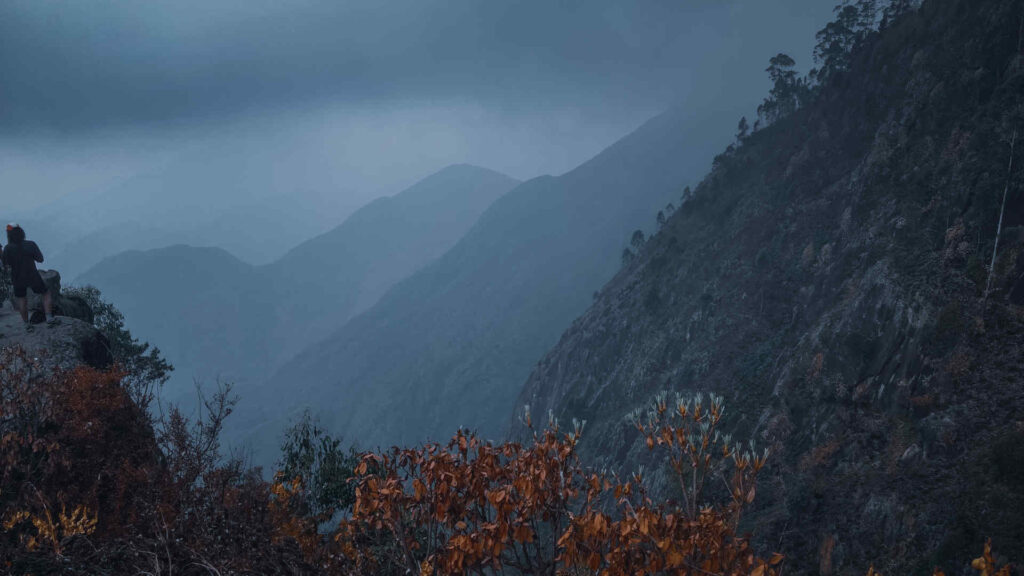
Coonoor is nestled in the Nilgiri Mountains in the southern state of Tamil Nadu. A quieter and less crowded alternative to Ooty, Coonoor is known for its lush green tea plantations and pleasant weather. The town has fairly good internet connectivity, making it suitable for remote work. The living costs in Coonoor vary, with a variety of accommodations available, from budget options to luxurious colonial-era bungalows.
Ziro, Arunachal Pradesh
Ziro is a picturesque town in the northeastern state of Arunachal Pradesh. Known for its World Heritage-listed rice fields and the annual Ziro Music Festival, this destination is perfect for someone looking to immerse themselves in nature and local tribal culture. However, internet connectivity can be spotty in Ziro, so it’s important to have a backup plan for work. The living costs are affordable, and homestays are a popular and inexpensive option. Additionally, a special Inner Line Permit (ILP) is required to enter Arunachal Pradesh.
India does not currently have a specific visa category explicitly designed for digital nomads or remote workers. However, there are several types of visas that foreign nationals typically use to visit and potentially work in India, depending on their circumstances. Here’s a general overview of the types of visas, the application process, and necessary documentation:

Types of visas available for remote workers
1. tourist visa.
- Purpose : For individuals visiting India for leisure, sightseeing, and casual visits to meet friends or relatives.
- Duration : Typically granted for 6 months; some countries may be eligible for longer periods. Usually multiple entries are allowed.
- Work : Employment is not allowed under a tourist visa.
- Notes : Tourist visas are not extendable and cannot be converted into another visa category while in India.
2. Business Visa
- Purpose : For individuals visiting India for business meetings, negotiations, or attending business conferences related to their line of work or business. This is not equivalent to an employment visa and does not permit the holder to take up employment in India.
- Duration : Can vary, often ranging from 1 year to 5 years, and usually allows for multiple entries.
- Documentation : Usually requires a letter from both the sponsoring organization in India and the sending organization in the applicant’s home country.
- Notes : Terms of the business visa strictly forbid the holder from taking up employment in an Indian company and generally from receiving income from an Indian source.
3. Employment Visa
- Purpose : For professionals who have been employed by an Indian company, for individuals coming as volunteers, or for those who are engaged in specialized skilled work for an organization in India.
- Duration : Typically valid for the term of the contract or one year, whichever is shorter. Can often be extended in India.
- Salary Requirements : There may be a minimum salary requirement to be eligible for an employment visa, which is meant to ensure that the visa holder is a skilled professional.
- Documentation : Proof of employment with an Indian company, such as a contract, as well as proof of qualifications and credentials related to the job.
It is important to note that the regulations and conditions for each type of visa can be complex and subject to change. Furthermore, engaging in activities in India that are inconsistent with the type of visa held (such as working while on a tourist visa) can result in penalties, including fines, deportation, and bans from re-entering India.
For the most accurate and up-to-date information, it’s important to consult the Indian embassy or consulate in your home country or a legal professional.
Application process and necessary documentation
- All visa applications for India must be completed online. The application form is available on the official website of the Indian government or the embassy/consulate in your country.
- Must be valid for at least six months from the date of arrival in India and have at least two blank pages.
- Recent passport-sized color photographs as per the specified dimensions (usually 2 inches x 2 inches).
- A copy of your driver’s license or utility bill that matches the address on the application.
- Proof of travel plans, such as flight bookings showing arrival and departure dates.
- Pay the appropriate fee for your visa application. The fee varies depending on your country of residence and the type of visa you are applying for.
- For a business visa, you might need a letter from the sponsoring organization in India and your home country. For an employment visa, a contract with an Indian company and proof of qualifications may be required.
- After submitting your online application, schedule an appointment at the nearest Indian Visa Application Center or Indian Mission. Attend the appointment and submit your passport and supporting documents.
- After submission, your application will be reviewed, and if approved, the visa will be stamped into your passport.
- If you are staying in India for more than 180 days on a single visit, registration with the Foreigners Regional Registration Office (FRRO) or Foreigners Registration Office (FRO) is typically required within 14 days of arrival.
Finding accommodation
Upon your arrival in India, consider booking a hotel or guesthouse for the initial days. This allows you the time to acclimate to your new surroundings and explore various neighborhoods before committing to a longer-term rental. You can browse online platforms such as Airbnb and Booking.com, as well as local real estate websites, to get a sense of available rental options.
For extended stays, serviced apartments or “PG” (Paying Guest) accommodations are popular options; they are furnished and typically include utilities in the rent. It is advisable to personally inspect a property before making any payments, focusing on aspects like cleanliness, safety, proximity to essential services, and internet connectivity. In India, rent and lease terms are often open to negotiation, so don’t hesitate to discuss terms with potential landlords, especially if you plan to stay for an extended period.
Setting up local bank accounts and financial considerations
To open a bank account in India, you will generally need a valid visa (often valid for more than 180 days), proof of residence, your passport, and possibly a letter from your Indian employer. Before moving, it’s wise to consult with your home bank about international fees and look into the possibility of setting up a low-fee international account or travel card. Despite the growing popularity of digital payments in India, it is still common to use cash, especially in smaller towns and rural areas, so it’s a good practice to keep some cash on hand.
Navigating local transportation
For short distances within cities, auto-rickshaws and cycle-rickshaws are convenient modes of transport. It is important to negotiate the fare before the journey starts or insist on the use of the fare meter. In many Indian cities, ride-sharing apps like Ola and Uber are popular, offering a convenient and generally safe transportation option.
For longer intra-city travel, consider booking a prepaid taxi from a recognized service. Inter-city travel by train is a quintessential Indian experience; book your tickets in advance through the official IRCTC website or a travel agent. Buses are a more affordable, albeit often less comfortable, option for traveling between cities.
Adapting to local customs and cultural nuances
India is a country rich with diverse cultures and traditions. Dressing modestly, particularly in rural areas, is advisable. For women, wearing clothes that cover the shoulders and knees can often lead to a more comfortable experience. Indian society tends to be conservative with regard to public displays of affection. Simple acts, like hugging or holding hands, can attract attention and may be frowned upon in many places.
In Indian culture, the right hand is predominantly used for eating and for giving or receiving objects, as the left hand is traditionally considered unclean. When visiting someone’s home, a shop, or a religious site, it is customary to remove your shoes. Speaking of religious sites, they often have specific dress codes and rules, including restrictions on photography, so it’s best to be observant and respectful.
Communication in India is often indirect, so listening carefully and patiently is key, and it’s generally best to avoid being overly blunt or direct. Lastly, be prepared for a more relaxed sense of time, playfully referred to as “Indian Standard Time”. Appointments and schedules can be more fluid than in Western contexts, so a little patience goes a long way!
Remember, India is an incredibly varied country, and norms can differ widely from one region to another. When in doubt, observing local behavior and asking for advice is always a good approach.
- Cost of living: India is often significantly cheaper than Western countries, making it an appealing destination for digital nomads looking to lower their living expenses. Accommodation, food, and transportation can be very affordable.
- Cultural richness: India offers an incredibly diverse and rich cultural experience. Digital nomads have the opportunity to explore its history, traditions, festivals, and varied cuisines.
- Natural beauty and diversity: From the Himalayas in the north to the tropical beaches in the south, India has a diverse range of natural landscapes that appeal to different tastes and lifestyles.
- Growing community of nomads/expats: Certain cities and regions (e.g., Goa, Bangalore, and parts of Himachal Pradesh) have growing communities of digital nomads and expatriates, offering a sense of community and networking opportunities.
- Wellness and personal growth: India is the birthplace of yoga and a hub for various forms of meditation and spiritual practices. This appeals to those looking for personal development and mental well-being.
- Affordable healthcare: Medical procedures and health services are generally much less expensive in India compared to Western countries.
- Warm and hospitable people: Many travelers find the Indian people to be extremely warm and welcoming.
- Internet connectivity: While major cities have good internet infrastructure, smaller towns and rural areas may have unreliable and slow internet connectivity.
- Cultural differences and sensitivities: India has its own set of social norms and customs, and it might take time for outsiders to understand and adapt to these cultural nuances.
- Health concerns: Differences in food, water, and climate may lead to health issues for newcomers, such as ‘Delhi Belly’ (traveler’s diarrhea).
- Safety concerns: While millions of tourists visit India safely every year, it is important to take precautions, particularly for women, and to stay informed about the safety situation in different regions.
- Noise and pollution: Some of India’s cities are among the most polluted in the world, and noise can be a constant in many urban areas.
- Bureaucracy and legal complexities: The process of obtaining long-term visas can be cumbersome, and the regulations concerning work for digital nomads are not always clear.
- Climate extremes: Depending on the region, India can have extremely hot summers, cold winters, and intense monsoon seasons, which might not be comfortable for everyone.
In the sprawling, kaleidoscopic world that is India, digital nomads will find themselves in a land that defies easy categorization—a place where cutting-edge tech hubs coexist with timeless villages, and where every train journey becomes an epic tale.
For the budget-conscious nomad, India is a veritable haven; the cost of living can be astonishingly low, with sumptuous meals costing less than a latte back home. The land that birthed yoga invites you to morning asanas with a Himalayan backdrop, and the rich tapestry of Indian festivals is a constant, colorful invitation to partake in local culture.
In the same breath, India challenges with an intensity that can be exhausting. The internet, that lifeline of the digital nomad, is a fickle friend here—blazing fast in the gleaming towers of Bangalore, but a slow crawl in a Himalayan hideaway. The cacophony of Indian streets, teeming with life, is enchanting but can fray nerves over time, just as the air in some cities seems to be in visible revolt against the skies. And while the warmth of Indian hospitality is legendary, the bureaucratic hoops one might jump through for a long-term stay can feel like an elaborate national pastime.
In India, digital nomads won’t just find a new workspace, but a complex, captivating world that asks for patience and gives back in vibrant, unforgettable experiences. It’s a place where every pro is a story, and every con a lesson in resilience and adaptability.
French Polynesia
Atoll adventures
Mañana, mañana
Subscribe to the newsletter
Get updates on the latest destinations.
You May Also Like
The Middle Kingdom
Paradise found
Land of Smiles

- Published on September 24, 2023
The Complete India Digital Nomad Visa Guide (Updated 2024)
Is there a digital nomad visa in india.

IS THERE AN INDIAN DIGITAL NOMAD VISA?

India offers an eTourist Visa (Tourist e-Visa) with varying durations of 30 days, one year, and five years, which cannot be renewed. However, regardless of the visa duration, foreigners must exit and re-enter India every 90 days. Citizens of the USA, Canada , and Japan can obtain a tourist visa for up to 10 years, requiring them to leave and re-enter every 180 days.
- The eTourist Visa is available in three durations: 30 days, one year, and five years.
- The visa duration starts from the date of arrival in India.
India does not have specific income requirements for obtaining a visa. However, it is advisable to have sufficient funds to cover your travel expenses and stay in India. The exact amount may vary based on the type and duration of the visa. Please check with the Indian embassy or consulate for specific guidelines.

- Visakhapatnam
Visa on arrival is available for many visitors, but there are restrictions on the length of stay. Here is a list of countries eligible for visas on arrival.
- Maldives (for stays up to 90 days)
TYPES OF INDIAN VISAS
India offers various types of visas based on the purpose of travel and duration of stay. Here are some common types of visas available for India:
- Tourist Visa
- Business Visa
- Employment Visa
- Student Visa
- Transit Visa
TOURIST VISA
A Tourist Visa is issued to individuals visiting India for recreational purposes, sightseeing, or visiting friends and relatives.
BUSINESS VISA
A Business Visa is granted to foreign nationals traveling to India for business-related activities, such as attending conferences, meetings, or exploring business opportunities.
EMPLOYMENT VISA
An Employment Visa is intended for foreign nationals who have secured employment in India. This visa is issued to skilled professionals, teachers, researchers, and individuals working with registered NGOs.
STUDENT VISA
A Student Visa is required for individuals seeking to pursue their education in India. This visa is granted to students enrolled in recognized educational institutions.
An Entry Visa is given to individuals of Indian origin who do not hold an Indian passport but wish to visit India for long-term stays, including family visits or social service activities.
TRANSIT VISA
A Transit Visa is required for individuals transiting through India to a third destination. It is valid for a short duration.
INDIA VISA REQUIREMENTS
When applying for a visa to India, you must submit various documents supporting your application. The specific requirements may vary depending on the type of visa and the country from which you are applying. However, the standard set of documents typically includes the following:
- India Visa Application Form
- Valid passport with at least six months of remaining validity and two blank pages
- Passport-sized photograph(s) with specific specifications:
- White background
- Taken within the last three months
- Neutral facial expression, looking straight ahead
- Full visibility of face and ears
- A printed copy of the return or onward flight ticket
- Proof of sufficient funds to cover your stay (e.g., bank statements, income tax returns)
- Proof of accommodation in India, such as hotel reservations or related documentation
- Payment of the visa fee as required by the consulate
Additional requirements for specific visa types may include:
For India Student Visa:
- Reference letter(s)
- Letter of acceptance from the educational institution
For India Business Visa:
- Letter from your employer
- Letter of invitation from the Indian company or organization
For India Work Visa:
- An employment contract or offer letter
- You may also be asked to provide additional documents such as:
- A cover letter introducing yourself and explaining the purpose of your travel
- Trip itinerary detailing your planned activities in India
- Any other documents requested by the Embassy or Consulate based on the nature of your trip
Steps on Applying on those Visas
Irrespective of the visa type, it is essential to collect all the necessary documents to ensure a smooth application process. For a tourist visa, applicants need to provide the following:
- Copy of a valid passport with at least six months of validity.
- Digital passport photo.
- Proof of onward travel, which is required upon entry to India.
Step 2: Complete the Visa Application
After gathering the documents, applicants can begin their visa application online by visiting the official website . They should follow the on-screen instructions, enter their personal and travel information, and upload the digital passport photo and a copy of the passport with the required validity. The online application form can then be submitted to the immigration authorities. A visa fee, which varies based on the visa type, needs to be paid during this process.
Step 3: Await Visa Approval
Once the application is submitted, applicants need to wait for the decision on their tourist visa. The processing time is usually quick, with the majority of applicants receiving a response via email within 72 hours of submission.
Step 4: Provide Biometric Details
Upon arrival at an Indian airport, applicants must provide their biometric details before entering the country. This includes a digital photograph, fingerprints, and a digital signature. Alternatively, applicants can have their biometric details captured at an Indian diplomatic mission in their home country, which can expedite the process upon arrival in India.
Conclusion :
In conclusion, embarking on your digital nomad adventure in India requires a few essential steps. First, you must determine the visa category that suits your purpose. Then, gather the necessary documents and navigate the user-friendly online application system. Paying attention to detail and providing accurate information is crucial to avoid any delays. Once your application is submitted, simply wait for the visa processing time. Throughout your stay in India, adhere to the visa regulations to enjoy a seamless experience. So, get ready to embrace India’s vibrant culture, diverse landscapes, and incredible opportunities as you embark on your digital nomad journey. Happy nomading in India!

Start Planning Your India Trip Now!
Book Your Flight:
Use Skyscanner to find a cheap flights. A travellers favorite way to book flights, as it searches websites and airlines around the world with one click.
Book Your Bus or Transportation Within India:
There are two ways to book your transporation, ask your hotel or hostel , go to the local bus terminal, or book online, for a less stressful trip using EasyBook or 12go.asia
Book Your Accomodation:
Find the best hotels or hostels at HostelWorld , Booking.com, Agoda.com . Perks include with no upfront payment. Pay when you check out and Free cancellations.
Dont Forget Your Travel Insurance:
Two popular choices are SafetyWing and WorldsNomads . A traveler should buy traveler’s insurance to protect themselves against unexpected events such as trip cancellations, medical emergencies, and lost or stolen baggage. It provides peace of mind and financial protection in case of unforeseen circumstances.
Useful Apps
AbhiBus/MakeMyTrip/ClearTrip – Booking Buses
Whatsapp/Wechat- Communication
Want More Information On India?
Be sure to check out my nomad travel guide on the India for even more tips.
Disclosure: Please note that some of the links above may be affiliate links, and at no additional cost to you, I earn a commission if you make a purchase.
Related Articles

14 Best Places to shop in India

Top 10 Instagrammable Cafes In Delhi, India
- Digital Nomad Visa
Share this Blog:
Post a comment cancel reply.
Save my name, email, and website in this browser for the next time I comment.

Justin Gonzalez
Currently in, related posts:.

Affiliate Links

Lorem ipsum dolor sit amet, consectetur adipisicing elit sed.
Digital Nomad India: The Complete Remote Life In India Guide

As the world becomes increasingly connected, more and more people are embracing the digital nomad lifestyle. This lifestyle allows individuals to work remotely from anywhere in the world with an internet connection, giving them the freedom to travel and explore new places while earning a living. India is one such destination that has become increasingly popular among digital nomads due to its unique blend of culture, history, and tech-savvy environment.
With its diverse landscape and rich cultural heritage, India offers an incredible experience for those who wish to combine work with travel. Digital nomads can find solace in India’s bustling cities or escape into nature for some peace and quiet. In addition to stunning landscapes, India also boasts a rapidly growing tech industry, making it an ideal location for remote work.
Remote work has become increasingly popular in recent years as more people embrace freelancing and entrepreneurship. The rise of technology has given rise to new opportunities for location independence, allowing individuals to earn money from anywhere in the world through online businesses or travel blogging.
Coworking spaces have also become popular in India’s major cities like Bangalore where many international companies have set up their offices. These spaces offer a collaborative environment for entrepreneurs or remote workers who want to connect with like-minded individuals.
Overall, India is an excellent destination for digital nomads who seek cultural immersion alongside their remote careers. In this article, we will explore the benefits and challenges of being a digital nomad India as well as some of the best places to work remotely while traveling through this fascinating country.
Benefits of Being a Digital Nomad in India
Low cost of living: work and travel on a budget.
Being a digital nomad in India can be incredibly cost-effective. The low cost of living means that you can stretch your budget further, allowing you to travel and work for longer periods of time. You can find budget-friendly accommodations ranging from hostels to apartments, which are much cheaper than what you would pay in Western countries.
Apart from accommodation, the cost of food and transportation is also reasonably cheap. You can enjoy local street food options or dine at upscale restaurants without breaking the bank. Transportation options like trains, buses, and taxis are easily available at affordable prices.
With this low-cost lifestyle, digital nomads have the opportunity to save money while working remotely. It also allows them to invest their savings into their passion projects or start their own online businesses.
Rich Cultural Experiences: Immerse Yourself in Diversity
India is a country with diverse cultures, languages, and customs. As a digital nomad here, you will have the chance to experience these cultural differences firsthand while working and traveling at the same time.
India’s culture is vibrant and colorful with numerous traditional festivals celebrated throughout the year where digital nomads can participate and enjoy an authentic experience. Besides festivals, there are many historic sites that showcase Indian art forms like dance music & architecture.
In addition to this cultural immersion, digital nomads can also learn new skills like language learning or culinary arts by attending local workshops or classes.
Access to Beautiful Natural Landscapes: Work While Enjoying Breathtaking Views
India has an abundance of natural beauty that offers stunning views for remote workers who want to relax or recharge between work sessions. From towering Himalayan Mountains in the North to serene beaches in South India – there’s something for everyone when it comes to nature.
Digital nomads can find coworking spaces , cafes or even stay in guesthouses offering mesmerizing views of the landscape. This creates an inspiring work environment that is perfect for creative work like freelance writing, content creation, or digital marketing.
Overall, being a digital nomad in India opens up numerous possibilities for remote work and experiential travel on a budget. With low living costs, diverse cultural experiences, and breathtaking natural landscapes – it’s an opportunity that’s hard to pass up.
Challenges of Being a Digital Nomad in India

Limited internet access in some areas
India is one of the largest countries in the world, with a sizable rural population that is still struggling with basic infrastructure needs. This affects digital nomads who often travel to remote locations for work and adventure. It is not uncommon for some areas to have poor or no internet connectivity at all, making it difficult for digital nomads to maintain their work routines. Remote work depends on reliable internet connections, and this could be a huge challenge if you are working from an area with poor network coverage.
Cultural differences and potential language barriers
India is home to over 1.3 billion people and boasts of incredible cultural diversity. The country has over 22 official languages, several regional dialects, and a range of religions that coexist peacefully.
However, this diversity can pose a challenge for digital nomads who want to integrate into the local culture or communicate effectively with locals. In addition, there may be differences in social norms and etiquette that can cause confusion or misunderstandings.
Visa requirements and restrictions
Digital nomads are not officially recognized as a category for visas in India yet which makes it complicated for them when they want to stay long-term. Indian visa laws change frequently; therefore, it’s crucial to keep track of any developments before traveling there as they may affect your eligibility or length of stay.
Foreign nationals need valid travel documents (passport), visa(s), permits, etc., depending on the category stipulated by the Government of India during their stay in India.
The type of visa you require will depend on your intended purpose (such as tourism, business, etc.) as well as your nationality and length of stay.
Overall traveling within India as a digital nomad could present numerous challenges however it’s worth considering if you have a love for adventure and are comfortable with uncertainty. It is vital to plan ahead, research potential obstacles, and consider the potential risks. Thorough preparation can help you overcome these challenges and have a productive and enjoyable experience in India as a digital nomad .
Best Places for Digital Nomads to Work Remotely in India
Goa: sun, sea, and sand meet remote work.
Goa is a popular destination for digital nomads in India. With its stunning beaches, laid-back lifestyle, and access to coworking spaces, it’s the perfect blend of productivity and relaxation. For those who seek a balance between work and play, Goa is an ideal location to explore.
For remote workers who love to stay active while they work, Goa offers an abundance of outdoor activities such as surfing or yoga on the beach. The state is home to many coworking spaces that provide comfortable working environments with reliable internet connections for freelancers or entrepreneurs.
Moreover, Goa’s low cost of living makes it an affordable place for digital nomads on a budget. You can find accommodation options ranging from luxury villas to backpacker hostels that cater to different budgets.
Bangalore: Silicon Valley of India Meets Digital Nomad Life
Bangalore has emerged as one of the fast-growing technological hubs in the world. It’s known as the ‘Silicon Valley’ of India with its vast community of startups and entrepreneurs which attracts digital nomads from all over the world.
This bustling city has plenty of coworking spaces where you can network with like-minded individuals who share your passion for entrepreneurship and online business. The city also has many cafes with free Wi-Fi where you can work remotely while sipping on some delicious coffee.
In addition, Bangalore is a foodie’s paradise with diverse cuisine available at every corner catering to different palettes. You will never be out of options when it comes to food choices here.
Jaipur: A Blend Of Royal History And Digital Freedom
If you’re looking for a culturally rich destination that provides ample opportunities for remote work while immersing yourself in the history and culture of India, Jaipur is the place for you. Known as the ‘Pink City’ because of its pink-colored buildings, it’s a popular destination for digital nomads who love to be surrounded by history.
Jaipur has many coworking spaces with modern facilities that provide a serene environment for remote work. The city also has many historical landmarks and museums that can fill your weekends with cultural immersion.
For those interested in sustainable travel and ethical tourism, there are various eco-friendly accommodation options available such as homestays. These accommodations offer unique local experiences while being mindful of the environment.
Dharamshala: A Haven For Nature Lovers And Remote Workers
Nestled in the majestic foothills of the Himalayas, Dharamshala is a paradise for nature lovers who seek a peaceful sanctuary to work remotely. It’s also home to many yoga retreats and meditation centers where you can find peace among nature while managing your online business or freelancing work.
The town has several coworking spaces that cater to remote workers’ needs with high-speed internet connectivity, conference rooms, and other essential amenities for productive workdays. Additionally, you can explore nearby cafes or restaurants offering organic food options and signature tea blends that are famous among travelers from around the world.
Dharamshala’s remote location provides an escape from the hustle-bustle of cities, making it possible to focus on personal growth alongside professional goals. Thus, it’s an ideal location for digital nomads seeking a balanced lifestyle with mindfulness practices like meditation or yoga.
Tips for Working Remotely as a Digital Nomad in India

Finding Reliable Internet Connections
Remote work requires a reliable internet connection and it can be a challenge to find one while traveling in India. However, with some planning, it is possible to stay connected. Many cafes, hotels, and coworking spaces offer free Wi-Fi but the speed and reliability may not be sufficient for work purposes. Hence, it is recommended to purchase an Indian SIM card with a data plan that suits your needs. Reliance Jio and Airtel are popular providers that offer good coverage across the country. It’s also wise to carry backup options such as a portable hotspot device or tethering from your phone if necessary.
Navigating Cultural Differences and Language Barriers
India is known for its diversity and cultural richness which can make for memorable experiences but also come with communication challenges. It may take some time to adjust to the pace of life in India and understand cultural norms such as bargaining at markets or eating traditional food using hands instead of utensils. Language barriers can also be an issue as many Indians speak regional languages in addition to Hindi or English which may create confusion while communicating with locals. However, learning basic Hindi phrases or downloading translation apps like Google Translate can help bridge this gap.
Staying Safe While Traveling
While India is generally safe for travelers, petty crimes like pickpocketing and theft can occur especially in crowded areas like markets or public transportation stations. As a digital nomad working remotely, personal safety should be taken seriously along with cybersecurity measures such as using VPNs when accessing public Wi-Fi networks or protecting sensitive information on devices with passwords. It’s advisable to avoid traveling alone at night or visiting areas known for criminal activity without proper guidance from locals or trustworthy sources.
Overall, working remotely as a digital nomad in India can be both exciting and challenging. Finding reliable internet connections, navigating cultural differences and language barriers, and staying safe while traveling are some of the important aspects to consider while living a digital nomad lifestyle in India. However, with careful planning and an open mindset towards cultural immersion, it’s possible to have a fulfilling experience as a digital nomad in this diverse country.
Stories from Real Digital Nomads Living and Working in India
As with any lifestyle, the digital nomad lifestyle can have its ups and downs. But for those who have found success working remotely in India, the benefits far outweigh any challenges.
Take the story of John, a freelance web developer who has been living in India for over a year now. He initially came to India because of the low cost of living but stayed because he fell in love with the culture and natural beauty of the country. John has been able to build a successful business working from his laptop while traveling around the country.
Another inspiring story is that of Sarah, a travel blogger who has been able to turn her passion for writing into a sustainable online business. She spends her days exploring new destinations around India and sharing her experiences with her readers. Sarah has also found community through coworking spaces and digital nomad meetups throughout the country.
There are countless other stories like these from digital nomads across India. From virtual assistants to content creators to online entrepreneurs, people are finding success working remotely while enjoying all that this diverse country has to offer.
So if you’re considering embracing a location-independent lifestyle or simply want to try your hand at remote work while traveling, know that there is a supportive community waiting for you in India. Take advantage of coworking spaces, connect with other digital nomads through social media groups or meetups, and explore all that this incredible country has to offer.
In conclusion, being a digital nomad in India offers endless opportunities for remote work combined with cultural immersion and exploration.
While there may be challenges along the way such as internet connectivity issues or cultural differences, these can easily be overcome by connecting with other like-minded individuals and using productivity tools available today such as time management apps or outsourcing services when needed.
The digital nomad lifestyle provides freedom and flexibility while still allowing individuals to build successful businesses and create a meaningful work-life balance. Ultimately, India offers an incredible destination full of adventure, community, and endless possibilities for the location-independent workforce.
What is a digital nomad and how do they work in India?
What are the best cities in india for digital nomads to live and work from, how can i find affordable accommodation as a digital nomad in india, are there any specific visa requirements for digital nomads working in india, leave a comment cancel reply.
Save my name, email, and website in this browser for the next time I comment.
- 🌴 DIGITAL NOMAD ASIA
- Digital Nomad in Thailand – an Ultimate Guide
- The 10 Coolest Coworking Spaces in Thailand For Digital Nomads
Popular CoWorking Spaces in Koh Phangan | Top Ranking
- Popular Coworking Spaces in Chiang Mai – Top Ranking
- Top 10 Yoga Retreats in Thailand, perfect for digital nomads and remote workers
- The Best Music Festivals In Thailand For a Memorable Experience
- Digital Nomad in Bali – An Ultimate Guide
Popular Coworking Spaces in Bali | Top Ranking
- Top 10 Yoga Retreats for Remote Workers in Bali
- Digital Nomads in Japan – an Ultimate Guide
- Digital Nomad Visa to Japan: Duration, Requirements, and How to Apply
- The Best Hostels in Japan For Digital Nomads
Coliving in Japan: The Best Option for Digital Nomads Traveling in Japan
- “Gaijin-Friendly” Coworking Spaces for Digital Nomads in Tokyo
- Coliving and Coworking Space in Osaka
- Top 10 Yoga Retreats for Remote Workers in Japan
- Jobs for Foreigners in Japan: A Comprehensive Guide to Opportunities
- The Best Music Festivals in Japan For All EDM Fans!
- Digital Nomad in Sri Lanka – an Ultimate Guide
- Surf Camps in Sri Lanka: Top Choices for Soul Riders
- Digital Nomad in the Philippines – An Ultimate Guide
- The 10 Coolest Co-Working Spaces in the Philippines to Check Out
- Popular Coworking Spaces in Cebu
- Popular Coworking Spaces in Siargao
- Popular Coworking Spaces in El Nido
- Top 10 Yoga Retreats for Remote Workers in the Philippines
- The Best Music Festivals in the Philippines: Dance Your Night Away!
- Digital Nomad in Vietnam – An Ultimate Guide
- The Coolest Co-Working Spaces in Vietnam for Digital Nomads
- Popular Coworking Spaces in Ho Chi Minh | Top Ranking
- Digital Nomads in Korea – an Ultimate Guide
- Coliving in Korea – A Comprehensive Guide
- The Best Music Festivals In Korea: Explore the EDM Scene
Digital Nomad in Cambodia – An Ultimate Guide
- The Recommended Coworking Spaces in Cambodia
- Coworking Spaces in Phnom Penh | Top Ranking
- The Best Music Festivals in Cambodia: From EDM to Culture Trips!
Top 10 Yoga Retreats for Remote Workers in India
- The 5 Coolest Coworking Spaces in India For Your Next Adventure
- Popular Coworking Spaces in Goa | Top Ranking
- Digital Nomads in Taiwan – an Ultimate Guide
- Digital Nomad in Laos – an Ultimate Guide
- Digital Nomad in China – Challenges and Opportunities
- Popular Coworking Spaces in Goa
- The 5 Coolest Coworking Spaces in India
- Yoga Retreats for Remote Workers in India
India , with its diverse landscapes and rich cultural history, is becoming an increasingly popular destination for digital nomads in recent years. From bustling cities to serene beaches, the country offers a wide variety of settings for remote workers to indulge in their wanderlust while maintaining a work-life balance.
As the digital nomad community continues to grow, India’s infrastructure and resources for remote workers are also steadily developing.
Understanding the legal aspects, finding the right destinations, and maintaining a social life are all important factors for a successful digital nomad experience in India. It is essential to be aware of the visa requirements, the availability of coworking spaces, and local communities’ dynamics that foster meaningful connections with like-minded individuals.
Accessibility to reliable internet and comfortable accommodation options also play a significant role in ensuring a seamless transition to this nomadic lifestyle.
Key Takeaways
- India offers a variety of destinations and resources for digital nomads, catering to different preferences and workstyles. Flavored with the unique Indian culture.
- Visa requirements and reliable internet connectivity are crucial for a hassle-free remote work experience in India.
- Networking and engaging with local communities can enrich the digital nomad lifestyle and create lasting connections in the country.
Understanding Digital Nomadism
What is a digital nomad.
A digital nomad is a person who works remotely using the internet and technology and is not tied to a physical location. They can work from various locations such as coworking spaces, coffee shops, and other public spaces with access to the internet. Digital nomads typically have careers in fields like web development, graphic design, content writing, and digital marketing.
Key Characteristics of Digital Nomad Lifestyles
- Flexibility : Digital nomads have the freedom to choose their work environment, hours, and location.
- Travel : Digital nomads prioritize experiencing different cultures, participating in local customs and bonding with global communities.
- Connectivity : Dependence on technology and a reliable internet connection to work and maintain communication with clients and colleagues.
- Networking : Building meaningful relationships with other digital nomads and participating in skill-sharing sessions and meetups.
Why India for Digital Nomads?
India offers excellent destinations for digital nomads due to its diverse culture, affordable living, and growing digital infrastructure. With its rich history, vibrant cities, and picturesque landscapes, the country is a perfect setting for those looking to combine work and travel. The cost of living in India is comparably low, making it an attractive option for digital nomads on a budget.
Emerging Digital Nomad Communities in India
India has witnessed a growing community of local and global digital nomads in recent years. The increasing number of coworking spaces, cafes with reliable internet, and affordable housing options have made this possible.
The emergence of coworking spaces in major cities and even in some scenic rural areas is significantly changing the landscape for digital nomads. These spaces are not just about providing a desk and Wi-Fi; they are designed as hubs for creativity and collaboration, offering a conducive environment for innovation and networking.
Moreover, Goa state is actively advocating for the establishment of a Digital Nomad Visa . This initiative by Goa is focused on strengthening tourism and generating employment, and it aims to create an appealing work-leisure environment for digital nomads, highlighting India’s commitment to becoming a leading destination for remote workers.
Affordability: Ideal for Budget-Conscious Digital Nomads
One of the key reasons India is becoming a hotspot for digital nomads is its relative affordability. While it’s true that metropolitan areas like Mumbai can be expensive, overall, the cost of living in India tends to be lower compared to many Western countries.
This economic advantage allows digital nomads to enjoy a good standard of living at more reasonable prices. Accommodation, ranging from cozy hostels to luxurious apartments, are available at costs that cater to various budgets. Furthermore, food expenses can be quite low, with a variety of delicious local cuisines available at economical prices.
This financial efficiency extends to transportation and leisure activities as well, enabling digital nomads to manage their finances effectively while experiencing a full and rich life. The more balanced cost of living allows digital nomads, especially those just starting out or working on passion projects, to optimize their budget, making India an ideal destination.
Rich Culture: Immersive Experiences for Digital Nomads
India’s status as a favorite destination for soul-seeking travelers and backpackers sets the stage for its appeal to digital nomads, drawn by the country’s rich cultural heritage. This long-standing allure is deeply rooted in India’s spiritual traditions and vibrant cultural landscape , which has captivated visitors for generations. Today, digital nomads from across the globe are attracted to India for similar reasons, finding in it a kaleidoscope of immersive cultural experiences.
This land, steeped in history and spirituality, offers an array of experiences that captivate and inspire. From the majestic Taj Mahal to the lively, colorful festivals like Diwali and Holi, digital nomads have the opportunities to immerse themselves in India’s vibrant traditions.
Each region of India presents a unique cultural narrative, with distinct customs, cuisines, and languages, offering a rich palette for exploration and discovery. This cultural depth is not just a source of leisure but also a wellspring of inspiration, fostering creativity in the nomadic work lifestyle.
Best Destinations in India for Digital Nomads
Goa: a tropical paradise for digital nomads.
Goa , located on the western coast of India, is a picturesque state known for its stunning beaches, vibrant culture, and laid-back lifestyle. It has become a sought-after destination for digital nomads, offering a unique blend of tranquility and modern amenities that are ideal for remote work.
Why Goa is Ideal for Digital Nomads
- Connectivity and Workspaces : Goa boasts a growing number of co-working spaces and cafes with reliable internet connectivity. These spots provide a comfortable and productive environment for digital nomads.
- Affordable Living : Compared to many other popular nomad destinations, Goa offers affordable accommodation options, ranging from budget hostels to luxurious villas, catering to various lifestyle needs.
- Cultural Melting Pot : Known for its Portuguese colonial past, Goa presents a rich cultural tapestry, including historical architecture, eclectic cuisine, and diverse festivals.
- Natural Beauty and Recreation : The state is famous for its scenic beaches, such as Anjuna, Palolem, and Baga, which offer a serene backdrop for relaxation after work. Additionally, the lush hinterlands and wildlife sanctuaries provide ample opportunities for nature lovers.
- Community and Networking : Goa has a growing community of digital nomads, entrepreneurs, and artists, making it easy to network and collaborate. Various events and meet-ups are organized, fostering a sense of community. There are some cool Coworking spaces in Goa to choose from.
- Lifestyle and Wellness : The state is also known for its wellness retreats, yoga classes, and alternative therapies, promoting a balanced lifestyle, which is crucial for remote workers.
Challenges to Consider
- Monsoon Season : The monsoon months (June to September) bring heavy rains, which might not be suitable for everyone.
- Connectivity Issues : While internet access is generally reliable, remote areas might still face occasional connectivity issues.
Exploring Goa
- Cultural Sites : Visit the UNESCO World Heritage Churches and Convents of Goa, explore the Latin Quarter in Panjim, or take a walk through the spice plantations.
- Local Cuisine : Enjoy the unique Goan cuisine, a blend of Indian and Portuguese flavors, in local eateries and high-end restaurants.
- Adventure Activities : Engage in water sports, trekking, or cycling through the picturesque landscapes.
Kerala: Laid-Back Charm in Green Backwaters
Kerala , a state in the southern part of India, is renowned for its lush landscapes, diverse wildlife, and rich cultural heritage. Often referred to as “God’s Own Country,” Kerala offers a serene and inspiring environment for digital nomads.
Why Kerala is Ideal for Digital Nomads
- Scenic Beauty and Tranquility : Known for its backwaters, hill stations, beaches, and tropical greenery, Kerala provides a peaceful and beautiful backdrop for remote work. Places like Munnar, Alleppey, and Wayanad are particularly popular.
- Coworking and Connectivity : With the rise of remote work, Kerala has seen a growth in coworking spaces, especially in cities like Kochi and Thiruvananthapuram. These spaces offer good internet connectivity and opportunities for networking.
- Affordable Living : The cost of living in Kerala is relatively low compared to many other parts of the world, making it an economical choice for digital nomads.
- Cultural Immersion : Kerala’s rich cultural heritage, visible in its festivals, traditional dance forms like Kathakali, and historic temples, offers a unique experience for nomads looking to immerse themselves in local culture.
- Culinary Delights : The cuisine of Kerala, known for its spices and seafood, is a gastronomic adventure. The state’s culinary offerings are both delicious and affordable.
- Wellness and Ayurveda : Kerala is the birthplace of Ayurveda, an ancient form of medicine. The state offers numerous wellness retreats and Ayurvedic treatments, perfect for those seeking relaxation and rejuvenation.
- Friendly Locals and Safety : The people of Kerala are known for their hospitality. The state is also considered one of the safest in India, important for those traveling solo or settling in a new place.
- Climate : Kerala has a tropical climate with high humidity levels, which might not be comfortable for everyone. The monsoon season (June to August) can bring heavy rains, impacting travel plans and outdoor activities.
- Connectivity Issues : While urban areas have reliable internet, some remote or rural places may still experience connectivity challenges.
Exploring Kerala
- Backwaters and Houseboats : One of the unique experiences in Kerala is staying in a houseboat and navigating the tranquil backwaters, especially in Alleppey.
- Beaches : Kerala’s coastline is dotted with beautiful beaches like Varkala and Kovalam, offering serene spots to relax.
- Hill Stations : Hill stations like Munnar and Thekkady are perfect for those who enjoy cooler climates and stunning landscapes of tea and spice plantations.
- Wildlife Sanctuaries : For nature enthusiasts, visiting wildlife sanctuaries such as Periyar Wildlife Sanctuary provides opportunities to see elephants, tigers, and a variety of flora and fauna.
- Cultural Experiences : Attend traditional Kathakali performances, visit historical temples, and explore the colonial architecture in Fort Kochi.
Himachal Pradesh: Serenity Amongst the Himalayas for Remote Workers
Nestled in the northern part of India, Himachal Pradesh is a state known for its breathtaking mountain landscapes, serene hill stations, and rich cultural heritage. It’s becoming increasingly popular among digital nomads seeking tranquility, natural beauty, and a break from the hustle and bustle of urban life.
Why Himachal Pradesh is Ideal for Digital Nomads
- Scenic Beauty: The state offers stunning views of the Himalayas, lush valleys, and picturesque hill stations like Shimla, Manali, Dharamshala , Dharamkot , and Kasol. The serene environment is perfect for creativity and productivity.
- Affordable Living: Himachal Pradesh provides affordable accommodation options, from budget hostels to comfortable homestays, catering to the needs of long-term travelers.
- Cultural Experience: The state has a rich cultural heritage, reflected in its festivals, temples, monasteries, and traditional crafts. Places like Dharamshala, the home of the Dalai Lama, offer unique spiritual and cultural experiences.
- Adventure Activities: For those who love the outdoors, there’s a plethora of activities like trekking, paragliding, skiing, and mountain biking, particularly in areas like Kullu, Manali, and Bir Billing.
- Growing Digital Infrastructure: With an increasing number of digital nomads visiting, there’s a growing infrastructure to support remote work, including cafes and co-working spaces with good internet connectivity.
- Community of Like-Minded Individuals: Himachal attracts a diverse group of travelers, artists, and remote workers, providing a vibrant community for networking and socializing.
- Seasonal Weather: Winters can be harsh in certain areas, with heavy snowfall leading to road closures. The monsoon season also brings heavy rains and potential travel disruptions.
- Remote Connectivity: While popular towns have good internet, more remote areas might still face connectivity issues.
Exploring Himachal Pradesh
- Hill Stations: Discover the colonial charm of Shimla, the spiritual vibes of Dharamshala, or the bohemian feel of Kasol.
- Trekking and Camping: Explore trekking routes like Triund, Hampta Pass, and the Great Himalayan National Park for an immersive nature experience.
- Spiritual Retreats: Visit monasteries in Dharamshala and Spiti Valley for meditation and spiritual retreats.
- Local Cuisine: Taste the unique Himachali cuisine, known for its rich flavors and hearty dishes.
Bengaluru: A Thriving Tech Hub for Digital Professionals
Bengaluru , also known as Bangalore, is the capital city of the Indian state of Karnataka. Renowned as the “Silicon Valley of India,” it’s a major tech hub known for its vibrant cosmopolitan culture, bustling tech parks, and pleasant climate. This modern city has become a favored destination for digital nomads from around the world.
Why Bengaluru is Ideal for Digital Nomads
- Dynamic Tech Ecosystem : As a leading technology and startup hub, Bengaluru offers immense opportunities for networking, collaboration, and innovation. Digital nomads can tap into a wealth of resources and a thriving entrepreneurial community.
- Co-working Spaces and Infrastructure : The city boasts numerous co-working spaces, offering high-speed internet and modern amenities, ideal for freelancers and remote workers.
- Cultural Diversity and Lifestyle : Bengaluru is known for its diverse culture, with a mix of traditions and modernity. The city is home to numerous cafes, bars, restaurants, and shopping centers, catering to a wide range of tastes and preferences.
- Pleasant Climate : Unlike many other parts of India, Bengaluru enjoys a relatively mild climate throughout the year, making it comfortable for those not accustomed to the extreme temperatures found elsewhere in the country.
- Green Spaces and Recreation : Despite its urbanization, Bengaluru has maintained its greenery and parks, offering peaceful retreats within the city. The outskirts of the city also offer scenic getaways for weekend trips.
- Traffic and Pollution : As with many growing cities, Bengaluru faces challenges of traffic congestion and air pollution.
- Cost of Living : The cost of living in Bengaluru is higher compared to other Indian cities, particularly in terms of accommodation.
Exploring Bengaluru
- Tech Tours and Networking Events : Attend tech meetups, startup events, and workshops for networking and professional growth.
- Culinary Scene : Explore the city’s diverse culinary offerings, ranging from traditional South Indian cuisine to international dishes.
- Cultural Attractions : Visit landmarks like the Bengaluru Palace, Lalbagh Botanical Garden, and Cubbon Park.
- Shopping and Entertainment : Discover Bengaluru’s bustling shopping streets, modern malls, and vibrant nightlife.
Mumbai: The City That Never Sleeps
Mumbai , formerly known as Bombay, is the largest city in India and the heart of the country’s financial and entertainment industries. Known for its fast-paced lifestyle, iconic architecture, and diverse cultural fabric, Mumbai attracts digital nomads seeking an energetic urban experience.
Why Mumbai is Ideal for Digital Nomads
- Diverse Work Environments : Mumbai offers a range of co-working spaces, cafes, and hubs that cater to the needs of digital nomads, providing reliable internet and opportunities for networking.
- Cultural Melting Pot : As a cosmopolitan city, Mumbai is a melting pot of cultures, languages, and traditions, offering a rich tapestry of experiences from food to festivals.
- Entertainment and Nightlife : Home to Bollywood, Mumbai has a vibrant arts scene, with numerous theaters, live music venues, and clubs, ensuring there’s always something happening.
- Networking Opportunities : Being the financial and entertainment capital of India, Mumbai offers immense opportunities for networking and collaboration across various sectors.
- Food Paradise : The city is famous for its diverse culinary scene, ranging from street food to high-end restaurants, offering flavors from all over India and the world.
- High Cost of Living : Mumbai is one of the most expensive cities in India, particularly in terms of accommodation.
- Traffic and Crowds : As one of the most densely populated cities globally, traffic congestion and crowded public spaces are common.
Exploring Mumbai
- Iconic Landmarks : Visit the Gateway of India, stroll along the Marine Drive, or explore the historic Chhatrapati Shivaji Maharaj Terminus.
- Cultural Exploration : Experience the city’s diverse neighborhoods, from the historic lanes of Colaba and the buzzing streets of Bandra to the traditional bazaars of Mohammed Ali Road.
- Beach Retreats : Take a break at popular beaches like Juhu and Chowpatty, offering a respite from the city hustle.
- Art and History : Explore the city’s rich history and art scene in museums like the Chhatrapati Shivaji Maharaj Vastu Sangrahalaya and contemporary art galleries.
Varanasi: Ancient City’s Mystique for the Culturally Curious Nomads
Varanasi , also known as Benares or Kashi, is one of the world’s oldest living cities, located in the northern Indian state of Uttar Pradesh. This ancient city, perched on the banks of the Ganges River, is a blend of spiritual mystique, historical grandeur, and a unique cultural depth, making it an intriguing destination for digital nomads.
Why You Should visit Varanasi
- Spiritual and Cultural Richness : Varanasi is a major cultural and spiritual hub. Digital nomads can immerse themselves in its rich tapestry of religious ceremonies, yoga, and meditation practices.
- Affordable Living : Compared to other major cities, Varanasi offers a more affordable cost of living, with numerous budget-friendly accommodations and eateries.
- Inspiring Environment : The city’s historical architecture, ghats (riverfront steps), and the serene Ganges provide a tranquil and inspiring environment, ideal for creativity and introspection.
- Cafes with Internet Connection : With the growing interest in remote work, Varanasi is gradually adapting to cater to digital nomads, with an emerging scene of laptop friendly cafes.
- Community of Creative Minds : Varanasi attracts a diverse group of artists, writers, and thinkers, providing an opportunity for meaningful interactions and networking.
- Connectivity Issues : While there are spots with good internet connectivity, it may not be as consistent or fast as in India’s metro cities.
- Traditional Lifestyle : As an ancient city with deep-rooted traditions, Varanasi may not offer the modern lifestyle amenities found in larger cities.
Exploring Varanasi
- Spiritual Experiences : Attend the famous Ganga Aarti, and explore the numerous ghats.
- Cultural Immersion : Dive into the city’s rich heritage by exploring its narrow lanes, traditional markets, and attending classical music performances.
- Culinary Delights : Savor the local cuisine, including street food delicacies like chaat and sweets such as jalebis.
- Photography and Art : The city’s vibrant streets, ghats, and the Ganges offer a paradise for photographers and artists.
Rajasthan: A Colorful Desert Oasis for Digital Nomads
Rajasthan, the largest state in India, is a tapestry of vivid colors, grand historical forts, and expansive deserts. Known as the land of kings, its rich cultural heritage, stunning architecture, and vibrant lifestyle make it an alluring destination for digital nomads seeking a blend of history, culture, and adventure.
Why Rajasthan is Ideal for Digital Nomads
- Cultural Richness: Rajasthan is steeped in history and culture, with its majestic forts, palaces, and temples offering a glimpse into India’s royal past.
- Diverse Landscapes: From the Thar Desert to the Aravalli Range, Rajasthan’s diverse landscapes provide a stunning backdrop for remote work.
- Growing Co-working Infrastructure : Cities like Jaipur and Udaipur are developing a network of co-working spaces, catering to the needs of digital nomads with reliable internet and community events.
- Affordable Living: The cost of living in Rajasthan is relatively low, with a variety of accommodation options ranging from budget hostels to heritage hotels.
- Vibrant Markets and Cuisine: Explore colorful bazaars, artisan crafts, and indulge in the local cuisine known for its rich flavors and spices.
- Community and Networking: The state attracts a mix of travelers, artists, and entrepreneurs, creating diverse opportunities for networking and collaboration.
- Seasonal Weather: Summers can be extremely hot, especially in desert areas. The best time to visit is during the cooler months from October to March.
- Rural Connectivity: While urban centers have good internet access, remote or rural areas may have limited connectivity.
Exploring Rajasthan
- Historic Cities: Discover the Pink City of Jaipur, the Blue City of Jodhpur, and the romantic lakes of Udaipur.
- Desert Adventures: Experience camel safaris in Jaisalmer and witness the golden sand dunes of the Thar Desert.
- Festivals and Fairs: Participate in vibrant festivals like Pushkar Fair and Desert Festival, showcasing Rajasthan’s folk culture and traditions.
- Art and Handicrafts : Explore the rich handicrafts, including textiles, jewelry, and pottery, in local markets and artisan villages.
Accommodation and Living in India
Finding Accommodations in India
India offers a variety of accommodation options for digital nomads, ranging from budget-friendly hostels to luxurious hotels and apartments. One of the popular choices is co-living spaces, which provide fully furnished, specially-designed living areas to create an inspiring environment for people to interact and share experiences. Some recommended options for digital nomads, include Kerala Village Heritage Homestay, Design Ashram in Kozhikode, NomadGoa in Dharamkot, and Aldora Holiday Homes in Chundale.
Understanding the Cost of Living
The cost of living in India is generally lower compared to Western countries, offering an affordable lifestyle for digital nomads. However, costs can vary widely depending on the city or region you choose to stay in. For instance, rent for a 1-bedroom apartment in metro cities like Mumbai and Delhi ranges from ₹25,000 to ₹50,000 ($340 to $680) per month. It is essential to research and compare the living costs in different cities to make an informed decision about where to stay.
Safety and Security
While India is generally safe for digital nomads, it is crucial to take necessary precautions to ensure personal safety. Be aware of your surroundings, avoid traveling alone at night, and adhere to local customs and traditions. In addition, opting for accommodations in well-established neighborhoods and ensuring your living spaces have proper security measures can help enhance your overall safety during your stay.
Adapting to Indian Cultures and Lifestyles
India is known for its diverse culture, which can be both fascinating and challenging for digital nomads to adapt to. It is essential to understand and respect local customs, traditions, and etiquette to have a pleasant and successful stay. One way to immerse yourself in Indian culture is to interact with locals and participate in cultural events and gatherings 3 . Additionally, India offers a rich culinary scene, and experiencing authentic Indian food will undoubtedly be one of the many highlights of your stay.
Connectivity and Coworking Spaces
Internet Speed and Wi-Fi Availability
India has been making significant progress in providing high-speed internet connectivity in recent years. Most urban areas have wide coverage of Wi-Fi hotspots, allowing digital nomads to stay connected and work efficiently. Many cafes, restaurants, and public spaces now offer free Wi-Fi access, making it easier for remote workers to maintain productivity while exploring the country.
The Rise of Coworking Spaces
In response to the growing demand for flexible workspaces, India has seen an increase in the number of coworking spaces. These coworking spaces in India provide a professional environment with essential amenities such as high-speed internet, meeting rooms, and networking opportunities. With the influx of global professionals, the quality and variety of coworking spaces have also improved, catering to different needs and preferences. NomadGao, for instance, is a popular co-living and coworking space for digital nomads in India.
Coworking Culture in Silicon Valley of India
Bengaluru, often called the Silicon Valley of India, has become a hub for digital nomads due to its modern infrastructure and reliable internet connection. The city’s thriving startup scene and robust tech industry have paved the way for a vibrant co-working culture, where professionals collaborate and learn from each other. This has led to the establishment of numerous coworking spaces, offering various facilities and catering to diverse clientele across Bengaluru.
Affordability of Coworking Spaces
One of the key factors attracting digital nomads to India is the affordability of co-working spaces. With the cost of living significantly lower than that of many Western countries, remote workers can enjoy access to well-equipped workspaces without breaking the bank. The variety of options available in coworking spaces allows individuals to choose a space that fits their budget without compromising on essentials such as internet connectivity and comfortable work environments.
Social and Community Aspects
Building a Digital Nomad Community
India has a growing digital nomad community, with people from all around the world embracing the remote work lifestyle. The community is more dispersed compared to popular digital nomad destinations like Lisbon or Chiang Mai, giving individuals the opportunity to experience authentic local culture. Joining local digital nomad groups on social media or in coworking spaces can help create connections with other like-minded individuals.
Attending Local Events and Festivals
India is known for its vibrant and colorful festivals, such as Holi and Diwali, which offer excellent opportunities for cultural immersion. Attending these events will not only enhance your understanding of India’s rich cultural diversity but also create lasting memories. Digital nomads should take advantage of these festivals to learn more about India’s diverse traditions and customs, while networking with locals and international travelers alike.
Networking and Collaboration Opportunities
One of the best aspects of being a digital nomad in India is the networking and collaboration opportunities provided by the various coworking spaces and community events. These spaces often host workshops, meetups, and skill-sharing sessions, where digital nomads can connect, learn, and collaborate with each other. Examples of such collaborative activities can include brainstorming or working on innovative projects together, facilitated by the skill-sharing sessions hosted at coworking spaces.
Cultural Immersion and Sharing Experiences
India is home to a rich tapestry of cultural experiences, offering digital nomads the opportunity to immerse themselves in the local way of life. From tasting traditional cuisine to exploring iconic historical sites, there is no shortage of enriching experiences to be had. Engaging with the local community and sharing these experiences can deepen your understanding and appreciation for the various facets of Indian culture.
By embracing these social and community aspects, digital nomads in India can enrich their remote work experience and create lasting memories in this culturally diverse and fascinating country.
Visa for Digital Nomads in India
Currently, there is no official Digital Nomad Visa to India. However, the state of Goa is actively advocating to introduce a visa for digital nomads visiting India, so there’s a chance we might see this option in the future.
In the meantime, India offers multiple visa options for digital nomads coming from different parts of the world. The most common type is the e-Tourist Visa , which comes in durations of 30 days, one year, and five years. However, the continuous stay limit during each visit depends on the applicant’s nationality. Generally, if you obtain e-Tourist Visa for 1 year or 5 years, it allows foreigners to stay for up to 180 days during one Calendar Year.
It’s essential for digital nomads to thoroughly research their visa options and requirements, as well as any additional entry restrictions.
E-Visa and Visa Application Process
Applying for an Indian visa, particularly the e-Tourist Visa, is quite straightforward. Nomads can apply online through the official Indian government website.
During the application process, applicants need to provide a scanned copy of their passport and recent photographs. The processing time for e-visas varies but can take up to 72 hours.
- Required Documents : Bio-passport page, photo against a white backdrop.
- Application : Online submission through the Indian immigration website at least 4 days before arrival.
- Processing Time : Usually 72 hours
Entry Points for E-Tourist Visa Holders
The E-Tourist Visa allows entry through designated Indian airports, including major cities like Delhi, Mumbai, Chennai, Kolkata, Goa(Dabolim), Goa(Mopa), among others, as well as 5 designated seaports.
Travel and Transportation in India
Navigating Public Transport
India offers a wide variety of public transport options, making it convenient for digital nomads to navigate through cities and towns. The country’s extensive network of buses, trains, auto rickshaws, and taxis allow travelers to explore cities with ease. In major cities like Mumbai and Delhi, metros and rapid-transit systems offer fast, affordable, and air-conditioned alternatives to congested roads.
Internal Flights and Train Journeys
India has an extensive railway network connecting various cities and towns across the country. Train journeys give digital nomads the opportunity to enjoy beautiful landscapes while traveling between destinations. For those short on time or looking for a more comfortable experience, India’s domestic airlines provide fast and convenient options for internal flights.
Renting Vehicles for Travel
Renting a vehicle can be a great way to explore India at your own pace, especially in smaller cities and rural areas. Car and motorbike rentals are available in most cities, making it easy for digital nomads to get around. However, keep in mind that driving in India can be challenging, due to the often unwieldy traffic and unique local customs. For those unfamiliar with Indian roads, it might be safer to hire a vehicle with a local driver.
Understanding Traffic and Local Guidelines
India’s traffic can be chaotic and intense, especially in densely-populated cities. For a digital nomad, it’s essential to understand local traffic guidelines before setting off on your journey. Some key points to remember include driving on the left side of the road, honking as a means of communication, and always being alert for unexpected situations. Be aware that traffic rules and road conditions may vary between Indian states, so it is important to research your specific destination’s guidelines and regulations.
Digital Nomad Videos about India
Digital nomad life in goa, india | work and travel.
This YouTube video is a guide by a traveler who found Goa to be an ideal destination for remote workers. After traveling in northern India, the vlogger sought peace and serenity in the south, discovering Goa’s suitability for digital nomads due to its affordability, safety, sunny weather, and variety of activities. They particularly enjoyed the strong digital nomad community in Goa, as well as engaging in yoga, surfing, and kitesurfing while working remotely.
The video shares tips for those considering Goa as a holiday destination or a remote working spot, covering several topics:
- Remote working locations in Agonda and Arambol
- Transportation options in Goa
- Safety in the region
- Meeting places for digital nomads
- Optimal times to visit Goa
The vlogger encourages viewers to reach out with any questions and provides contact information for further engagement. The video is structured with an introduction, detailed segments on logistics, internet availability, transportation, health and safety, community activities, and costs, concluding with a summary of the content.
My Honest Opinion on Goa as a Digital Nomad Destination
This YouTube video features the experiences and insights of a person who spent time in Goa, exploring its suitability as a destination for digital nomads and expats. The video is a comprehensive guide on living and working remotely in Goa, covering various aspects relevant to digital nomads.
Key points discussed in the video include:
- Accommodation in Goa: Information on finding places to stay and the expected costs.
- Co-Working Spaces: An overview of the co-working facilities available in Goa, which are crucial for remote work.
- Local Cuisine and Lifestyle: Insights into the food options in Goa and what daily life is like when living and working there.
- Visa Information: Towards the end of the video, there’s a discussion on the visa options available for those looking to stay in Goa or other parts of India for an extended period.
The presenter notes that Goa is a great place to recharge and get work done but also mentions that it can be quite busy and poses some challenges. This balanced perspective aims to provide viewers with a realistic understanding of what to expect when considering Goa as a destination for remote work and living.
Facebook Groups and Guides for Digital Nomads in India
Digital nomads india – official.
Workation & Digital Nomads India
Goa for Digital Nomads
Dharamsala Travel Community
Wrapping it Up
India presents itself as a vibrant and diverse haven for digital nomads, offering a unique blend of rich cultural heritage, scenic beauty, and a growing infrastructure supportive of remote work.
Each destination within the country offers its own unique set of experiences. From the serene beaches of Goa to the tech-driven city of Bengaluru, and the picturesque mountains of Himachal Pradesh, there’s something for every preference and lifestyle among digital nomads.
While embracing the digital nomad lifestyle in India, it is crucial to navigate the practical aspects such as visa requirements, accommodation, and internet connectivity. Despite challenges like varying climatic conditions and regional connectivity issues, the benefits of affordable living, cultural immersion, and a supportive community of like-minded individuals make India an attractive destination for digital nomads.
The evolving landscape of coworking spaces, along with the country’s commitment to enhancing digital infrastructure, further solidifies India’s position as a desirable location for remote workers. India not only provides a backdrop for professional growth but also offers an opportunity for personal enrichment through its diverse cultural experiences, historical richness, and vibrant social fabric.
- Digital Nomad Guide
- NOMAD DESTINATIONS
- REMOTE WORK ASIA
Social Marketing Specialists
We're looking for social marketing experts who are currently traveling in Asia as digital nomads.
Stay Connected
Digital nomad guides, digital nomad in china – an ultimate guide, digital nomads in taiwan – an ultimate guide, digital nomad in laos – an ultimate guide, digital nomads in korea – an ultimate guide, recommended coliving and coworking space in osaka for digital nomads, top 10 coworking spaces and places worth working from in siargao, top 10 coworking spaces and places worth working from in el nido, nomad lifestyle, coliving in korea – a comprehensive guide, digital nomad retreats in asia: perfect balance for work, travel and networking, colive kyoto – a week coliving retreat for digital nomads, find travel buddies: the ultimate guide to companion-friendly adventures.
EDITOR PICKS
Digital nomads: the future of travel, the coolest co-working spaces in asia for the digital nomad, digital nomad co-traveling in asia: what to expect, popular posts, join us at the asian nomad alliance summit via zoom, popular categories.
TheDigitalNomad.Asia is a digital magazine for the Nomad community in Asia. As digital nomads ourselves, we would like to share valuable information on "life as a Nomad in Asia". That includes: The best co-working spaces, the best tropical views and everything any newbie or a savvy Nomad needs to know. We welcome you to enjoy our content and ask you to have fun!
© The Digital Nomad
- Privacy Policy
- Nomad Stories

Digital Nomad Visa India – A Complete Guide

- February 12, 2024
Sharvani Chandvale
Is there a digital nomad visa in India? We’ve heard this question often enough and decided to write about it. To answer your question, no, India does not have a separate digital nomad visa.
But the Indian government is in the process of creating a digital nomad visa and you might get your hands on one pretty soon! It all started when location-independent professionals began moving to Goa after the pandemic to escape the crowded cities. Goa’s greenery and quiet rural landscapes paired with the fact that it housed plenty of good coworking spaces, made it the ideal destination for remote workers in India.
If you are planning to travel to India it’s important to know that remote work for a foreign national on a tourist e-visa is not permitted. However, as per this article on remote work laws , you can be a digital nomad in India on a business visa .
This guide on the Indian digital nomad visa will cover the types of Indian visas, how to apply for an Indian visa, the duration of stay for foreign nationals in India and special provisions for digital nomads of different nationalities.
Table of Contents
Types of indian digital nomad e-visas for foreign nationals.
As of 2024, India provides 3 different e-visas to foreign nationals looking to visit the country. These are tourist visa, business visa & medical visa.
According to the Ministry of Home Affairs, “An Indian e-Visa is granted to a foreigner whose sole objective of visiting India is recreation , sightseeing, casual visit to meet friends or relatives, attending a short term yoga programme , medical treatment including treatment under Indian systems of medicine and business purpose and no other purpose/ activity”
If you opt for a tourist e-visa, you cannot engage in educational courses that offer certification or engage in any business-related activities in Goa.
What is the best Indian E-Visa for Digital Nomads?
As a foreign national looking to visit India, you can opt for the business e-visa or a tourist e-visa.
According to the Indian Ministry of Foreign Affairs. “Anyone with financial standing, sufficient proof of expertise, and not intending to do full-time employment or opt for business of money-lending can get a business e-visa in India” and “anyone looking to travel to India for recreational purposes, to meet their close friends and family or be part of a yoga retreat can do so on a tourist e-visa.”
Application process for E-Visa for Digital Nomads India
The application process for the Indian Digital Nomad Visa is pretty simple. You can apply 4-5 days before your date of journey. The processes for the Indian Business and Tourist E-Visa is the same. However, you can avail a Tourist E-Visa for Digital Nomads from the
Head over to the online portal for e-visa application.
Here, the process is pretty self-explanatory:

Documents required to apply for an Indian E-Visa:
For e-Tourist Visa
Scanned Bio Page of the passport showing the Photograph and Details *
For short-term courses, a copy of the letter from the institute/organization/hospital etc. concerned on its letter-head *
For voluntary work of short duration, a copy of the letter from the organization concerned on its letter-head *
For e-Business Visa
Scanned Bio Page of the passport showing the Photograph and Details*
Copy of Business Card Any letter of invitation if applicable from Indian parties which wish you to conduct the business (optional).
Note that if you are a freelancer or a self-employed digital nomad travelling to India, consider getting a letter from your clients. If you work with a company, then it is recommended to get a letter from them.
Visa guidelines on duration of stay for Digital Nomads in India
For digital nomads coming to India, you can avail of a 1-year multiple-entry business e-visa or a 1 or 5-year tourist e-visa with a maximum 180-day stay at a time.
Note that if your stay exceeds 180 days, you can apply for a visa extension in India on the websites of a Foreign Registration Office (FRO)/Foreign Regional Registration Office ( FRRO ).
Airports in India for foreign digital nomads
If you are travelling to India as a foreign national, you are allowed entry at specific airports. These are listed below:
Visakhapatnam
Ready to be a digital nomad in India?
India is a vast and versatile country full of diverse cultures and some amazing, lip-smacking food. Moreover, contrary to popular belief, Indian cities and towns are well-equipped to support a remote worker’s needs. Most locals can speak English and you can order food, book a cab or pay at the tap of a button. So if you are ready to embark on your adventure as a digital nomad in India, use the resources below to make the most of your stay!
Our other resources for digital nomads in India:
Interested in reading more, subscibe to us for getting our new articles
Want to get more from nomadgao.
Subscribe to our newsletter and be the first to know about exclusive promotions, travel inspiration, news, and updates. Sign up today to receive insider tips on how to maximize your bookings.
Art of Nomads
How to volunteer travel in india.

Many Indians are not aware of the concept of volunteer travel in India. Here’s a concept that has helped tourists not only travel cheap (and sometimes even free) but also connect with the actual essence of the places they visit. This is the only how-to guide you will need to plan a pocket-friendly, worthwhile, and purposeful trip. So, let’s begin.

What Does Volunteer Travel Mean?
Volunteer travel or as many like to call it, Voluntourism is a privileged chance to travel around the world free of cost, or at a minimum expense. It involves volunteering for an organization where you get a chance to work for a meaningful cause. It could be to teach underprivileged children in a secluded village, maybe somewhere in the mountains. Or it could be attending the wounded/rescued animals. There are plenty of options, and one can choose anything as per their interest.
FYI, India is one amongst a few countries to offer the cheapest and even free volunteer travel opportunities.
Why Choose Volunteer Travelling?
It is a great opportunity for all philanthropic travellers. Ever wondered how foreigners are able to plan frequent visits to India? Well, now you know the secret.
For adults above 18 (sometimes above 17) who often depend on pocket money and can’t afford it or convince their parents, it’s a golden opportunity. Some organizations also offer a certificate of internship. Cherry on the cake, right? But sadly, only a few people are aware of it though.
Perks Of Volunteer Travelling
Travelling, exploring hidden wonders, reaping bonus karma points, learning about different cultures, free food, free stay, certificate, experience, networking and personality development are just a few benefits. The list is long and demands a dedicated blog for itself.
It’s a once in a lifetime kind of opportunity. A trip that is worth your time and every single penny.
How To Find Organizations That Offer Voluntourism Packages?
Coming back to the point, let’s discuss how you can approach or connect with various organizations in India that offer this service.
- Decide your area of interest. It is easy to get overwhelmed by the plethora of options available online that might end up confusing you. So, first things first, decide a cause you wish to volunteer for.
- Figure out the time frame you are comfortable with. It’s fine if you don’t plan to go for a long duration. The dates should be in sync with your schedule. So, plan accordingly.
- Finalize your budget. Now the third most important decision is to decide whether you want to spend a certain amount of money or not. If yes, then how much. The next most crucial step depends on this decision.
- Now you are ready to search for organizations or host profiles that fit your requirements.
Also Read : History of Backpacking
Websites Offering Volunteer Travel In India:
1) Helpstay: https://helpstay.com/
2) Ispiice- volunteer in India: https://www.volunteerindiaispiice.com/
3) Sankalp volunteer: https://volunteersindia.org/orphanage-volunteer-work.htm
4) World packers: https://www.worldpackers.com/
5) HelpX: https://www.helpx.net/
6) WWOOF: https://www.wwoofindia.org/
Organizations Offering Volunteer Travel In India
However, if you don’t intend to go through the websites and want to contact the organization directly, then here are a few options you can consider:

1) Ecosphere Spiti, Himachal Pradesh: Spiti is one place that is found in every traveller’s wish list.
This organization particularly focuses on the conservation of culture and livelihood of those working closely with nature. The volunteer activities involve looking after their office work, helping in the daily village activities, etc.
I wonder who would want to miss a chance to plan an affordable trip to Spiti and learn about its culture.
Bonus- They would also teach you how to make Spitian food.
2) Salaam Baalak Trust, Delhi: As the name itself suggests, it’s an NGO that works in favour of street children. They take care of their mental, emotional, and physical health. Not only that, but they also provide nutrition and education that is free of cost. The volunteers can live in a shared flat made available to them by the organization, at a minimal cost.
3) Joe Homan Charity, Tamil Nadu: This organization is over 50 years old. What makes us add them to our list is that they don’t only give a safe and secure environment to children but also teach them basic skills like sewing, sports, music, etc., so they never have to depend on anyone for their livelihood. They aim to make a society that is poverty-free. Over the years, they have made seven residential homes for boys and similarly, for the girls as well. It requires volunteers to do the same and they can stay at their guest house at a cheap price.

4) LHA, Dharamsala: It’s a non-profit organization, situated in a city that is every travellers’ dream. They provide classes in various languages and IT sectors to the Tibetan refugees, with an aim to empower them. They also look after their basic needs.
What a good cause to work for in such a picturesque city of Himachal Pradesh.
5) Sikkim Homestay: The ecotourism and conservation society of Sikkim has been religiously working for conservation and sustainability in the state. What is more impressive is that UNESCO backs them up. Sikkim is popular for its panoramic landscape. The ones who have been there, call it a home away from home. A perfect getaway location for those who seek some quality time with themselves.

6) LEDEG (Ladakh ecological development group): Like Spiti, Ladakh as well is in the wish list of many travel freaks. The volunteers are not only responsible for skill training, but they also have to work for the purpose of livelihood initiatives and promote similar practices. The NGO looks after the underprivileged people.
The volunteers can conveniently reside in the hostel at low prices.
7) Sadhana forest, Auroville: They aim towards reforestation and water conservation. Volunteers gain knowledge about various species of trees, medicinal herbs, plants, eco-friendly alternatives and more such nature-related subjects. Whoever wants to take a break from the occupied and polluted city life can consider going here. Food is chargeable, but accommodation is not. This opportunity is for those who would love to work while staying close to nature.
8) The student educational and cultural movement of Ladakh: It is a beautiful remote place, where volunteers teach special skills like photography, ice skating and English to the people.
They provide food and accommodation at a reasonable amount.
9) Seva Mandir Udaipur: This organization, as well, is one of the oldest on our list. It has been working towards the development of rural areas for the last 40 years.
Udaipur is one of the most beautiful cities in Rajasthan, known for its tourist-friendly environment and lakes. They provide the volunteers with dorms/guesthouses. Though they are not responsible for the food, the stay includes a kitchen shared between the people staying there.

10) Rural organization for social elevation aka R.O.S.E. Kanda, Uttarakhand: As beautiful as its name, the group tends to contribute the same spirit to its cause. Their motive is to ensure quality living, which means improving society’s health and education system.
They provide homestay to the volunteers.
Keep these simple tips in mind while looking for a place to volunteer and travel for free in India:
- Drafting a message: Time and again you would have to write messages to explain why you are suitable for the opportunity. Look at it as a cover letter. Why would a company hire you, or how would they benefit from having you onboard? The best way to deal with this is to write from your heart.
- The organizations look for the best prospective candidate. They get several enrollments for a place that only has vacancies for a few. Sometimes, hosts even schedule a one-on-one interview to learn more about you. They want to be sure that you are eligible and willing to help. This is to ensure that nobody misuses the platform for their selfish benefits.
- Couples, family, or friends can volunteer together, but it depends on where they are going. This is something that has to be kept in mind while conducting research. Prior research saves time for you and the organization as well.
- Insurance: It is always advisable to take precautions, so you don’t have to worry about the cure later. To keep yourself and your belongings safe, it’s something that you should not avoid. Especially those who are coming from other countries to explore and practice volunteer travel in India must be very careful. One must always prepare for the worst.
I get that it’s difficult to enrol or get selected for one of these volunteer opportunities in India, but the efforts would be worth it. In fact, for some, it might even turn out to be a road to Damascus.
So, what are you waiting for? Just find your liking in the place of your choice and get ready to experience a different travelling experience altogether. This goes out to everyone who thinks that they need money to travel and explore. I hope I have gone ahead and removed that blocker for you through this blog.
“For those who travel & roam, the world is their home. So next time you plan a trip, don’t forget to acknowledge our tip. I swear by it, and you will too.”
Share this:
Love her content♥️
Never knew or heard about volunteer travelling before. Great, informative stuff. Would definitely give it a try 😊
Leave a Reply Cancel reply
Begin typing your search above and press return to search. Press Esc to cancel.
Discover more from Art of Nomads
Subscribe now to keep reading and get access to the full archive.
Type your email…
Continue reading

- Trekking & Travel Events
- Travel Organizations
- Himalayan Treks
- Maharashtra Treks
- Karnataka Treks
- Travel Guides
- Weekend Getaways
- Trekking Tips & Advice
SHE-TRAVELS
We organise women's only travel groups.
- Leave a review
- Send an email
- Claim listing
Description
She-Traves has been exclusively created to make travelling solo safer in India & across the world by offering exclusive women-only travel groups. You have reached the right destination if you are looking for safe and healthy women travel groups across India. We aim at providing safe women-only trips to girls travelling solo across India. We know that you've cancelled a lot of long-awaited holidays because your girl gang just couldn't make it. It certainly is a daunting task to travel alone as a solo female. But not anymore, you can travel solo and still be completely safe. Find friendships which last a lifetime with our exclusive women travels groups for solo female travellers.
Sector 60, Mohali, Punjab, India
Event Organizer Details
- [email protected]
- https://www.she-travels.in
- Travel Organization
- No comments yet.
Add a review
Leave a reply · cancel reply.
Your email address will not be published. Required fields are marked *
This site uses Akismet to reduce spam. Learn how your comment data is processed .
You May Also Be Interested In
Nomads of india, elping you find your next offbeat travel & trekking destination in india ⛰️.
- Gogtewadi Near Goregaon station subway
Kahlur Adventures India
Travel is a religion.
- 08588846600
- +1 Trekking Group
Manchala Mushafir Private Limited
मंजिल मुसाफिरों की.
- Manchala Mushafir
- Share via...
This Is The Latest Travel Trend In India
Image: Unsplash
The MakeMyTrip 'India Travel Trends Report' dived into travel behaviours based on insights from its users
The report revealed indians are travelling more to destinations like ayodhya, ujjain and badrinath, searches for spiritual tourism witnessed a 97 per cent increase in 2023 compared to 2021, according to the report, tier-2 and tier-3 cities, in particular, are witnessing a surge in searches for destinations with religious significance, searches for ayodhya soared by a whopping 585 per cent in 2023 compared to 2022, as per the report.
X.com/@ShriRamTeerth
Similarly, Ujjain and Badrinath, saw search increases of 359% and 343%, respectively
Weekend getaways continue to be a favourite, with jim corbett national park witnessing a 131% rise , ooty and munnar are also popular choices, especially for those from the southern part of the country, dubai, bangkok, and singapore remain the top three most searched international travel destinations, london, toronto, and new york hold the fort for long-haul travel, check more stories.
Image: Reuters
Priced out of America
Why more and more Americans are deciding that the only way to get ahead is to leave
Amelia Basista and JP Stonestreet call 2015 their "year from hell" — the final straw that sent them packing to South America. Stonestreet was 43 and working as a self-employed web developer when he began experiencing strange nerve pain in his hands, feet, and legs. After a frightening afternoon when he found himself struggling to walk, he got diagnoses of congenital spinal stenosis and degenerative disc disease, conditions that required two major spinal surgeries to correct.
During the nearly yearlong recovery that followed, Stonestreet was unable to work. Basista left her job as a regional sales manager to take a new sales role that allowed her more time at home while her partner recovered, but it came with a significant pay cut. As the couple's income plummeted, Stonestreet's insurance premiums soared to $1,200 a month.
"We realized we couldn't afford the mortgage and the car payments and everything," Stonestreet told me. "The conventional American lifestyle just wasn't in our reach anymore." The couple sold their house in Denver, but that wasn't enough to break even. Over the next year and a half, they hatched an escape plan. In 2017, the pair relocated to Cuenca, Ecuador, and continued working their old jobs remotely. Their monthly expenses dropped by 70%.
Basista and Stonestreet are part of an emerging cohort of Americans who, fed up with the cost of living at home , are seeking a better quality of life elsewhere. They swap advice on Reddit boards like AmerExit (57,000 members) and I Want Out (2 million members), consult with concierge relocation-service providers that cost a few hundred to several thousand dollars a pop, and teach others how to follow in their footsteps. They toss around terms like " geoarbitrage " (the notion of saving money by moving somewhere cheaper) and acronyms like FIRE (short for " financial independence, retire early ," which is equal parts target and mantra).
Some, like Basista and Stonestreet, envision the move as the first step in a long-term plan that ends in a leisurely retirement abroad . Others are drawn to a digital-nomad lifestyle that allows them the flexibility and extra income to travel the world indefinitely on a remote paycheck. Either way, they're moving to save money for the future, to pay off debts , or to afford more of what life has to offer — all while propping up a cottage industry of companies catering to their every need.
It's tricky to know exactly how many Americans have relocated to other countries , let alone the details of when or why. But as of 2023, there were almost 161 million US passports in circulation, one for nearly half of all Americans. (A generation ago, only 10% of Americans had a passport.) The State Department estimated in 2020 that a total of 9 million US citizens lived abroad, up from an estimated 5 million in 2010 — though those numbers include dual citizens born and raised abroad. The nonprofit advocacy group American Citizens Abroad puts the figure closer to 4 million.
Americans work more, vacation less, spend more on healthcare, and die sooner than people in other high-income economies.
We do know, however, that the yearning is there. In a recent poll from Monmouth University, one-third of Americans said they'd like to settle in another country, compared with just 12% who said the same in a 1995 Gallup poll. In InterNation's 2023 survey of 12,000 expats from 172 countries, the US was the country of origin for the largest share of the expats.
The longing to move abroad will likely be unsurprising to anyone who has recently gasped over their weekly grocery bill or chipped in on an acquaintance's medical GoFundMe with a six-figure goal. The Bureau of Labor Statistics reported that the average US household's monthly expenses jumped from $5,111 in 2020 to $6,081 in 2022. In a new Financial Technology Association survey, 61% of American workers indicated they were living paycheck to paycheck.
And for what? Though there's no question that Americans enjoy a higher material standard of living than most of the world, the nation measures poorly against its wealthy Western peers on several quality-of-life indexes: Americans work more , vacation less , spend more on healthcare, and die sooner than people in other high-income economies.
These factors likely explain why some Americans are moving to countries that aren't generally considered low-cost-of-living locales. Data from the global recruitment firm Deel suggests the UK, Germany, Canada, and France are among the top seven international destinations for American job seekers. In places with universal healthcare, government-subsidized childcare, and cultures that encourage a better work-life balance, your dollar can stretch further.
Maliya Fale, a 22-year-old digital nomad and content creator from Minneapolis, had been traveling through Latin America off and on for nearly three years when, in February, she left the US for good. "I'm genuinely going crazy having to live in a toxic American capitalist society," she announced in a TikTok video titled "Moving out of America."
When we spoke in March, Fale was staying in the coastal town of Puerto Morelos, Mexico, and scoping out her next move. She said that living abroad afforded her a degree of flexibility and spontaneity that would be out of reach back home. She supports herself with remote content gigs and follows whichever adventures come her way. "The cost of America is not going to allow me to do that," she told me.
Others who have followed similar paths say they've never looked back. In November 2015, the writer Cristina Johnson packed three suitcases and boarded a one-way flight from Pennsylvania to Belize . Johnson, now 53, has a disability that makes it difficult to hold down enough work to make ends meet in the States. In Belize, where her monthly expenses are a mere $250, Johnson has been able to build a home and save thousands while earning about $1,200 a month as a content-marketing copywriter. "I could not even venture a guess on how much I've saved over the years," she told Business Insider last year, "but even if I saved a million dollars, it would not be as valuable as the mental, emotional, physical, and psychological things I have gained."
It has never been easier for Americans to test international waters — particularly in countries where greenbacks can stretch much further than they would in a typical US city. More than 50 countries offer digital-nomad visas to remote workers able to prove they have enough funds to support themselves. Combine a strong US dollar with the relative ease of obtaining remote and gig-based work through freelancing platforms such as Fiverr and Upwork, and it's no wonder that Americans of all ages are open to weighing their options abroad.
Retirement wasn't even on our radar when we were still in the US.
Among the numerous companies that have cropped up to meet the burgeoning demand is Mexico Relocation Guide, based in Austin. Founded in 2019 by the husband-and-wife duo of Mariana and Dustin Lange, the company sells relocation guidebooks geared toward Americans who are interested in retiring early or reducing their cost of living without compromising on lifestyle.
"We are very careful not to give the false idea that people are going to live like kings on pennies, because that's not the case," Mariana Lange told me. "But people do see that they can increase their quality of life for the same amount, or even a lower amount, of money." She said that while some farther-flung destinations offer greater bang per buck than Mexico, her clientele of mostly 40-plus Americans see the country's relative proximity to their family and friends back home as a fair trade-off. Some are even able to keep seeing their primary-care providers in the US after they move. Since the pandemic lockdowns have subsided, Lange's business has boomed.
Business owners in other arenas have similarly taken note of the expanding global expat population. Mark Zoril, the North Carolina-based founder of the financial-planning firm PlanVision, began working with expat clients eight or nine years ago, helping them manage cross-border assets and save for the future while living abroad. Today, thanks in part to a high-profile endorsement from Andrew Hallam, the author of "Millionaire Expat," these clients account for a significant proportion of his company's business.
Zoril said most of his clients planned to remain abroad indefinitely, largely because of the high cost of returning. "They just haven't accumulated a lot of assets during their working years," he told me. "And so for them to come back to the States would be a challenge." He identified Central America, Portugal, and Spain as particularly popular destinations because of their relatively low costs of living and mild climates.
Though he hasn't noticed a change in the demographic makeup of his expat clientele — people in their 30s and 40s who don't have large savings and are working to support themselves — Zoril said that in recent years these customers have generally become savvier about researching and weighing their options, learning online about "where they can live inexpensively, how they can access cash, and how they can invest." He added: "They can join social communities with other people that are also living this way. They have a better support network of people they can reach out to and learn from before they go."
Expat life does come with its share of potential downsides. A lower cost of living often means significantly reduced earnings, which can impede someone's financial ability to return home. Cultural differences and language barriers add a layer of complexity and a risk of alienation .
For the people whose towns and neighborhoods have recently transformed into expat hot spots , the dynamic is especially fraught. On a visit to Lisbon this February, I was shocked by the relatively few locals I saw in the city's center, where swaths of housing have been gobbled up by foreign investors and absorbed into a short-term-rental market catering to international tourists, expat settlers, and waves of digital nomads . With residential-property costs up by nearly 30% over the past five years, both old and new residents of the Portuguese capital are feeling the squeeze.
Other expat destinations pose challenges of their own. Amid political unrest in Ecuador, Stonestreet and Basista swapped their adopted home for a semi-nomadic "slow travel" lifestyle in Europe. They don't regret leaving America, though. From their temporary perch in Tirana, Albania, the couple told me via WhatsApp that their only regret about moving abroad was not doing it sooner. Within three years of leaving the US, they said, they were able to pay off $60,000 in consumer debt and double down on saving for retirement.
"Retirement wasn't even on our radar when we were still in the US," Stonestreet told me. "We just assumed we'd work till we dropped. But life is short. Tomorrow's not guaranteed."
Kelli María Korducki is a journalist whose work focuses on work, tech, and culture. She's based in New York City.
About Discourse Stories
Through our Discourse journalism, Business Insider seeks to explore and illuminate the day’s most fascinating issues and ideas. Our writers provide thought-provoking perspectives, informed by analysis, reporting, and expertise. Read more Discourse stories here .

Related stories
More from Economy
Most popular
- Main content
How Indians Are Traveling Now: Takeaways From MakeMyTrip’s First Trend Report
Bulbul Dhawan , Skift
April 22nd, 2024 at 10:09 AM EDT
MakeMyTrip shares insights into changing preferences of Indian travelers as the Indian tourism industry is poised for significant growth in 2024.
Bulbul Dhawan
Indian travelers have an increased interest in weekend getaways and spiritual tourism, according to online travel agency MakeMyTrip’s first-ever travel trends report . Searches for destinations with or around religious spots increased by 97% in the last two years, the platform stated in the report, which was released on Monday.
Spiritual tourism is also leading the growth of tourism in tier-2 and tier-3 cities. MakeMyTrip recorded a 585% increase in searches for Ayodhya in 2023. Gains were 343% for Badrinath, and 359% for Ujjain.
In the domestic hotels category, weekend getaways have seen the highest growth. Popular travel destination Jim Corbett has seen an year-on-year increase of 131% in terms of search volumes, followed by Ooty and Munnar. “A large number of travelers are driving to these destinations from nearby metros,” MakeMyTrip stated in the report.
Skift’s earlier report had mentioned how the Indian tourism industry is poised for significant growth, with estimates projecting a revenue of $24 billion in 2024 .
Increased Discretionary Spend on Travel
The number of travelers taking more than three trips a year in 2023 has grown by 25% as compared to 2019. Indians are also spending more discretionary income on travel, MakeMyTrip said. There has also been an increased interest in domestic travel and travel to unexplored destinations in the country, especially because of the country’s improved infrastructure.
Staycations and experience travel increased in 2023. Family travel bookings witnessed a 64% year-on-year increase, while solo travel bookings increased by 23%. Two people traveling together accounted for 50% of all bookings, MakeMyTrip shared. It also recorded December and May as the most preferred months for travel.
Spontaneous Domestic Trips, But Planned International Travels
According to the report, Indians are spontaneous travelers when it comes to domestic bookings. As much as 46% of domestic flight bookings were done in less than a week before the date of travel, it stated.
International bookings, however, witnessed a longer planning period, with 51% of the international flight bookings having been done at least 15 days before departure. One-third of all international bookings were made more than a month in advance.
MakeMyTrip observed the same pattern in hotel bookings. More than 50% of the domestic hotel bookings for leisure were made less than a week before travel. One-third of international hotel bookings were made at least 30 days in advance.
Preferences of Indian Travelers
As much as 30% of all international travel searches from India were for Dubai, Bangkok, and Singapore. “London, Toronto, and New York were the most searched long-haul destinations,” MakeMyTrip stated in the report. There has also been an interest in international travel during long weekends, as the platform recorded a surge in searches for Bali, Bangkok, Phuket, and Singapore.
When it comes to domestic travel, two-thirds of the travelers prefer to pre-select their flight seats. During international travel, this figure drops to 40%, the platform shared. Additionally, indigenously developed unified payments interface (UPI) is the most preferred mode of payment for Indian travelers and accounts for 36% of all transactions.
India is also witnessing an increase in the popularity of travel gift cards. Half of the travel gift cards are gifted on the occasion of weddings, while the other 50% are gifted on occasions such as birthdays and festivals.
Hotels continue to be the most popular type of accommodation, with searches for hotels increasing by 39% year-on-year in 2023. Couples and family travelers formed the majority of the guests booking for hotels.
Alternate accommodations witnessed a 24% increase in searches. Friends and larger groups preferred to book homestays, apartments, and villas, while more solo travelers favored hostels.
Skift India Report
The Skift India Report is your go-to newsletter for all news related to travel, tourism, airlines, and hospitality in India.
Have a confidential tip for Skift? Get in touch
Tags: flight bookings , flight search , hotels , india , india outbound , india travel , international travel , makemytrip , middle class , online travel agencies , online travel companies , religious travel , skift india report , tourism , travel spending , Travel Trends
Photo credit: Weekend getaways have seen the highest growth in the domestic hotels category. Uriel Mont / Pexels
- Logout Login
- Adventure Holidays
- Weekend Getaways
- Driving Holidays
- Travel News
Top Searches
Schengen Visa Rules
Andhra Pradesh Places
Bali Dengue Fever Vaccine
May Destinations
Uttarakhand Tourism
Italy and Spain launch Digital Nomad Visa: what does it mean?
Times of India TIMESOFINDIA.COM / TRAVEL NEWS , WORLD / Created : Apr 16, 2024, 14:35 IST
You're Reading
As reported earlier, Italy recently introduced a visa program tailored for digital nomads, which will be enabling professionals to work remotely while immersing themselves in the country's beauty. This initiative commenced on Apri … Read more
As reported earlier, Italy recently introduced a visa program tailored for digital nomads, which will be enabling professionals to work remotely while immersing themselves in the country's beauty. This initiative commenced on April 4, which started off by offering visas valid for up to one year. Meanwhile, Spain's visa guidelines were also updated on April 13. Read less

More from Travel News

What constitutes a digital nomad?
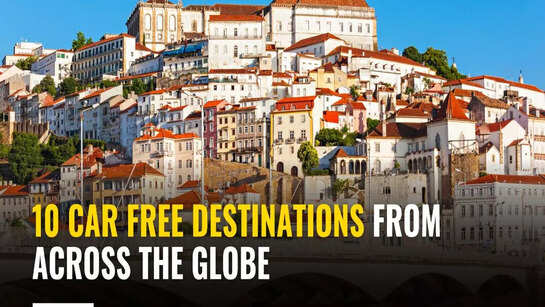
10 car free destinations from across the globe
Eligibility criteria for digital nomad visas in spain and italy, process of applying for spain's digital nomad visa.
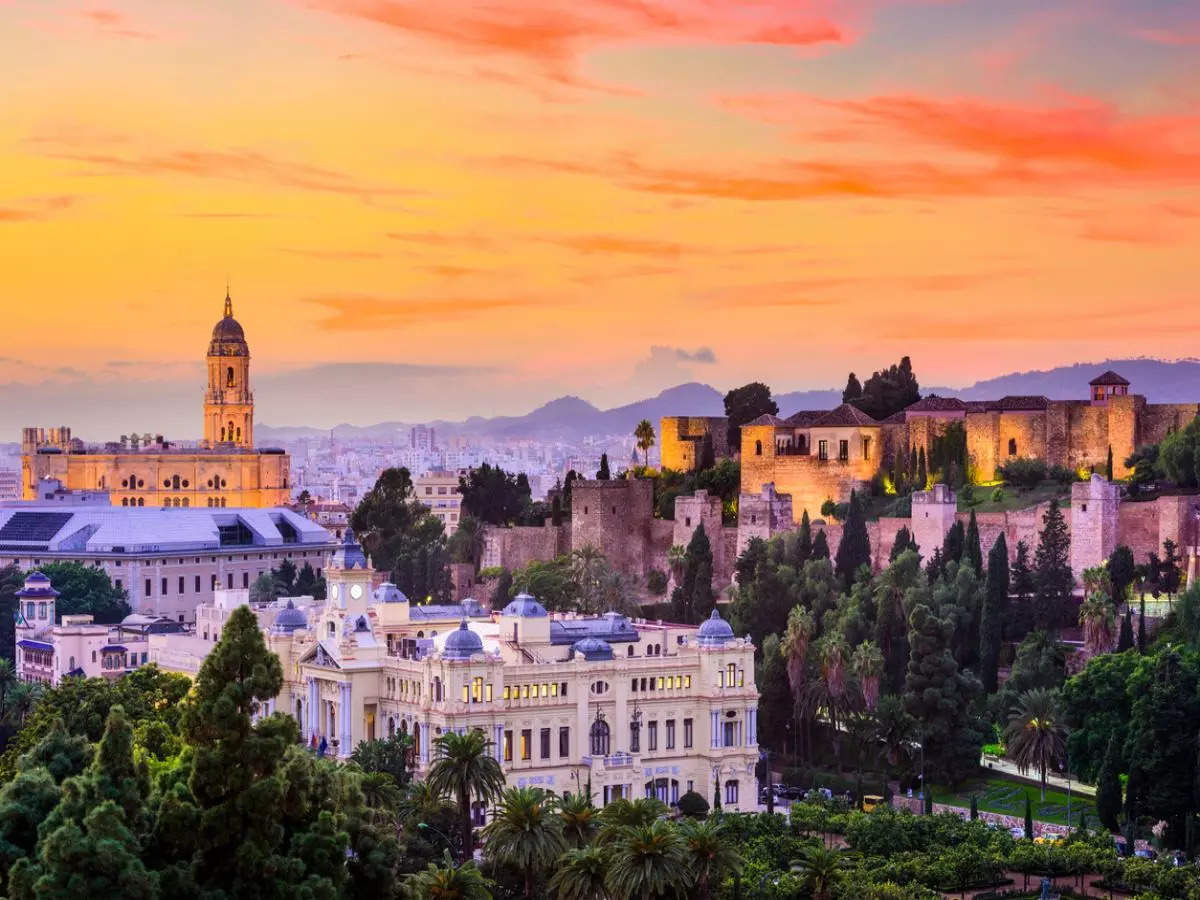
Process of applying for Italy's Digital Nomad Visa
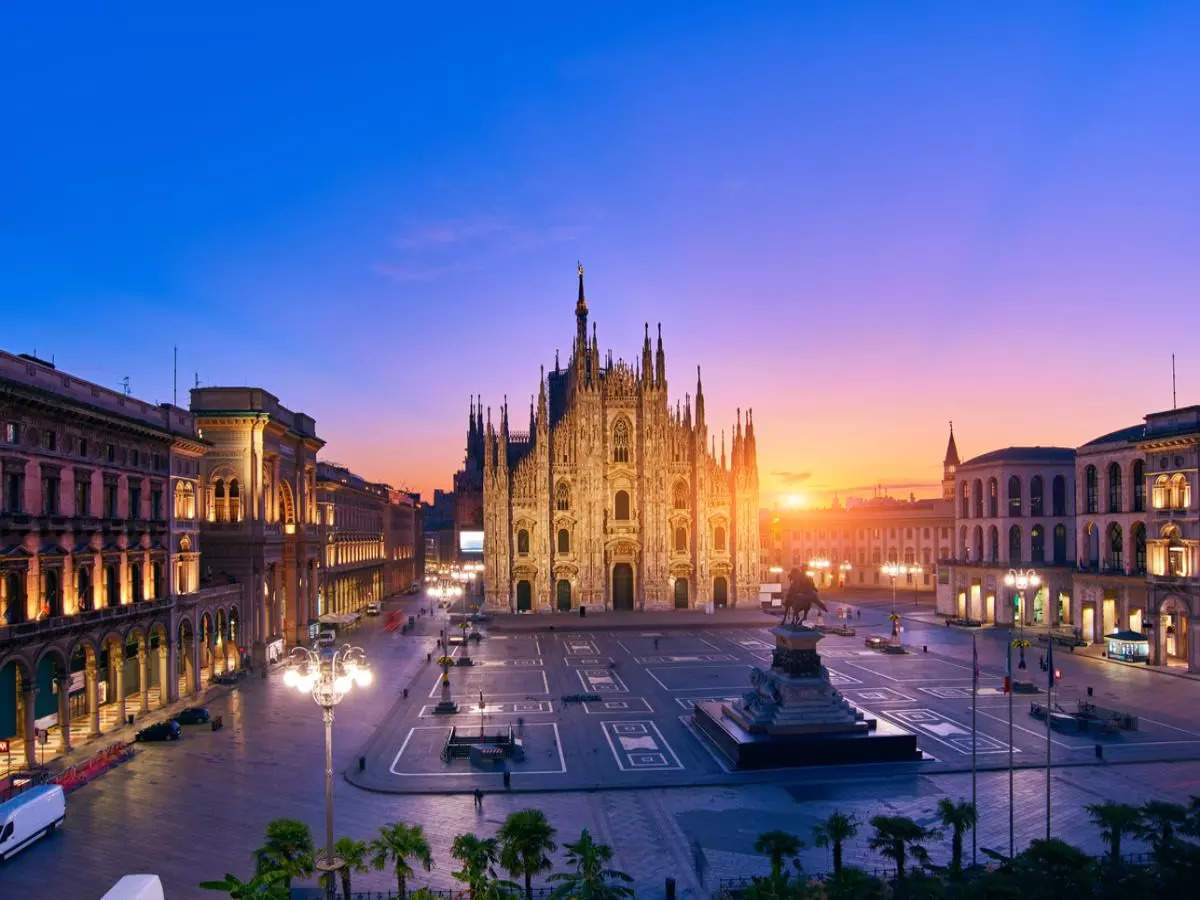
Family inclusion and renewal
Benefits within the schengen area, comments (0).

Refrain from posting comments that are obscene, defamatory or inflammatory, and do not indulge in personal attacks, name calling or inciting hatred against any community. Help us delete comments that do not follow these guidelines by marking them offensive . Let's work together to keep the conversation civil.
Comments ( ) Sort: Newest UpVoted Oldest Discussed Down Voted closecomments

SIGN IN WITH
Or post without registration.

Visual Stories
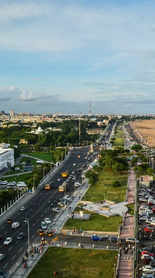
Popular Galleries
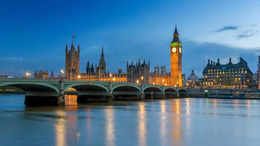
8 travel facts debunked: Facts or fiction? TRAVEL TRENDS , WORLD

5 benefits of visiting the Andamans in the off-season

Andhra Pradesh: Best places to add to your travel list TRAVEL TRENDS , ANDHRA PRADESH
Trending stories.
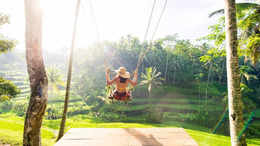
- Bali urges foreign tourists to get dengue fever vaccines amid increasing cases

Andhra Pradesh: Best places to add to your travel list

- New Schengen visa rules announced; longer validity and easier access to Indian nationals

8 travel facts debunked: Facts or fiction?

Kochi water metro ferries begin operations; connects High Court and Fort Kochi
- 1 Italy and Spain launch Digital Nomad Visa: what does it mean?
- 2 Delhi Airport ranked among world’s top 10 busiest airports: ACI report
- 3 Amarnath Yatra 2024: Pilgrimage to start from June 29, registration now open
- 4 Saudi Arabia: Deserts around Mecca and Medina are turning green due to heavy rainfall
- 5 700 species of wildlife discovered inside Cambodian mangroves!

THE DEFINITIVE GUIDE TO DESTINATIONS, ITINERARIES, THINGS TO DO, RESTAURANTS, NIGHTLIFE and LOTS MORE!
FOLLOW US ON
Places to visit.
- Places to visit in Bangalore
- Places to visit in Mumbai
- Places to visit in Delhi
- Places to visit in Goa
- Hotels in Goa
- Hotels in Jaipur
- Hotels in Shimla
- Hotels in Mumbai
Things To do
- Things to do in Goa
- Things to do in Mumbai
- Things to do in Bangalore
- Things to do in Delhi
Travel Inspiration
- Visa on arrival for Indians
- Honeymoon Places in india
- Hill Stations in India
- Weekend getaways in Mumbai
- Weather in Delhi
- Weather in Chennai
- Weather in Bangalore
- Weather in Mumbai
Best Beaches
- Goa Beaches
- Mumbai Beaches
- Pondicherry Beaches
- Kerala Beaches
- Restaurants in Bangalore
- Restaurants in Chennai
- Restaurants in Pune
- Restaurants in Jaipur
- Hill Station near Delhi
- Winter trip to Ladakh
- Places to visit in Kerala
- Winter Honeymoon Destinations
- UK visa guide for Indians
- Winter Trip to Manali
- Vaishno Devi Yatra
- Special Train Ticket Booking
- HP inter-state Bus
- Honeymoon Destinations India
Latest News
Congratulations.
You have been successfully added to the mailing list of Times of India Travel. To complete the subscription process, kindly open your inbox and click on the confirmation link which has been emailed to you.
Share with friends
Thank You for sharing! Your friend will receive the article link on email mentioned.
- (For more than one recipient, type addresses separated by commas)

As reported earlier, Italy recently introduced a visa program tailored for digital nomads, which will be enabling professionals to work remotely while immersing themselves in the country's beauty. Thi...

India travel trends: Search for spiritual destinations surges 97%, Delhi scores high in inquiries
S piritual destinations are stealing the show in India's travel market with such locations recording a 97 percent surge in searches in the last two years, according to an analysis by online travel aggregator (OTA) MakeMyTrip.
Searches for Ayodhya grew 585 percent, Ujjain by 359 percent and Badrinath by 343 percent in 2023 over the previous year, said the report launched by the OTA on April 22. Tier-2 and tier-3 cities are embracing spiritual journeys, it added.
The report also added that people taking more than three trips per year has grown by 25 percent in 2023 as compared to 2019.
Where India travels
On the international front, 30 percent of all foreign travel searches from India are for Dubai, Bangkok and Singapore, while London, Toronto and New York are the most searched long-haul destinations.
Searches for emerging international destinations grew by multi-fold in 2023 and the hot favourites include Hong Kong, Almaty, Paro, Baku, Da Nang and Tbilisi. Travel to unexplored destinations has increased which has led to over 30 percent growth in searches for 16 emerging destinations. As many as 31 unique destinations contribute to 60 percent of searches from all six metros including Bengaluru, Chennai, Delhi, Hyderabad, Kolkata and Mumbai.
Delhi NCR and Goa are the most searched destination from all six metros. Delhi has the highest share in terms of searches in 2023 at 11.4 percent, followed by Mumbai at 7.2 percent, Bengaluru at 5.4 percent, and Goa at 5.3 percent.
In the domestic flights category, tier II cities have emerged as the highest growth destinations. Lucknow, Thiruvananthapuram Indore and Bhubaneshwar lead with maximum searches.
Travel sentiment touched an all-time high in November 2022 with seven out of 10 people planning travel, the OTA said. It added that there has been 45 percent growth in searches as compared to the pre-pandemic period. As many as 100 million people are actively searching for travel on MakeMyTrip platform annually.
How India travels
Family travel bookings surged by 64 percent in 2023 as compared to 2022, followed by solo travel booking a 23 percent growth.
Two people travelling together make for 50 percent of all bookings.
Indians continue to make last minute travel plans with a significant portion of travel bookings in India are made spontaneously, with 46 percent of domestic flights booked less than a week before the travel date. On the other hand, about half of all international bookings are made at least two weeks in advance. Only one-third of international bookings are made more than a month before the travel date, suggesting a flexible approach to international travel planning among Indian travellers.
For flight bookings, women prefer to pre-book window seats and men pick aisle seats. Tomato cucumber cheese lettuce sandwich is the most ordered in-flight meal on domestic flights. Vegetarian Hindu meal is the most ordered in-flight meal on international flights.
Delhi travellers are over-indexed on booking domestic flights less than a week ahead of travel date while travellers from Kolkata have a higher inclination to book flights over three months in advance for both international and domestic destinations.
Where India stays
Alternative accommodations including homestays and villas recorded 24 percent growth in bookings in 2023 on MakeMyTrip as Indians are searching for stays that provide an emotional connection with culture and nature, the platform said.
Hostels and apartments recorded maximum search growth of 39 percent and 31 percent respectively in 2023.
For hostels and apartments, the preference is for those properties which cost less than Rs 2,500 per night but for villas, it is higher. Close to 20 percent of family travellers searched for properties with tariffs over Rs 10,000 per night last year.
More than 50 percent of the family travellers and 75 percent of the solo travellers booked a property for stay below Rs 4,500 .
Weekend getaways emerged as the highest growth destinations in the domestic hotels category. Jim Corbett leads with 131 percent growth in searches on MakeMyTrip followed by Ooty and Munnar. A large number of these hotel customers are driving to these destinations from nearby metros.
People from Maharashtra contribute to highest domestic hotel searches. Travellers from Maharashtra, Kerala and Karnataka searched more for villas while maximum searches were done for hostels in Himachal Pradesh, Uttarakhand and Goa.


IMAGES
VIDEO
COMMENTS
Nomads of India is an online platform that provide lists of adventure backpacking tours, awesome treks, trekking events, and travel organizations across India with information on various treks. ... Explore the Nomads of India Travel Blog. Mar 19. Travel For Free: The Ultimate Guide.
The settlement of Kharnakling, outside Leh, the capital of the Ladakh region of India. Around 120 families of Kharnak nomads have moved into the settlement over the past 20 years.
The best time to travel to India is November to March, which are the coolest and driest months of the year, considered winter and considered by many to be the best time to visit India. ... Living Nomads celebrates and is inspired by explorers and their passion for travel, curiosity about the world and unique points of view. Travel is eye ...
Coworking Spaces. Hyderabad is never short of well-equipped coworking spaces that cater to the needs of digital nomads, whether they are working on a monthly or hourly basis. Among the best are Regus, Innov8, CoWrks Skyview, and Nano Space. 3.
India's Lost Nomads. India's 80 million wanderers are torn—clinging to centuries-old traditions while the modern world strips their identities away. This story appears in the February 2010 ...
India is a colorful palette of contrasts, but despite—or in light of—its own challenges, it is a unique destination that always keeps you on your toes and feeling alive. 3. Affordability & Laid-Back Lifestyle. India is perhaps one of the cheaper countries for digital nomads in the whole world.
India travel itinerary 10 days — Day 10: New Delhi - Saigon. Today we also just went to coffee, lightly hanging out because we were quite tired after the trip, then waited until evening to fly back to Saigon ^^. ... Living Nomads celebrates and is inspired by explorers and their passion for travel, curiosity about the world and unique ...
India has fully reopened for international travellers following a 2 year Covid-19 related ban. Though the pandemic wasn't a time for travel opportunities, it has changed the way many of us work.
In a part of northeast India, known as the "Scotland of the East" for its rolling green hills, the indigenous Khasi people favor Western rock and roll over Bollywood, and their youth are YouTube stars in the making. ... ABN 83 169 311 193, NZBN 9429041356500. nib Travel Services Europe Limited trading as nib Travel Services and World Nomads ...
India Travel Guide: Need-to-Know Travel Practicalities. Currency of India: Indian Rupees (INR) is the currency of India. As of October 2023, USD 1 = 83 Indian Rupees (Euro 1 = 88 Indian Rupees). Sim Card in India: The most powerful internet connectors all over India are Jio and Airtel (prepaid). Only for the Ladakh-Jammu-Kashmir region, you ...
We at Nomad Travels understand and know India. And we love to show it off! We organize cultural and architectural tours, motorcycle and camel safaris, wild life sanctuary visits and a variety of custom designed itineraries. Besides all this, we also offer tours to some striking international destinations: take a look at our 15 day self-drive ...
Nomad Stays accommodation in India. Created by digital nomads for digital nomads. Affordable, digital ready, longer stay accommodation options for remote workers who travel. Instantly confirmed hotels, apartments, hostels, aparthotels and coliving with great wifi and coworking.
Three Places in India to Start As A Digital Nomad—Ladakh—Munnar—Aizawl. ... India is an incredible travel destination offering numerous facilities and benefits for digital nomads and ex-pats ...
A practical guide to living and remote work in India as a digital nomad. From urban centres to more secluded offbeat destinations, we've got you covered. ... Buses, auto-rickshaws, and app-based cab services like Ola and Uber ensure that intra-city travel is rarely a hassle. For inter-city travels, the vast railway network is a reliable ...
India offers an eTourist Visa (Tourist e-Visa) with varying durations of 30 days, one year, and five years, which cannot be renewed. However, regardless of the visa duration, foreigners must exit and re-enter India every 90 days. Citizens of the USA, Canada, and Japan can obtain a tourist visa for up to 10 years, requiring them to leave and re-enter every 180 days.
Cost of Living in Goa for Digital Nomads . I was quite surprised to discover how affordable Goa is for digital nomads considering the state is one of the most popular for tourists in India.. Compared to popular nomad destinations in Mexico—where we've been based on and off for the last five years—monthly rentals here (specifically in Goa) cost about one-half or even one-third of the price!
In this article, we will explore the benefits and challenges of being a digital nomad India as well as some of the best places to work remotely while traveling through this fascinating country. Benefits of Being a Digital Nomad in India Low Cost of Living: Work and Travel on a Budget. Being a digital nomad in India can be incredibly cost-effective.
LGBTQ+ Travel in India - What To Know Before You Go. Find out about the complicated legal status of LGBTQ+ locals, attitudes towards public displays of affection, and safety tips for LGBTQ+ travelers in India. ... NZBN 9429041356500. nib Travel Services Europe Limited trading as nib Travel Services and World Nomads is regulated by the Central ...
Digital Nomad Life in GOA, INDIA | Work and Travel This YouTube video is a guide by a traveler who found Goa to be an ideal destination for remote workers. After traveling in northern India, the vlogger sought peace and serenity in the south, discovering Goa's suitability for digital nomads due to its affordability, safety, sunny weather, and ...
Visa guidelines on duration of stay for Digital Nomads in India. For digital nomads coming to India, you can avail of a 1-year multiple-entry business e-visa or a 1 or 5-year tourist e-visa with a maximum 180-day stay at a time. Note that if your stay exceeds 180 days, you can apply for a visa extension in India on the websites of a Foreign ...
Organizations Offering Volunteer Travel In India However, if you don't intend to go through the websites and want to contact the organization directly, then here are a few options you can consider: 1) Ecosphere Spiti, Himachal Pradesh: Spiti is one place that is found in every traveller's wish list.
In this episode of the Skift India Travel Podcast, Mayur Sontakke, the founder of NomadGao, a co-living and coworking space for digital nomads, talks to Asia Editor Peden Doma Bhutia about the ...
Description. She-Traves has been exclusively created to make travelling solo safer in India & across the world by offering exclusive women-only travel groups. You have reached the right destination if you are looking for safe and healthy women travel groups across India. We aim at providing safe women-only trips to girls travelling solo across ...
This Is The Latest Travel Trend In India. Image: Unsplash. The MakeMyTrip 'India Travel Trends Report' dived into travel behaviours based on insights from its users. Image: Unsplash. The report ...
In a recent poll from Monmouth University, one-third of Americans said they'd like to settle in another country, compared with just 12% who said the same in a 1995 Gallup poll. In InterNation's ...
Bulbul Dhawan. Indian travelers have an increased interest in weekend getaways and spiritual tourism, according to online travel agency MakeMyTrip's first-ever travel trends report. Searches for ...
Türkiye introduces digital nomad visa, allowing remote workers to explore Turkey's beauty. This aligns with Italy and Spain's programs. Eligibility includes university degrees, $36,000 annual ...
The EU's 'cascade' visa scheme for Indian citizens offers extended validity multiple-entry visas, strengthening ties with India. This initiative simplifies travel within the Schengen area and ...
As per the Italian Government's definition, a digital nomad is a non-EU citizen who is involved in "highly qualified work activities." These individuals can operate as employees of a company, self ...
Lucknow, Thiruvananthapuram Indore and Bhubaneshwar lead with maximum searches. Travel sentiment touched an all-time high in November 2022 with seven out of 10 people planning travel, the OTA said ...